Abandoned C
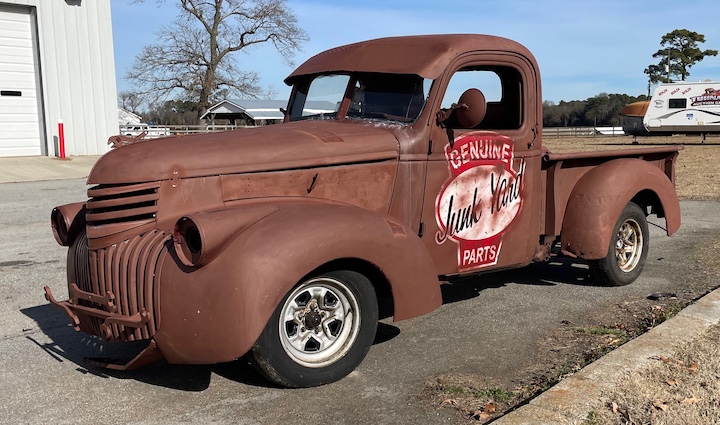
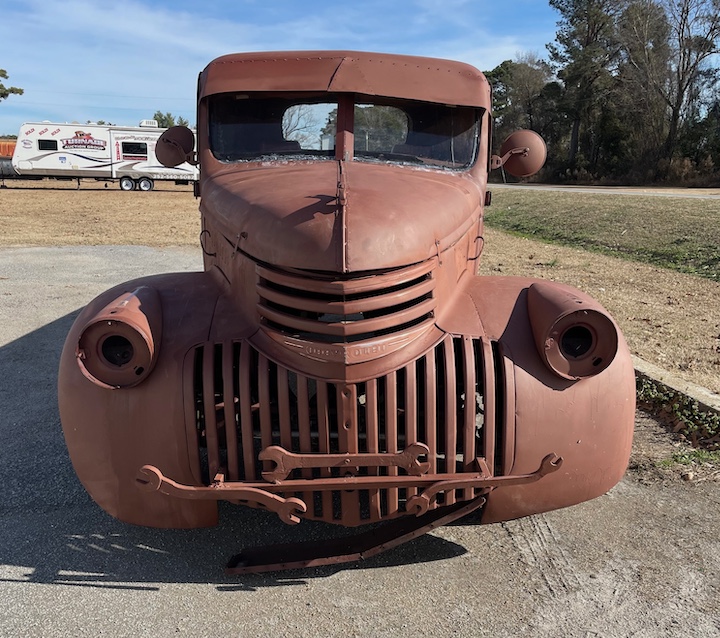
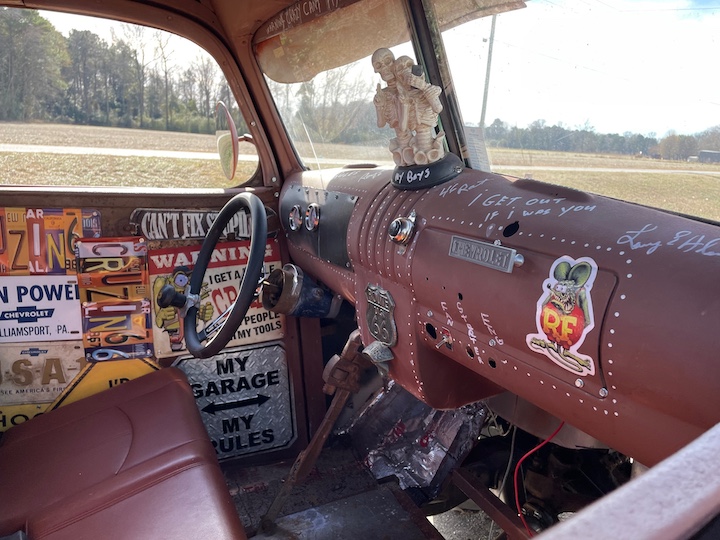
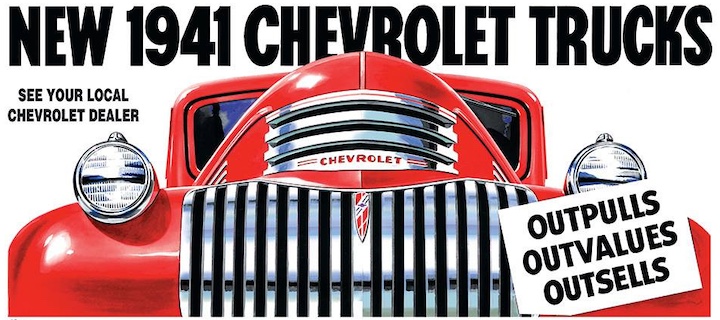
CHEVROLET (1941) — 1941 was the first year of a new look for the Chevrolet pickup, using a split-grille front end design popularized by the 1939 Dodge truck. That truck was built into 1947 when Chevrolet introduced its first all-new truck following World War II. This 1941 truck used as a "business sign" was found in eastern North Carolina. (Photos by Jim Meachen)
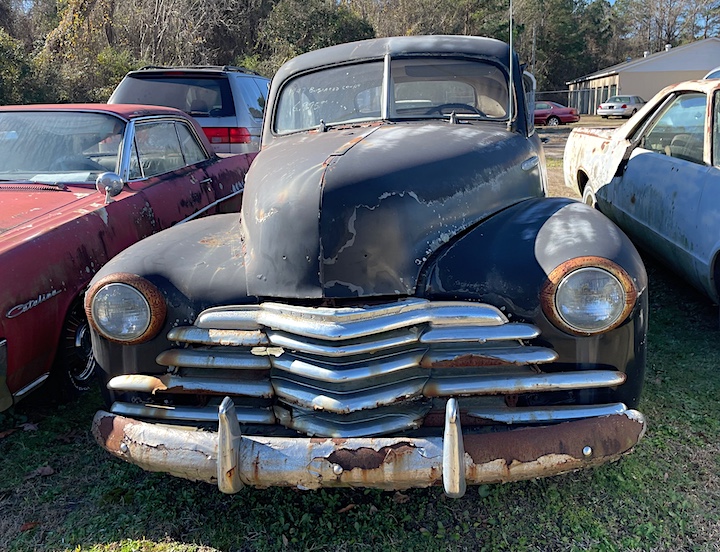
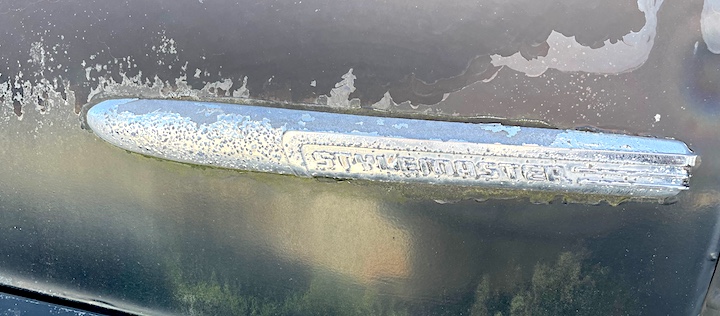
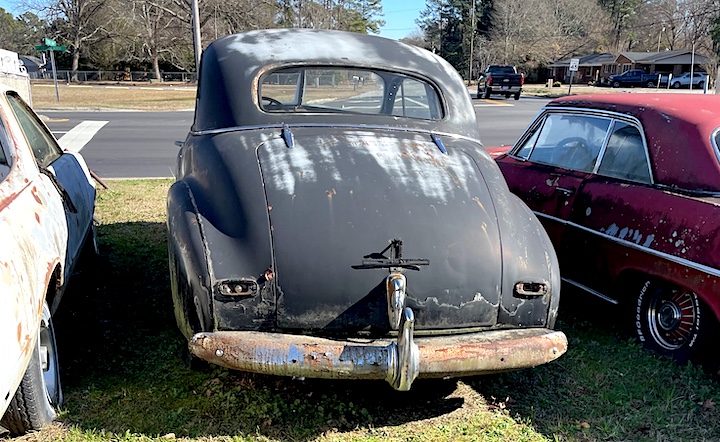

CHEVROLET (1947) — In 1947, Chevrolet offered 11 models in three series — the top trim Fleetline, Fleetmaster and Stylemaster. Chevrolet advertised that "every model brings you the great plus value of
Chevrolet's traditional economy of operation and low cost of maintenance." The base trim Stylemaster was powered by a 216.5 cubic inch straight six mated to a three-speed manual transmission. This Stylemaster was found in eastern N.C. (Photos by Jim Meachen)
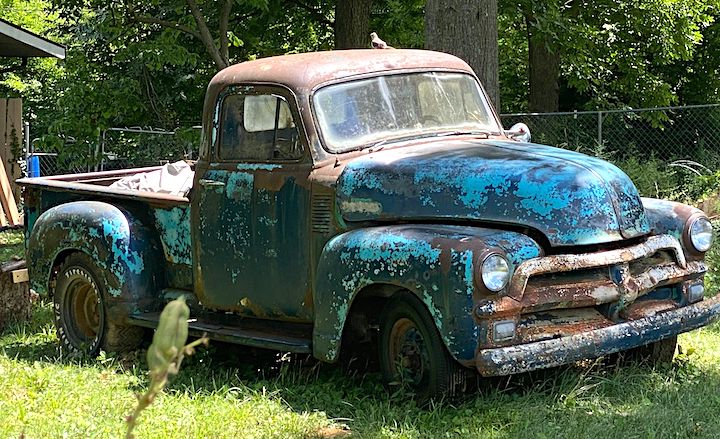
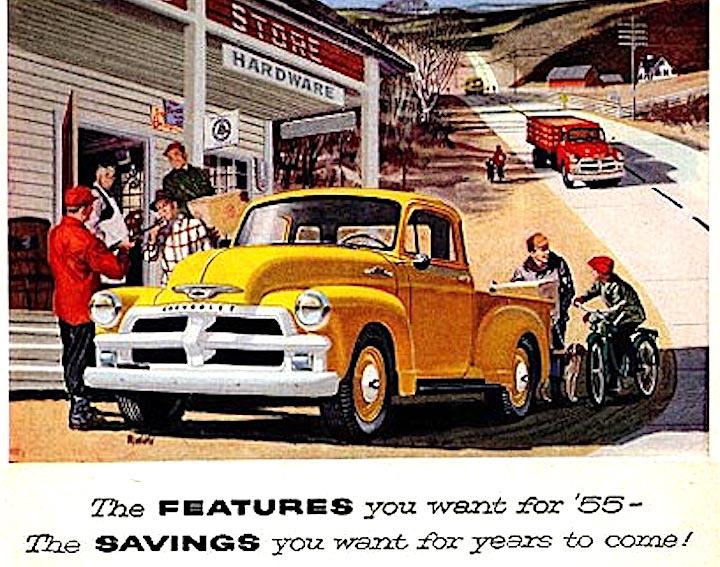
CHEVROLET (1954-55) — 1954 marked the first significant design changes in the Advance Design Chevrolet truck that was first introduced in 1947. The 1954 truck had a curved one-piece windshield for the first time. The grille changed from five horizontal slats to a crossbar design commonly referred to as a "bull nose" grille. A Hydramatic automatic transmission was available for the first time as an option. The design lasted for only two years with the Chevy pickup getting a complete makeover in 1956. This 1954-55 truck was found in Nelson County, Ky. (Photo by Jim Prueter)
CEVROLET (1947-48) — This 1947 or 1948 Chevrolet Thriftmaster pickup was spotted sinking into the ground in a front yard near Austin, Texas. The pickup was completely redesigned in 1947 and carried the Thriftmaster or Loadmaster emblems through the early part of 1949. The designations were dropped in 1949 in favor of numbers that designated cargo capacity: 3100 on half-ton, 3600 on three-quarter ton and 3800 on one ton. (Photos by Jim Meachen)
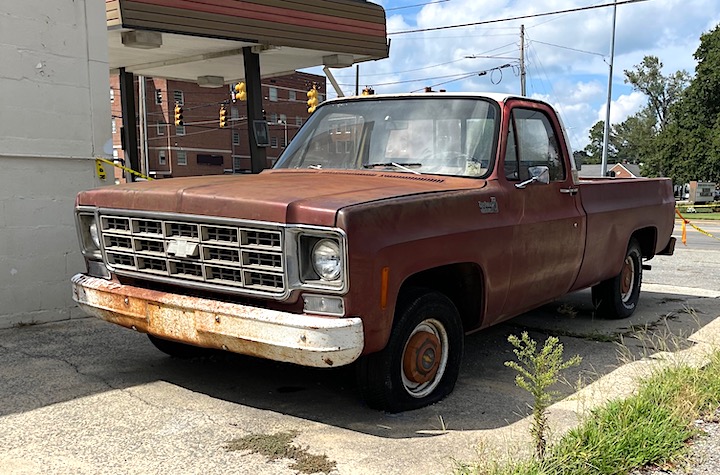
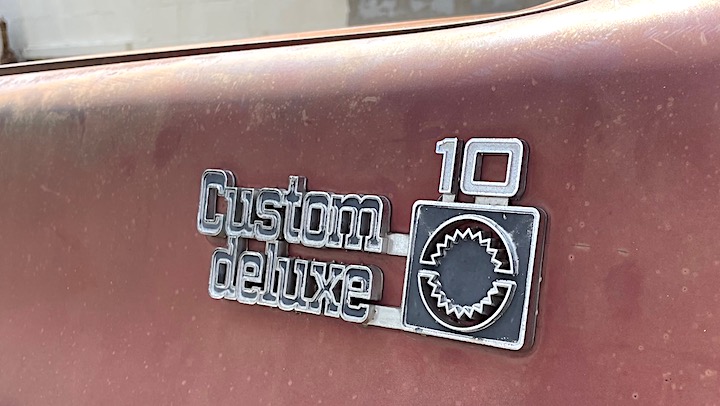
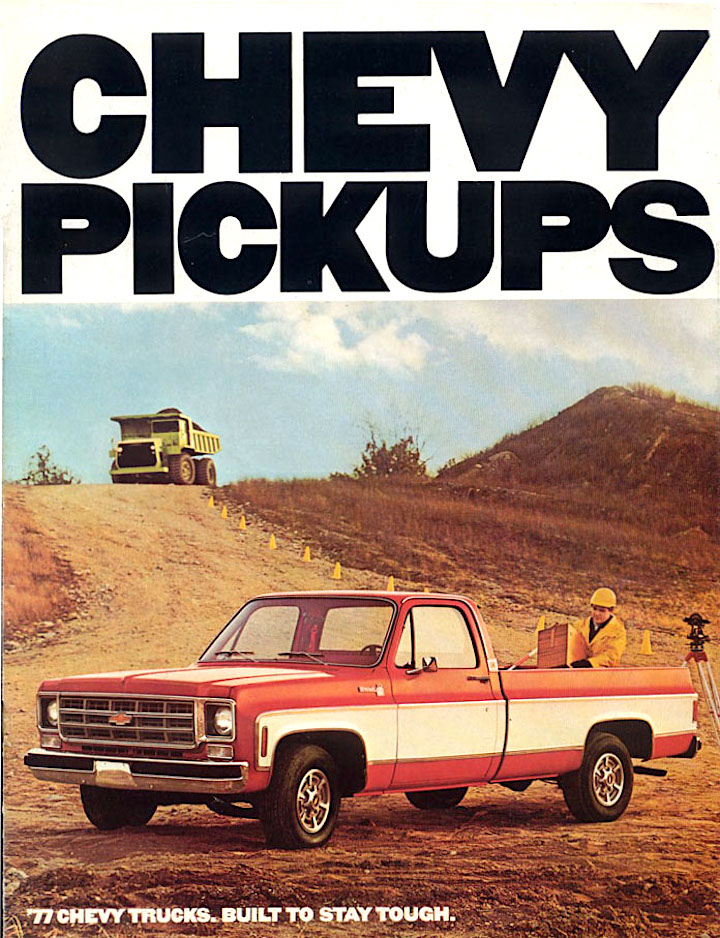
CHEVROLET (circa 1977) — This circa 1977 Chevrolet C-10 pickup was discovered in a rusted condition next to a boarded-up service station in eastern North Carolina. The 1977 model was part of the third generation manufactured from 1973 to 1991. It could be ordered with a variety of 6-cylinder and 8-cylinder engines and 3-and 4-speed automatic transmissions. A manual shifter was also offered. (Photos by Jim Meachen)
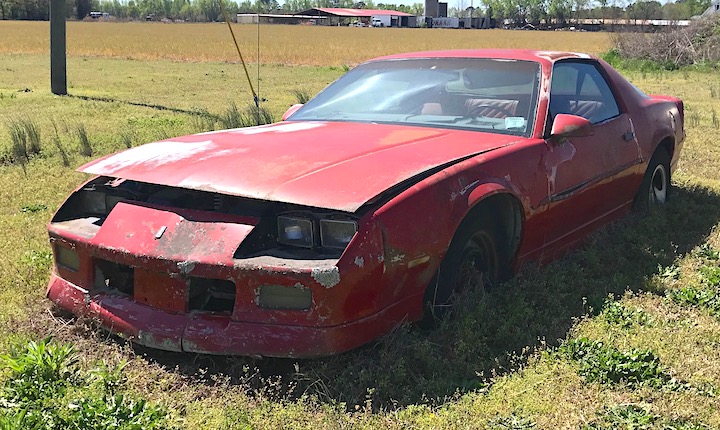
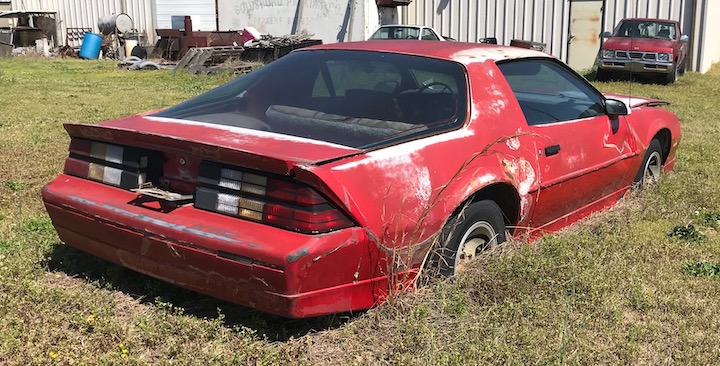
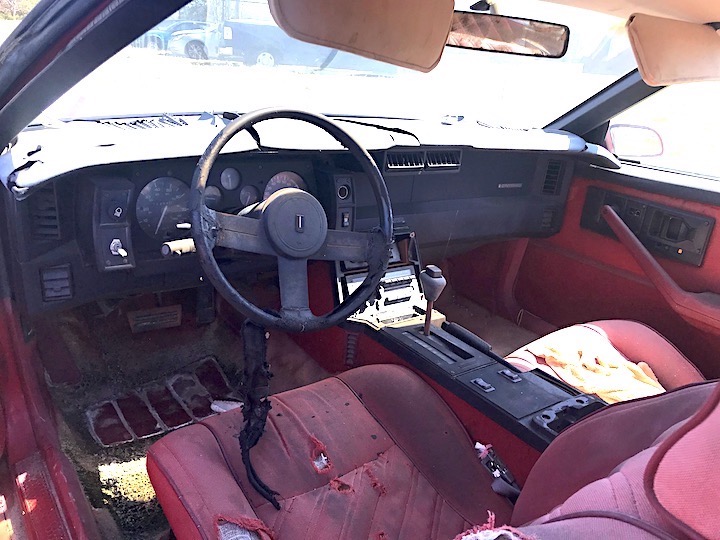
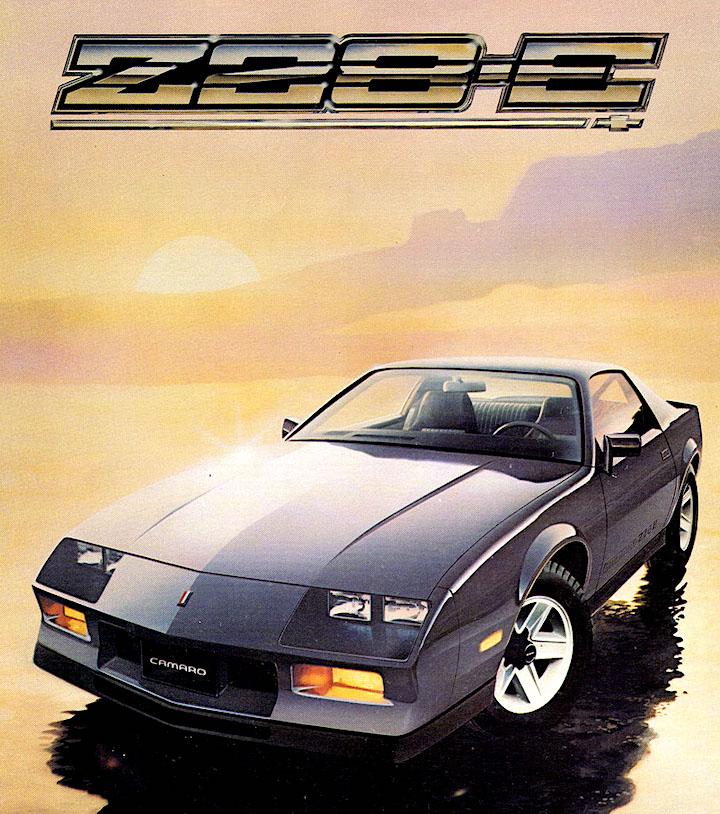
CHEVROLET (circa 1984) — This circa 1984 Chevrolet Camaro found in eastern North Carolina is part of the third generation Camaro built from 1982-1992. The third-generation Camaros were the first to offer modern fuel injection and a hatchback body style. (Photos by Jim Meachen)
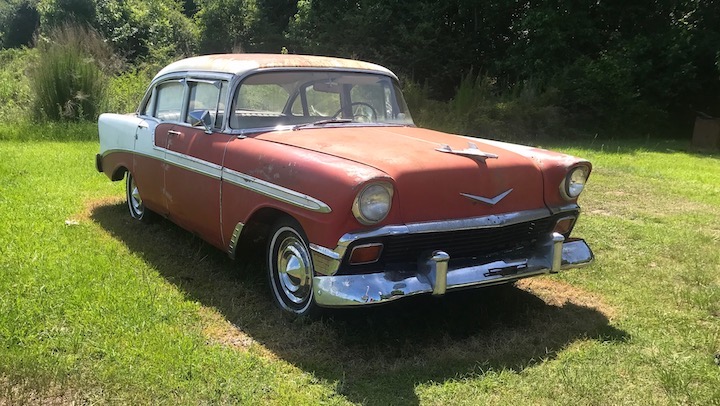
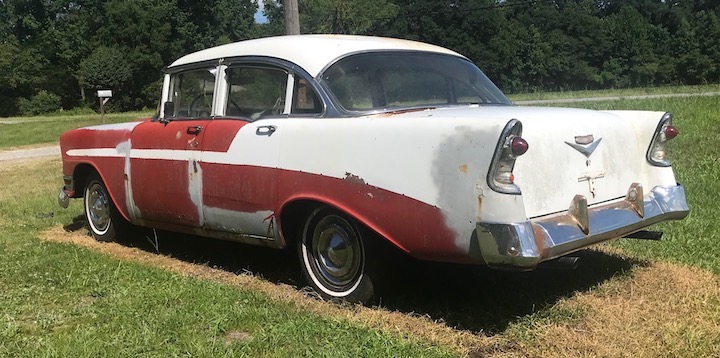
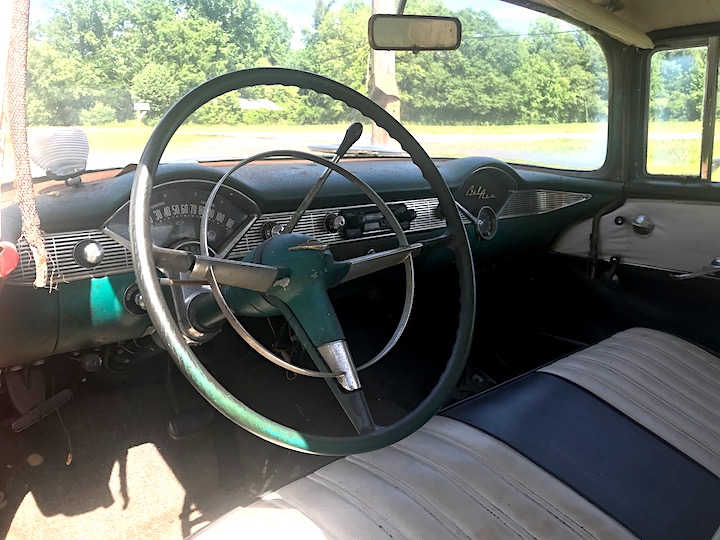
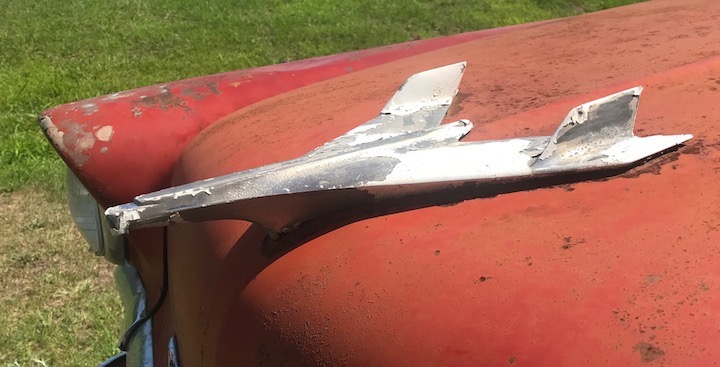
CHEVROLET (1956) — Chevrolet led in outstanding, desirable design in the mid 1960s. An example is the 1956 Chevy sedan. The '56 came in three trim levels — 150, 210 and the premium Bel Air. This four-door Bel Air sedan was the most popular, with 269,798 units sold. The most powerful engine was a 4-barrel Turbo-Fire V8 with dual exhausts rated at 205 horsepower. This example was found in Grifton, N.C. (Photos by Jim Meachen)
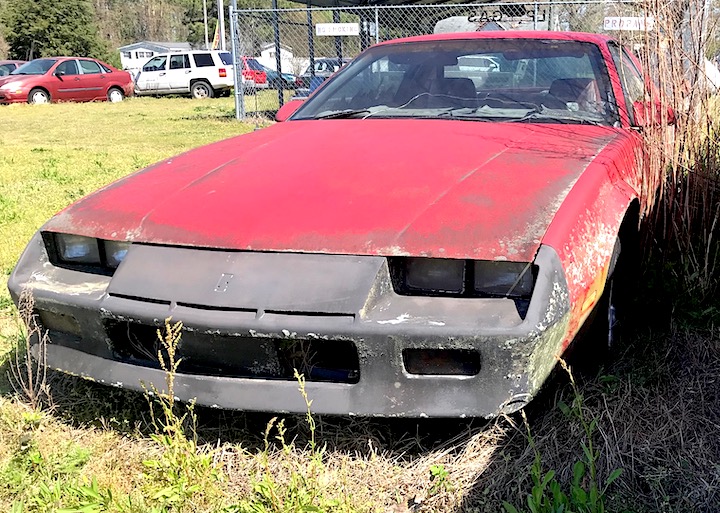
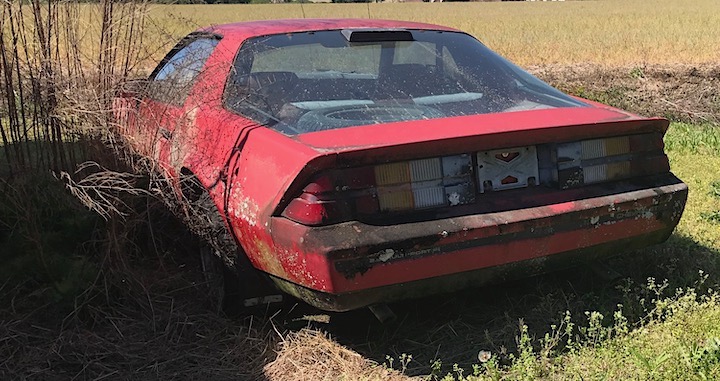
CHEVROLET (circa late 1980s) — This late 1980s Chevrolet Camaro was found languishing behind a repair shop in eastern North Carolina. This model was part of the third generation Camaro that was built from 1982-1992. The third-gen Camaro design owed nothing to previous generations — the large and complex rear window showed off advances in car glass design. The front windshield reclined at 62 degrees, thus breaking an internal GM rule limiting such angles to 60 degrees. (Photos by Jim Meachen)
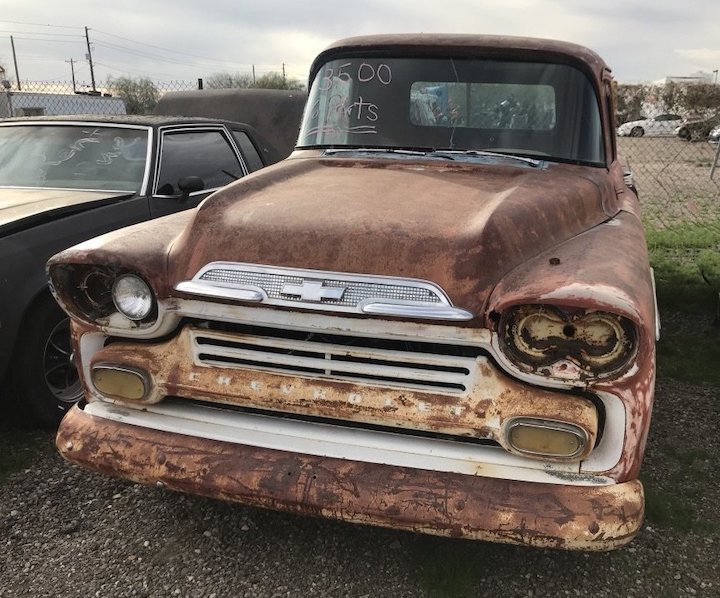
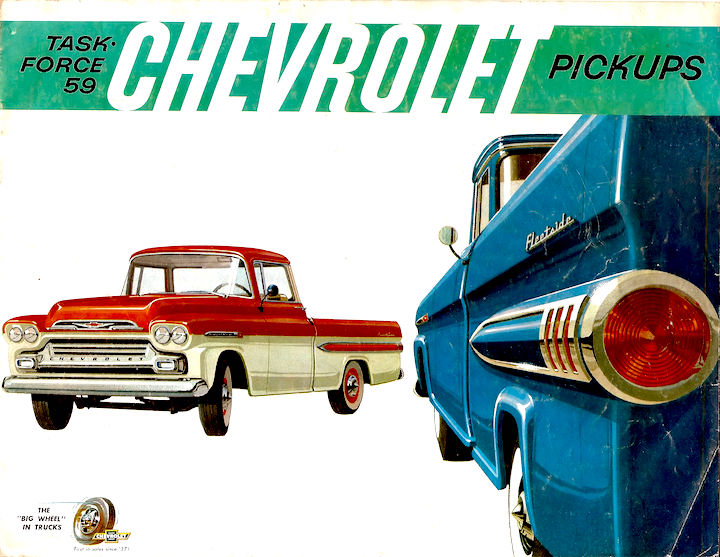
CHEVORLET (1959) — This 1959 Chevrolet Apache pickup was discovered in Arizona. The 1959 model was the last of the second series of the so-called "Task Force" trucks. The C/K series replaced the Task Force in 1960. The'59 pickup could be purchased with a choice of two inline 6-cylinder engines or three V-8s. Three transmissions were offered in1959, a 3-speed or 4-speed manual, or a 4-speed Hydramatic automatic transmission. (Photo by Jim Prueter)
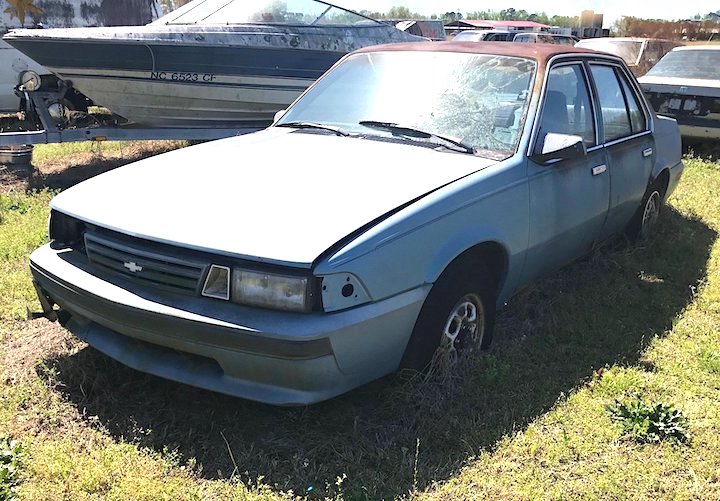
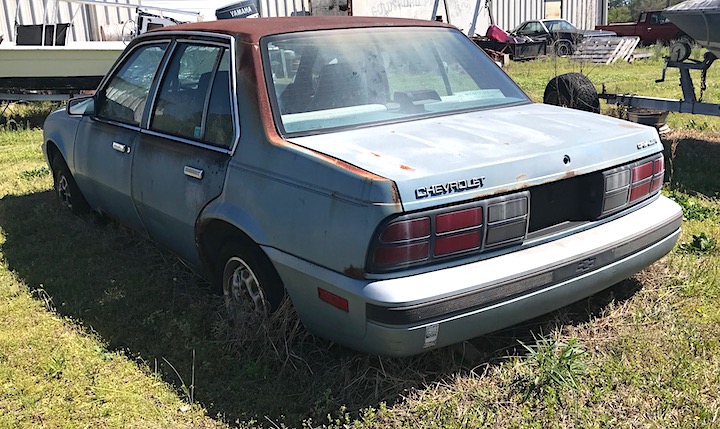
CHEVROLET (1990) — This second generation circa 1990 Chevrolet Cavalier was spotted behind an auto repair shop in eastern North Carolina. The 1990 Cavalier got an upgraded base 2.2-liter 4-cylinder engine making 95 horsepower. The optional V6 engine was also upgraded to 140 horsepower. The Cavalier was sold in the U.S. from 1982 through 2005. Chevrolet replaced the Cavalier with the Cobalt in 2006. (Photos by Jim Meachen)
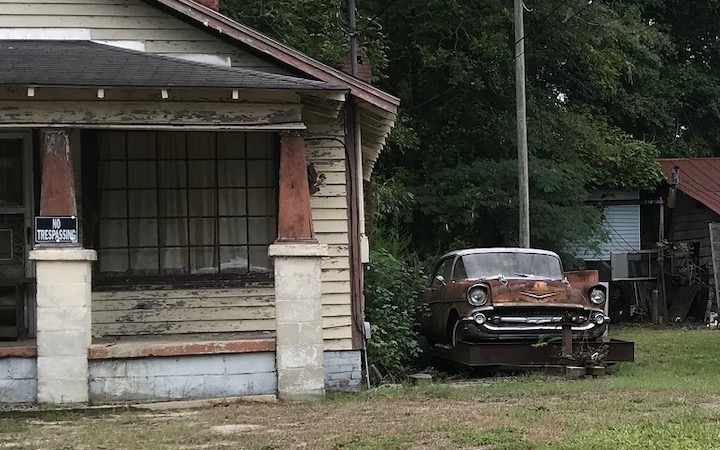
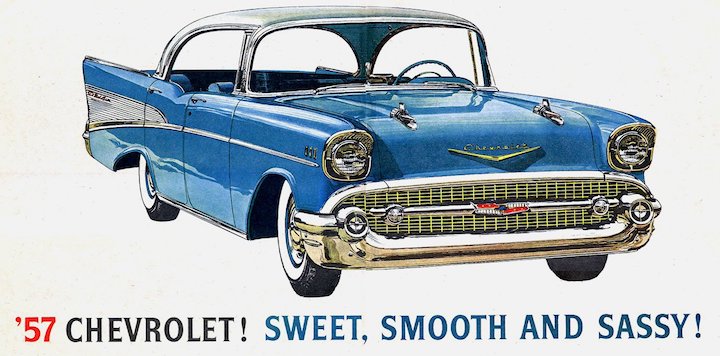
CHEVROLET (1957) — The iconic 1957 Chevrolet is a good vehicle for restoration. But sometimes purchasing a '57 for future reconditioning turns out to be something just out of reach, resulting in an old rusted car sitting in the yard. This could be the case for this 1957 Chevy that apparently has never left the trailer it was brought in on. (Photo by Jim Meachen)
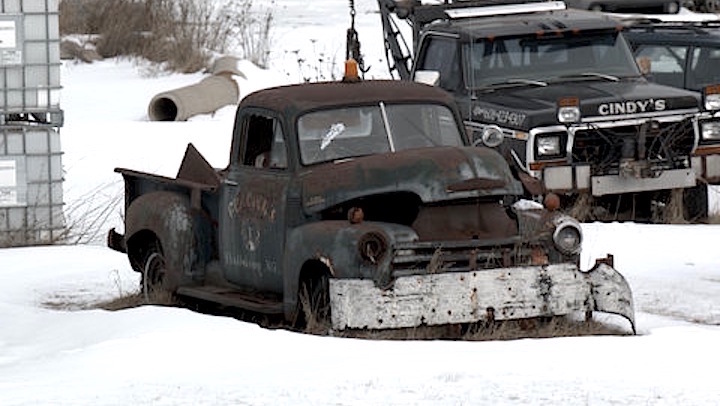
CHEROLET (post war) — This post-war Chevrolet pickup, its duties at an end, lives in retirement during a Wisconsin winter. For several years after its 1947 redesign, Chevrolet was the number one truck in sales in America. (Photo by Jerry Brown)
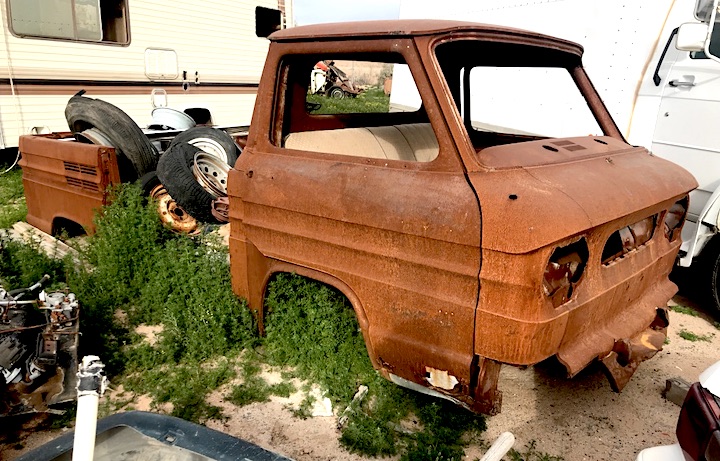
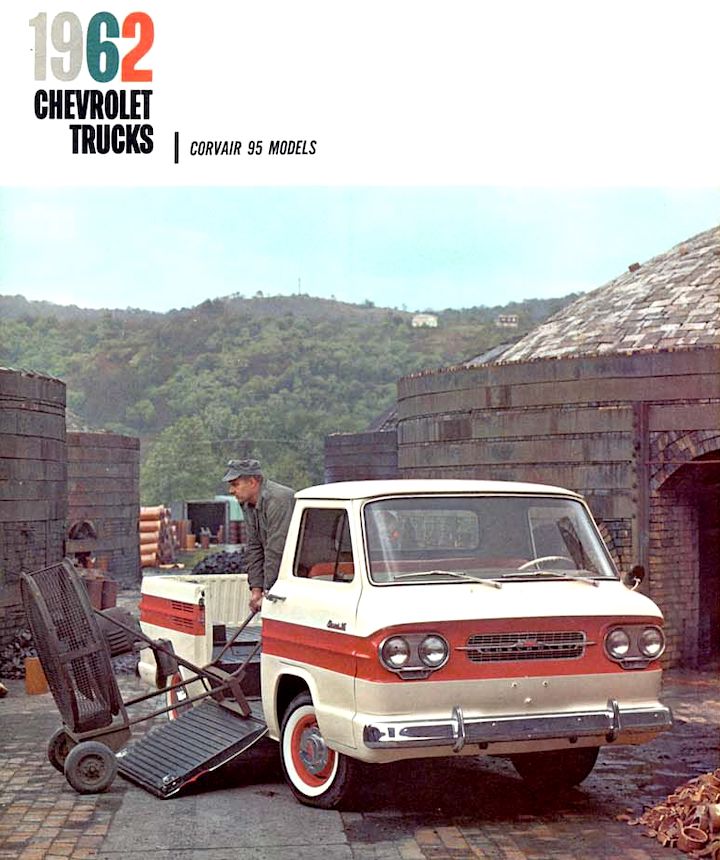
CHEVROLET (Circa 1961-1964) — Chevrolet took its small 1960 Corvair lineup in several directions including a light-duty truck introduced in 1961 featuring Loadside and Rampside models. Like the car, the truck featured a rear-mounted air-cooled 80-horsepower flat-six engine. The truck was built through 1964. This skeleton of a Corvair pickup was found in an Arizona salvage yard. (Photo by Jim Prueter)
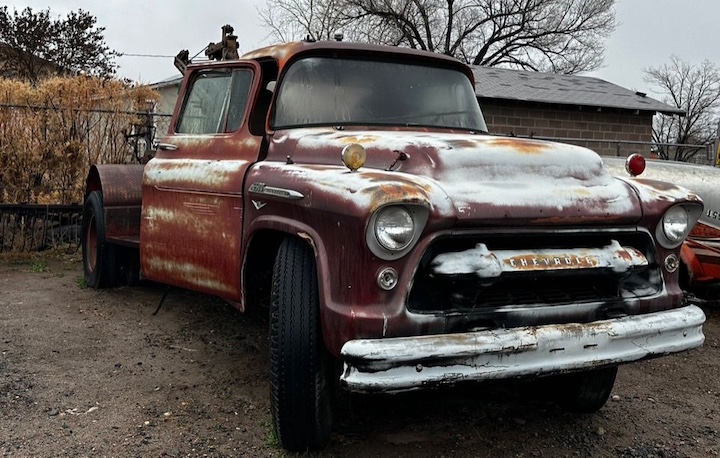
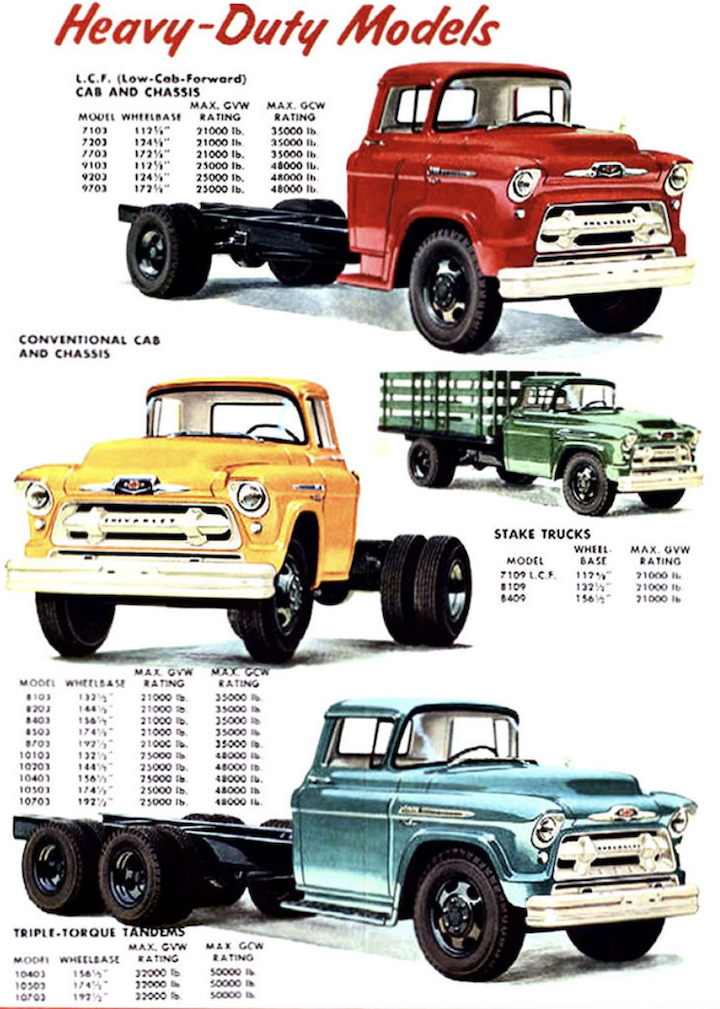
CHEVROLET (1956) — This 1956 Chevrolet tow truck was found in retirement in an Arizona salvage yard. A Chevrolet ad proclaimed "each 1956 Task-Force truck has the distinctive styling that is best suited to its proportions and the work it is designed to do." Above, a Chevrolet advertisement lists its 1956 heavy-duty models. (Photo by Jim Prueter)
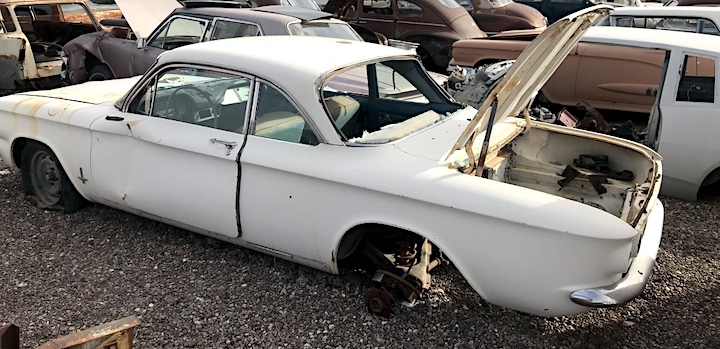
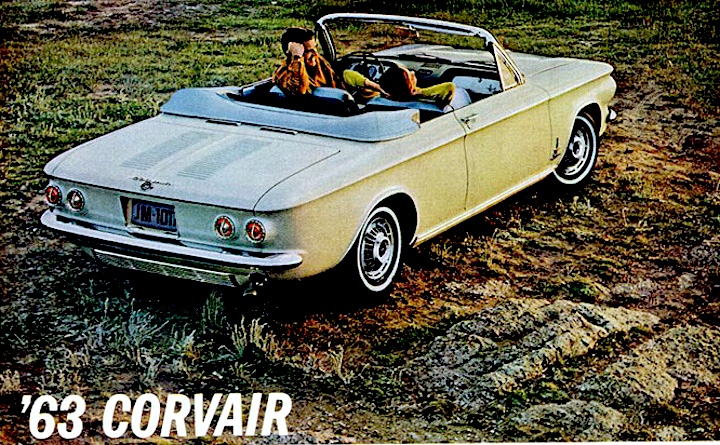
CEVROLET (early '60s) — This early 1960s rear-engine Chevrolet Corvair two-door has been robbed of its powerplant at an Arizona salvage yard. The Corvair was built from 1960 through 1969 in two generations. Total production was 1.8 million. The missing engine was probably a 2.3-liter air-cooled six cylinder. (Photo by Jim Prueter)
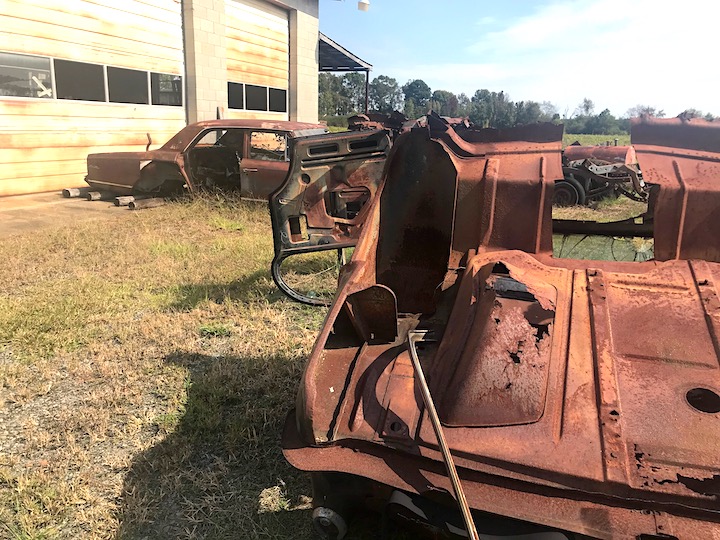
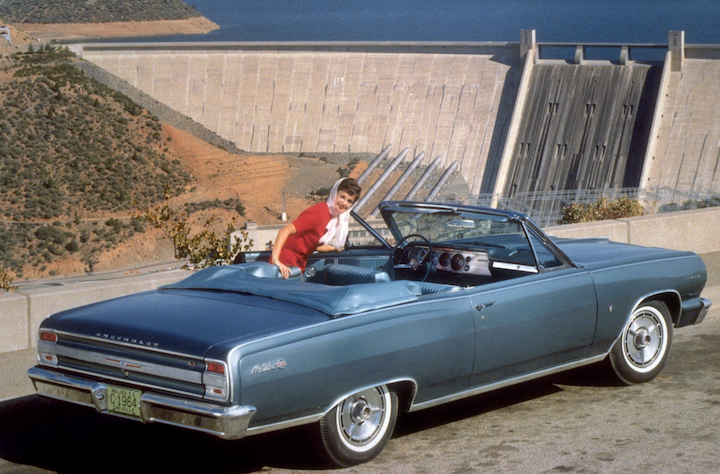
CHEVEOLET (mid 60s) — Chevrolet started using the Malibu name in the mid -60s on the compact Chevelle, and these Malibu remains come from two mid-1960 models. Beyond salvaging even for parts, these steel structures rust away in an eastern North Carolina driveway. (Photo by Jim Meachen)
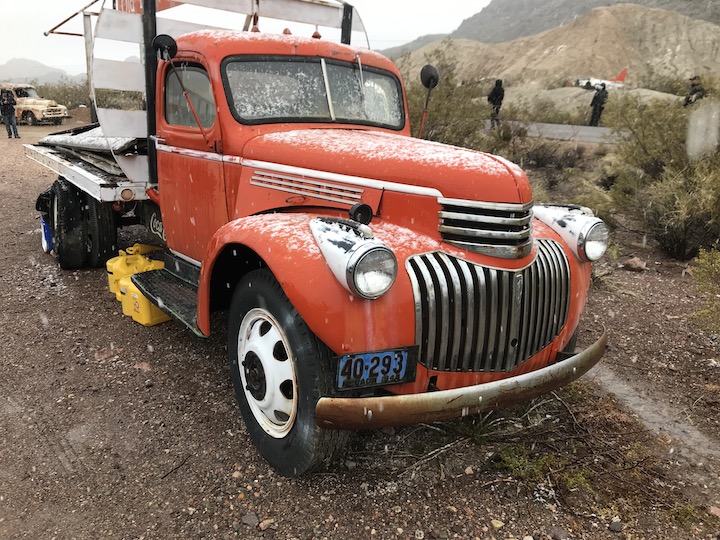
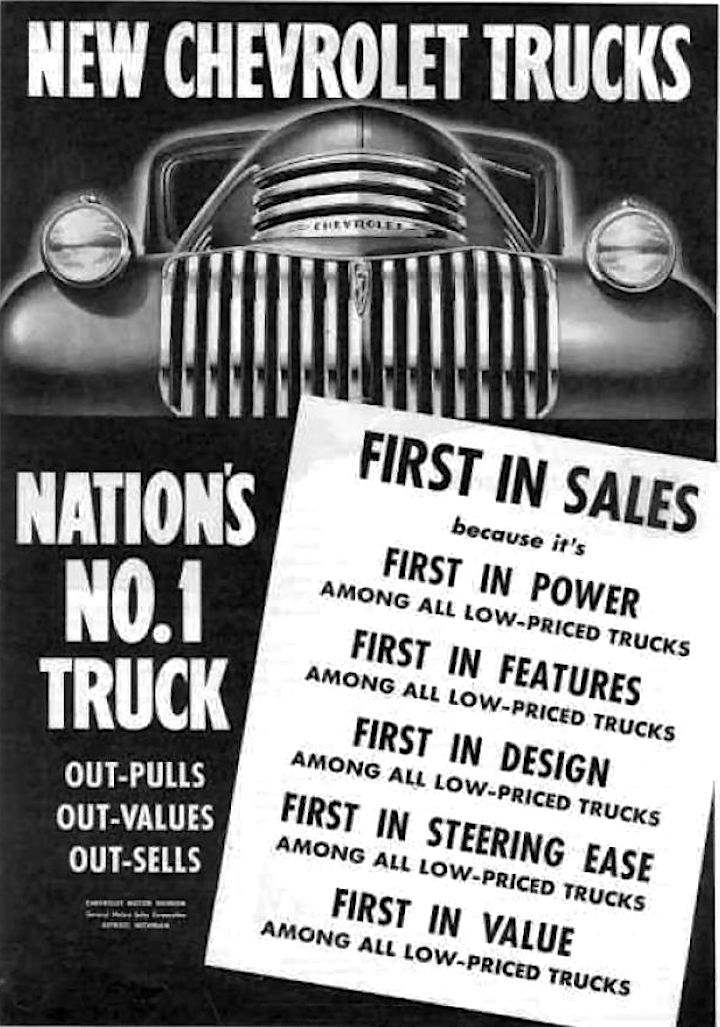
CHEVROLET (1941) — This 1941 Chevrolet truck found in Nevada represents Chevy's last new truck design before production was suspended for World War II. Production of the truck for public use was restarted for the 1946 and 1947 model years. (Photo by Jim Prueter)
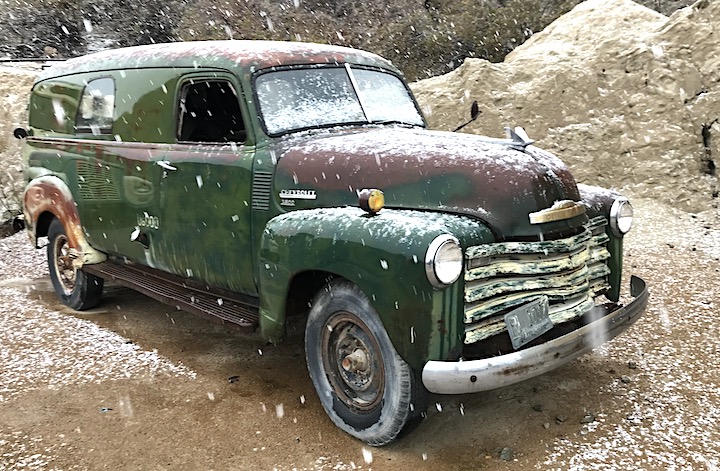
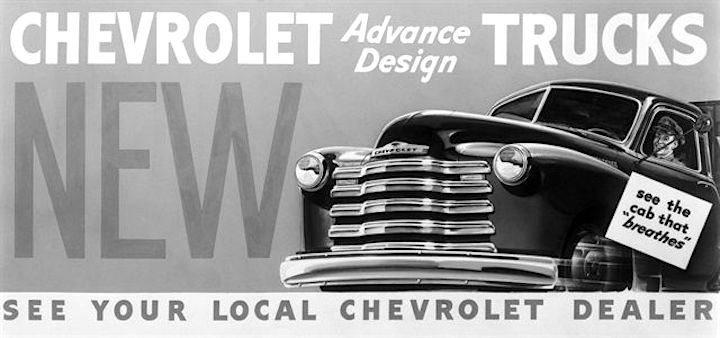
Chevrolet beat Ford to the punch following World War II with the first new American pickup truck design of the 1940s. Launched on June 28, 1947, Chevrolet called its new series of trucks the Chevrolet Advance Design . Chevrolet promoted them as being larger, stronger, and of sleeker design in comparison to their pre-war truck models. The design was so good Chevy the trucks largely unchanged from 1947 until 1955. This copy was found languishing in the snow in Nevada. (Photo by Jim Prueter)
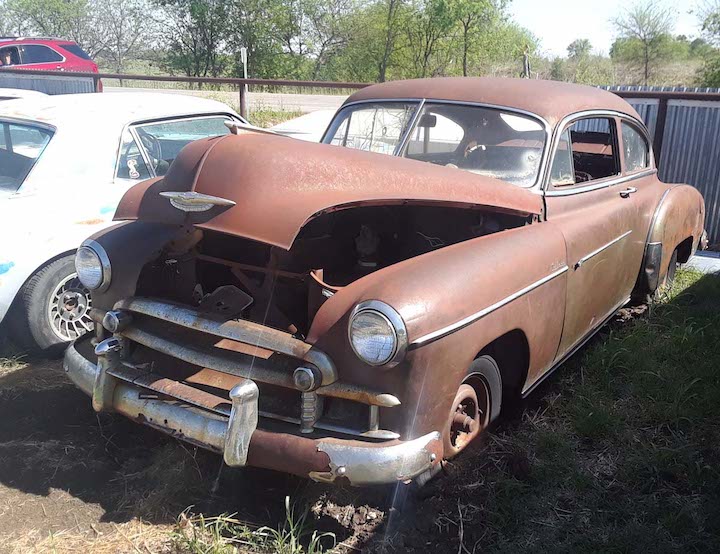
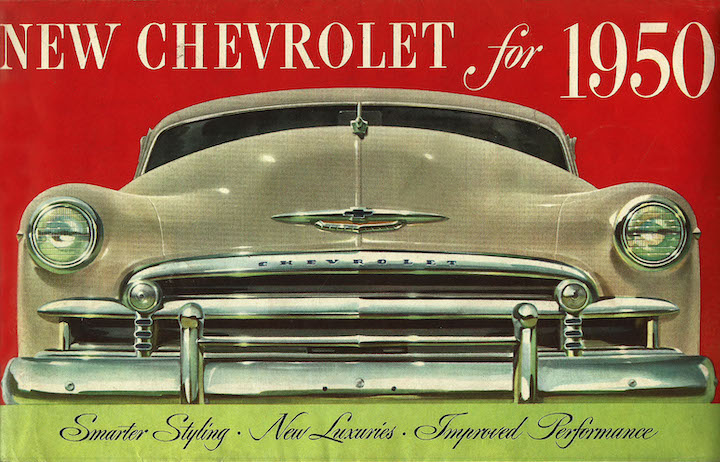
CHEVROLET (1950) — This 1950 Chevrolet living in Texas is a survivor among the nearly 1.5 million Chevrolets manufactured in 1950. That's why it's not too difficult finding old Chevys in the abandoned wilds. Chevrolet outproduced Ford by about 290,000 vehicles in 1950. The lowest priced Chevrolet listed for $1,329 in 1950. (Photo by Peter Hubbard)
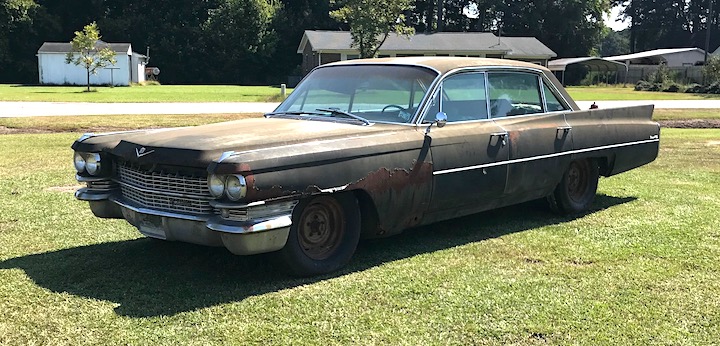
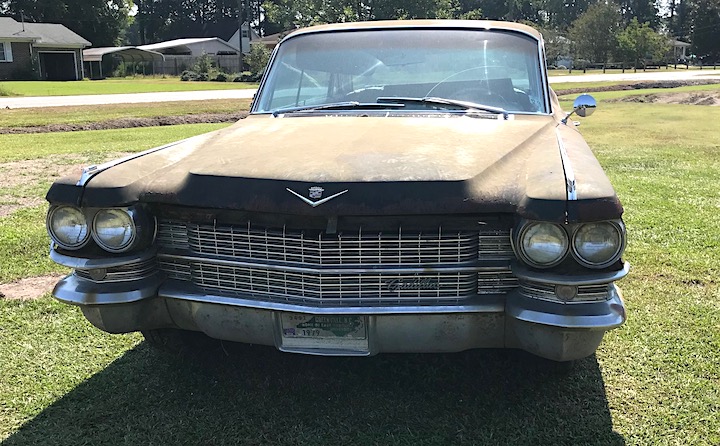
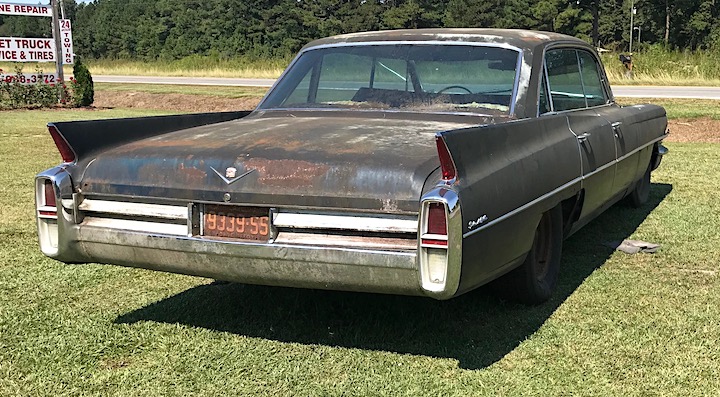
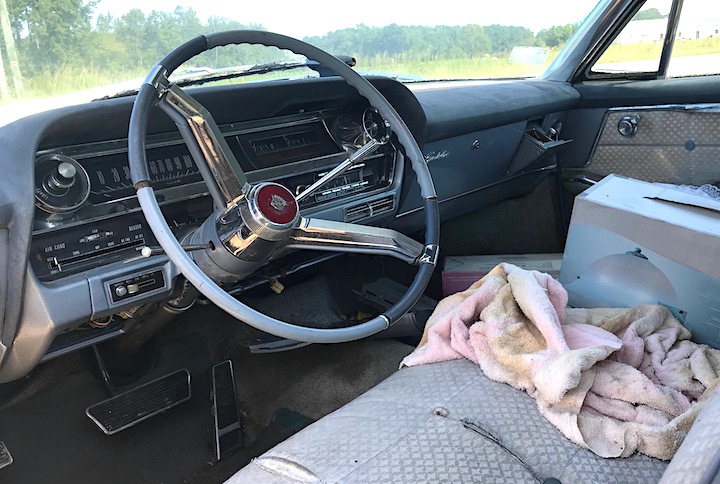
CADILLAC (1963) — The first generation of the Cadillac Coupe de Ville is remembered by its huge tailfins in 1959 and 1960. The second generation (1961-1964) was re-styled and re-engineered and had a more conservative fin treatment. It came in two-door (Coupe de Ville), four-door (Sedan de Ville) and convertible treatments. Engine choices were 6.4-liter and 7.0-liter V-8s. This 1963 Sedan de Ville was found in eastern North Carolina awaiting possible restoration in eastern North Carolina. (Photos by Jim Meachen)
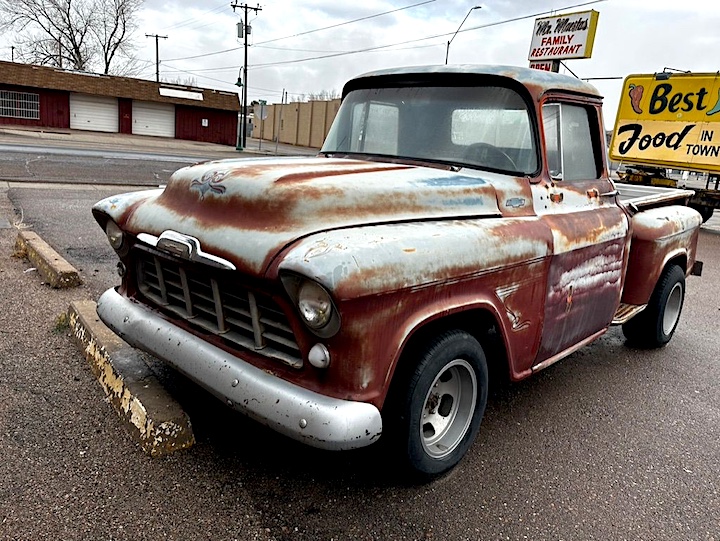
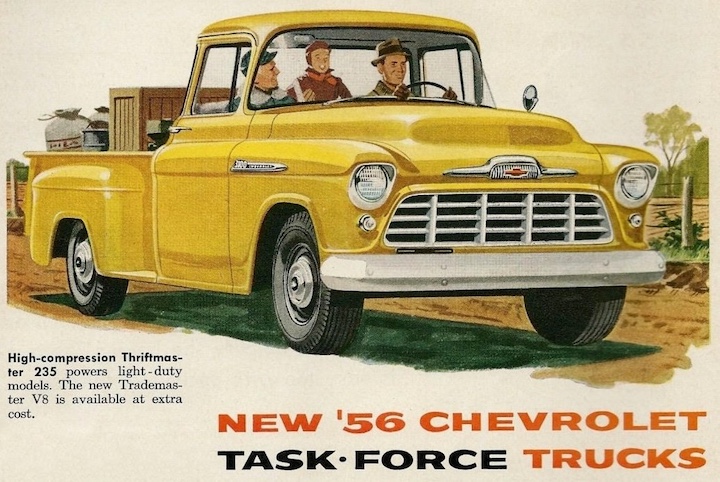
CHEVROLET (1956) — This 1956 Chevrolet pickup was caught in the wild still doing duty after nearly 70 years. Chevrolet gave its pickup a new body style in 1955 that carried through to 1959. These trucks were labeled Task-Force and came with six different engine sizes including two inline six engines and four of V-8 configurations. The Task-Force trucks replaced the Advance Design and in 1960 were replaced with the C/K Series. (Photo by Jim Prueter)
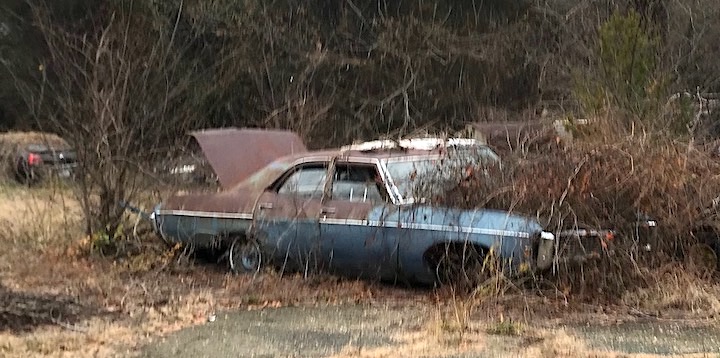
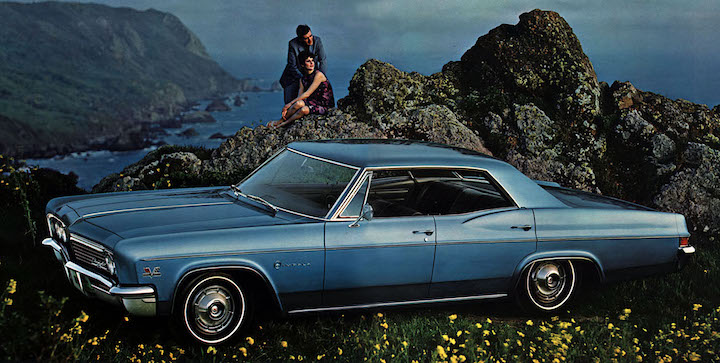
CHEVROLET (1966) — The Chevrolet Impala was the brand's flagship passenger car from 1958-1985. It helped Chevrolet to 2.2 million sales in 1966, the year of this absolutely abandoned car found in eastern North Carolina. The fourth-generation Impala was built from 1965-1970, selling more than one million copies in 1965. (Photo by Jim Meachen)
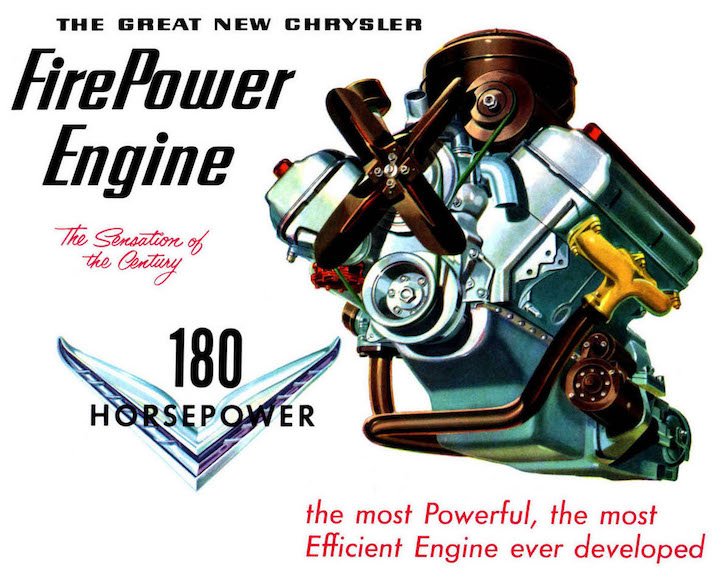
CHRYSLER (1951) — The 1951 Chrysler was the first to be powered by the Hemi V-8, although it was known as the Fire Power V-8. The 331-cubic-inch engine made 181 horsepower. This abandoned Chrysler, still looking in good form, was found in eastern North Carolina. (Photo by Jim Meachen)
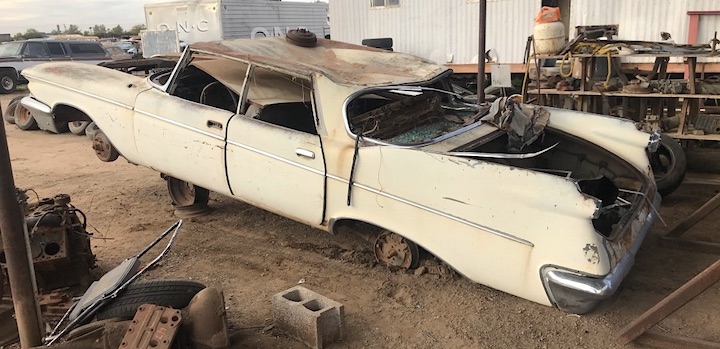
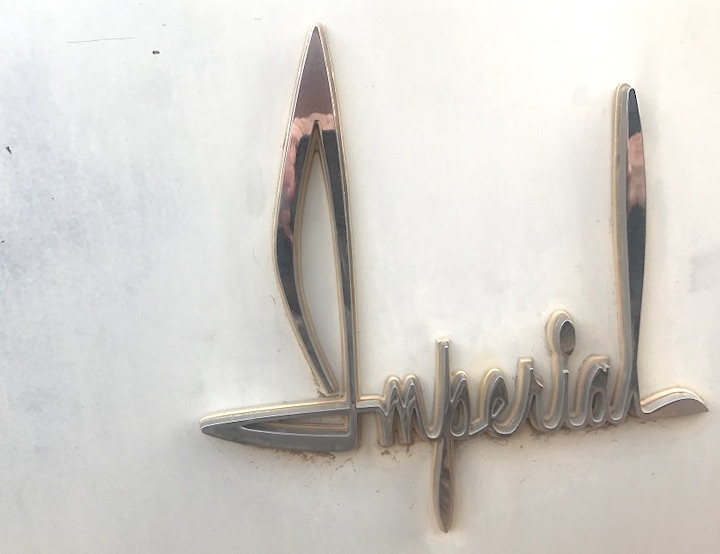
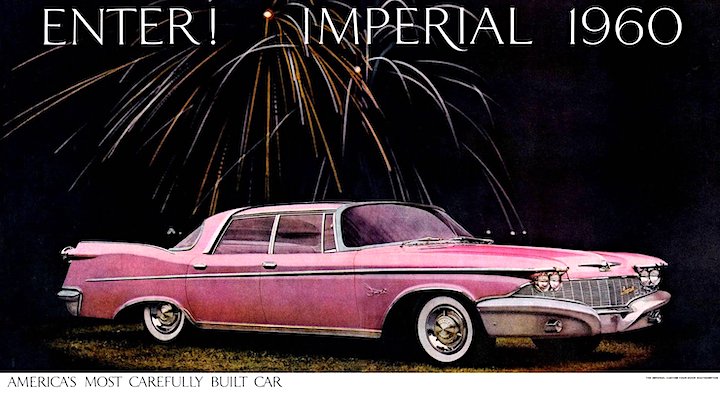
CHRYSLER IMPERIAL (1960) — It was tagged "America's most carefully built car" in 1960 advertising. The Chrysler Imperial, which started life in 1926, became a separate brand for the Chrysler Corporation in 1955 and was sold under that nameplate through 1975 in competition with Lincoln and Cadillac. New technology on the Imperial included the first all-transistor car radio in 1955, built by Philco. It was a $150 stand alone option. This big-finned 1960 model was found in an Arizona salvage yard. (Photos by Jim Prueter)
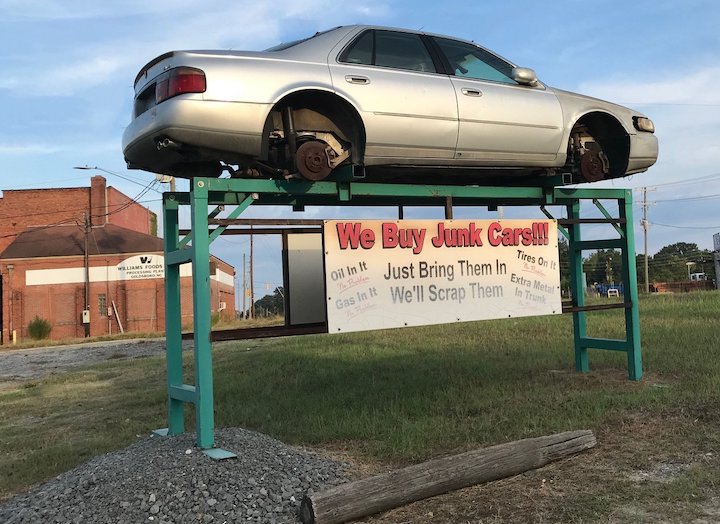
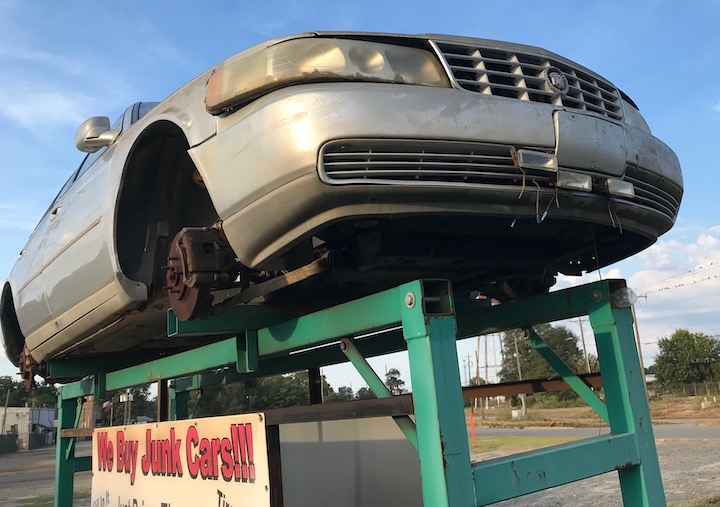
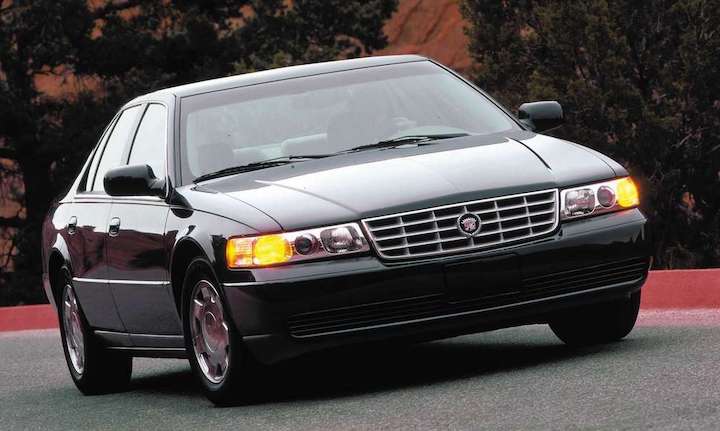
CADILLAC (1998-2004) — This Cadillac Seville has become an advertising sign for a junkyard dealer. The fifth and last generation Cadillac Seville was built from 1998 through 2004. It was a full-sized sedan with a length of 201 inches. There were two V-8 engines available, a 4.6-liter making 275 horsepower and a 4.6-liter generating 300 horsepower. The bigger engine was measured at 6.4 seconds from 0-to-60. The top sales year for the fifth generation was its first in 1998 with 39,009 copies sold. (Photos by Jim Meachen)
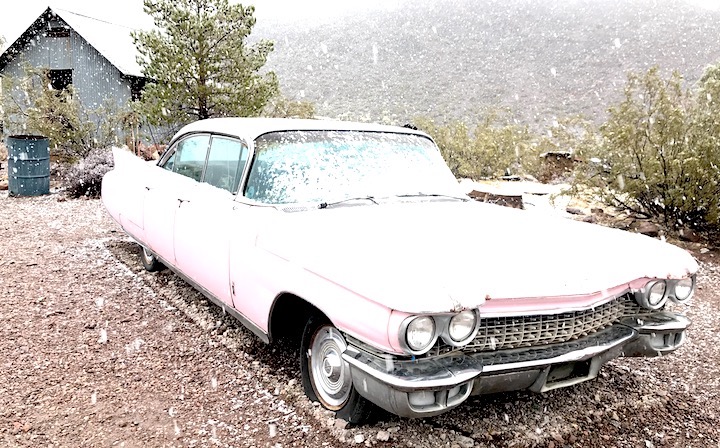

CADILLAC (1960) — This 1960 pink Cadillac looks good in snow. The big GM luxury car was found in wintertime Nevada. Cadillac sold 142,184 cars in 1960, outpacing luxury rival Lincoln, which sold only 24,820 copies. (Photo By Jim Prueter)
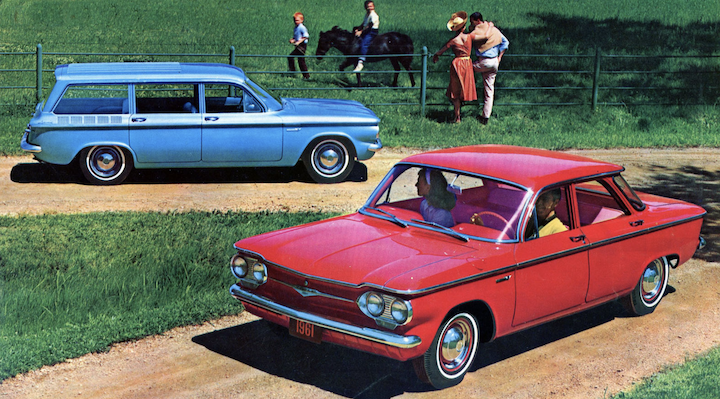
CHEVROLET (early 1960s) — The Chevrolet Corvair is a compact car built from 1960-1969 as a response to the popular Volkswagen Beetle. It was the only American-designed passenger car with a rear-mounted, air-cooled engine. This abandoned early-60s Corvair was spotted in a yard near Ojai, Calif. (Photo by Jim Meachen)
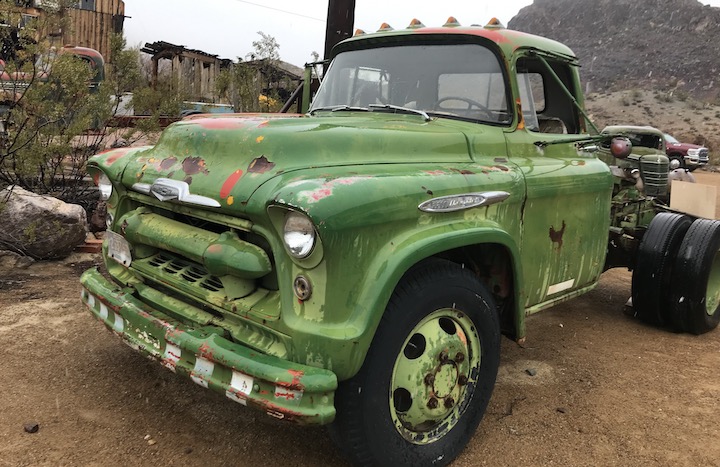

CHEVROLET (1955) — Chevrolet had a full range of work trucks in 1955. This example of a Chevy dually was discovered in Nevada. (Photo by Jim Prueter)
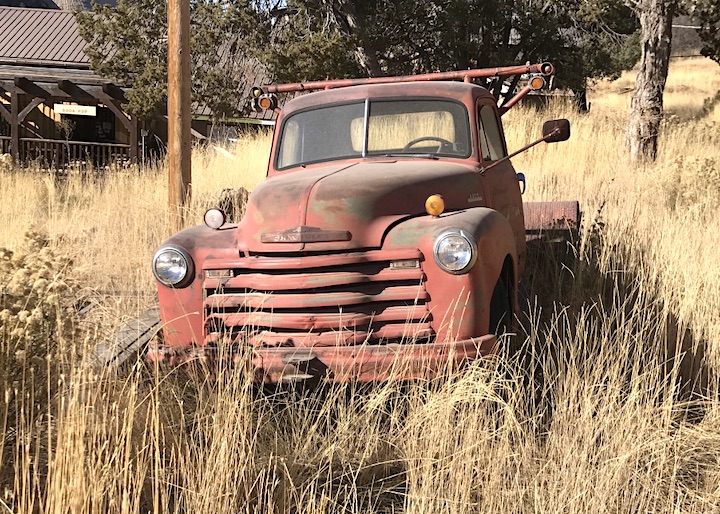
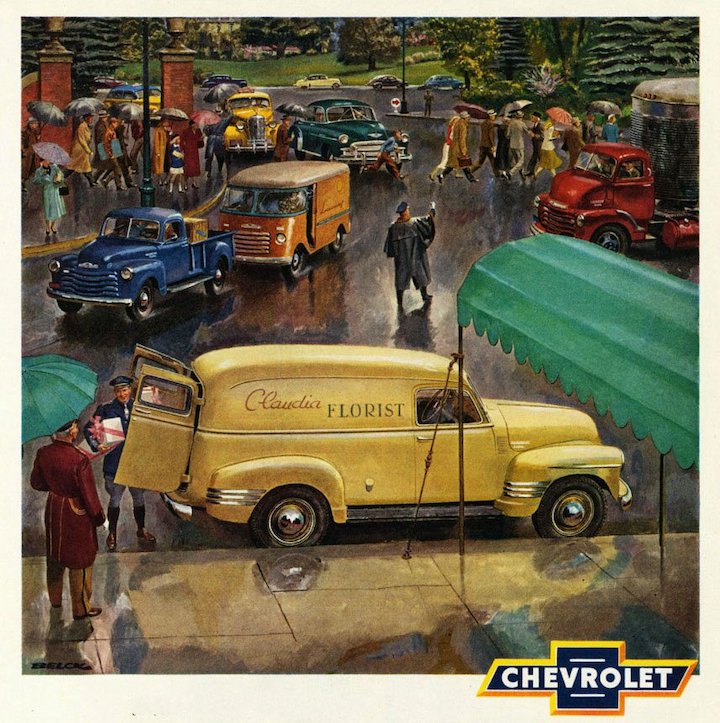
CHEVROLET (circa 1947-1953) — The Advanced Design Chevrolet pickup was General Motors' first all-new truck after World War II and it proved to be a gigantic success. It was manufactured from 1947 through 1955 with little change. This relic was discovered in Utah. (Photo by Jim Prueter)
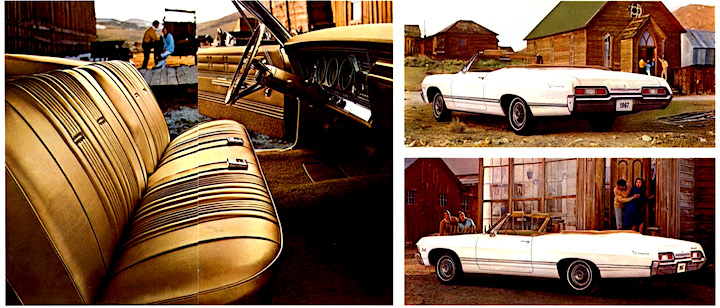
CHEVROLET (1967) — Chevrolet led all automotive brands in 1967 with nearly 2 million in sales, topping second-place Ford by more than 200,000. The remains of this 1967 Chevy convertible looks as if it has been cannibalized several times for spare parts. It was found in a South Carolina scrapyard. (Photos by Ralph Gable)
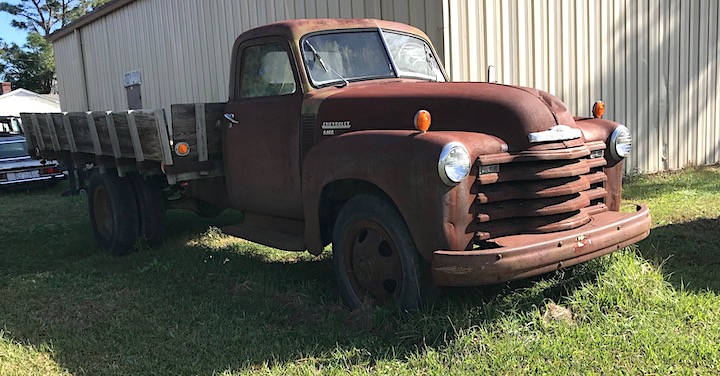
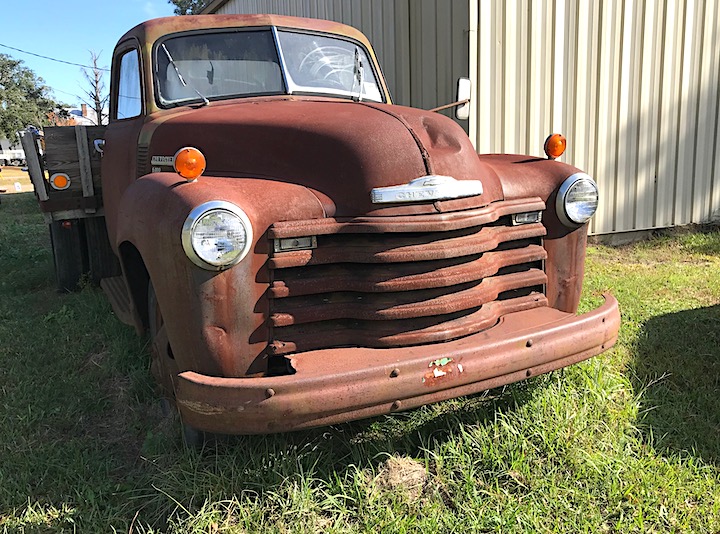
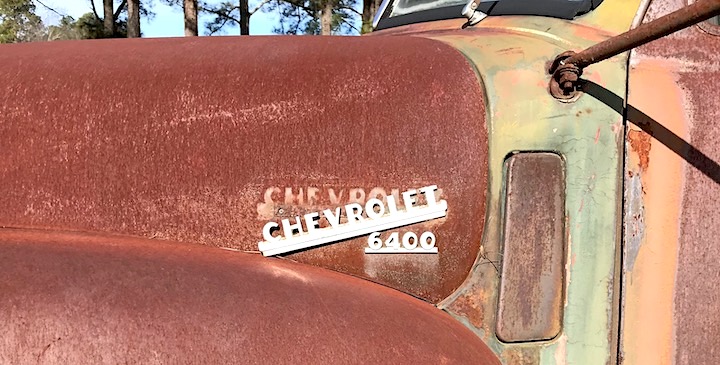
CHEVROLET (circa 1950) — This circa 1950 Chevrolet 6400 heavy duty work truck was found in eastern North Carolina. The 6400 Series was powered by a 235 cubic inch straight six mated to a floor-shift 4-speed Synchro-Mesh manual transmission. A Hydra-Matic transmission would not appear until the 1954 model year. (Photos by Jim Meachen)
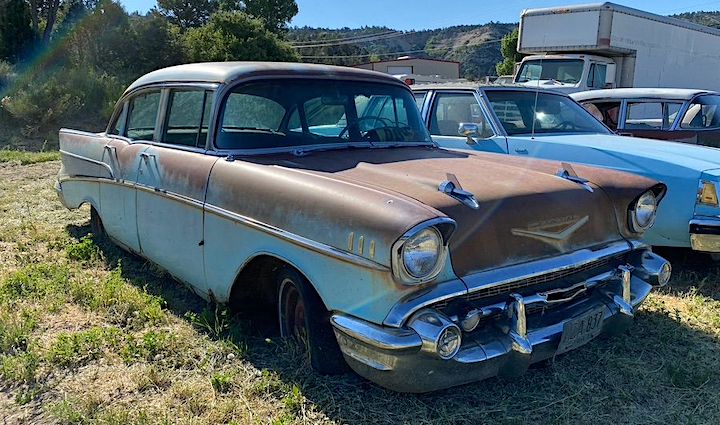
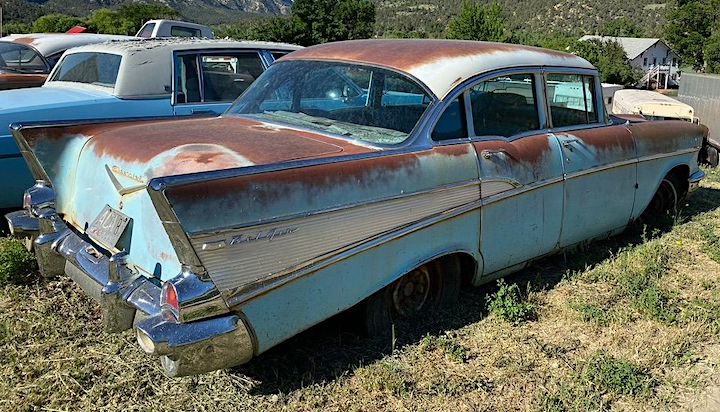

CHEVROLET (1957) — This 1957 Chevrolet Bel Air four-door was discovered in Utah. The iconic '57 was available in three models — the upscale Bel Air, the mid-range Two-Ten, and the One-Fifty. A two-door station wagon, the Nomad, was produced as a Bel Air model. Initially, General Motors executives wanted an entirely new car for 1957, but production delays necessitated the 1955–56 design for one more year. Ed Cole, chief engineer for Chevrolet, dictated a series of changes including distinctive chrome headlight that helped make the '57 Chevrolet a classic. (Photos by Jim Prueter)
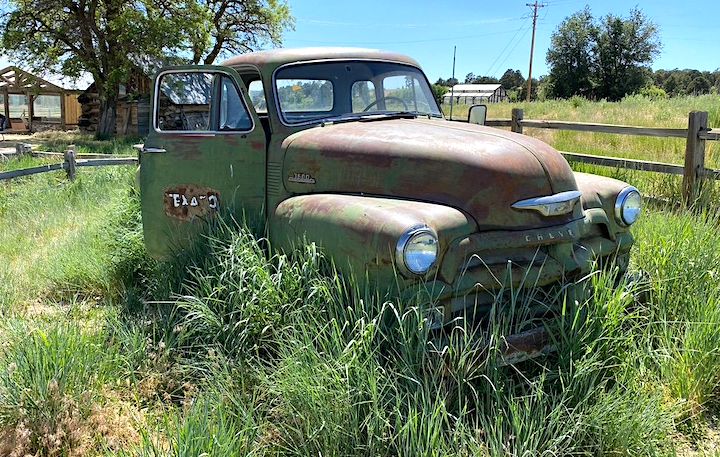
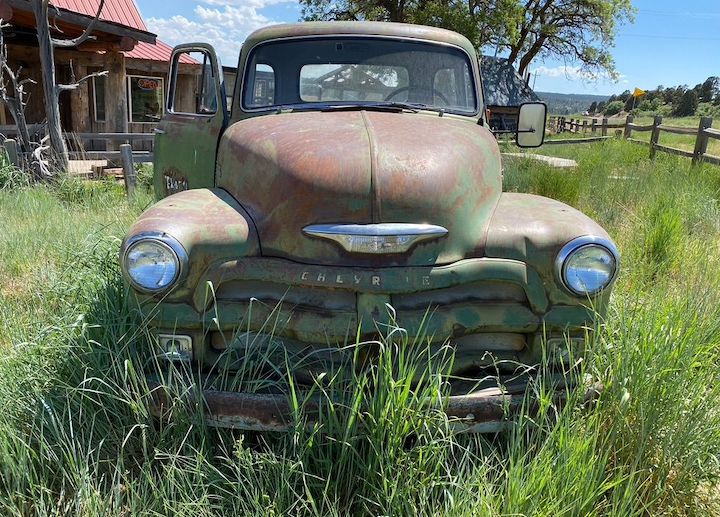
CHEVROLET (1954) — This 1954 Chevrolet pickup was used by a Texaco service station in Utah as shown by the sign on the passenger-side door. 1947 was the first year of an all-new "Advance-Design" pickup, which was built through 1955. Chevy trucks were number one in sales through those years. (Photos by Jim Prueter)
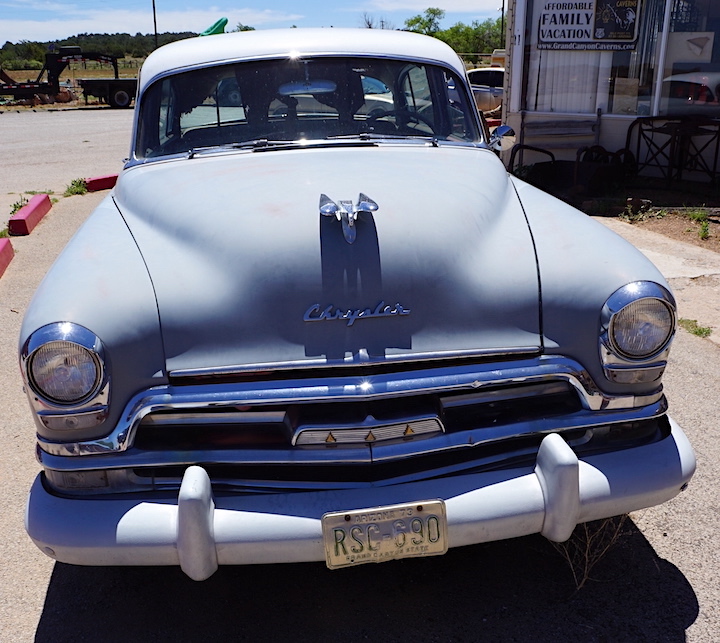
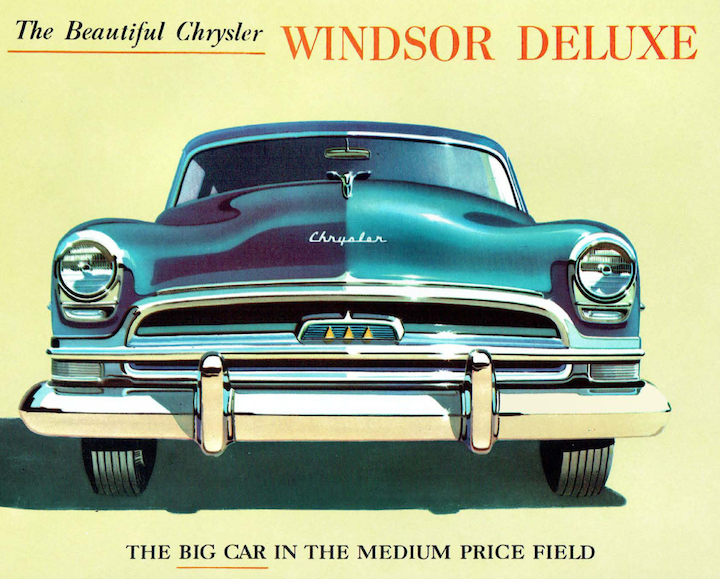
CHRYSLER (1954) — In 1954, the Windsor DeLuxe was Chrysler's lowest priced car. The grille and instrument panel were new from the 1953 car, which got the one-piece curved windshield for the first time. The '54 was powered by a 119-horsepower inline 6 with either a three-speed manual or Power-Flite automatic transmission. This example was found along Route 66 in Arizona. (Photos by Ted Biederman).
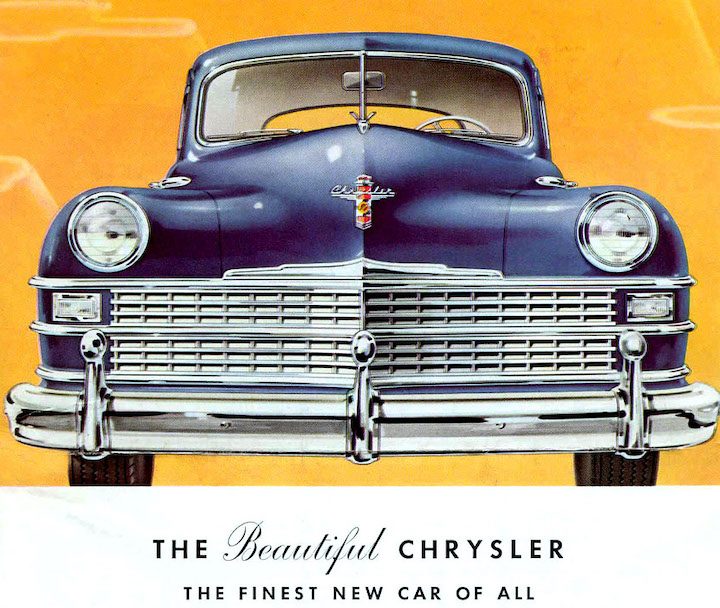
CHRSYLER (1946-1948) — This post-war circa 1946-1948 Chrysler was found rusting away in a South Carolina salvage yard. The upscale luxury brand was a favorite of a lot of people with a decent amount of disposable income as pointed up by the brand's decent sales following World War II with 332,680 copies sold in three years. (Photos by Ralph Gable)
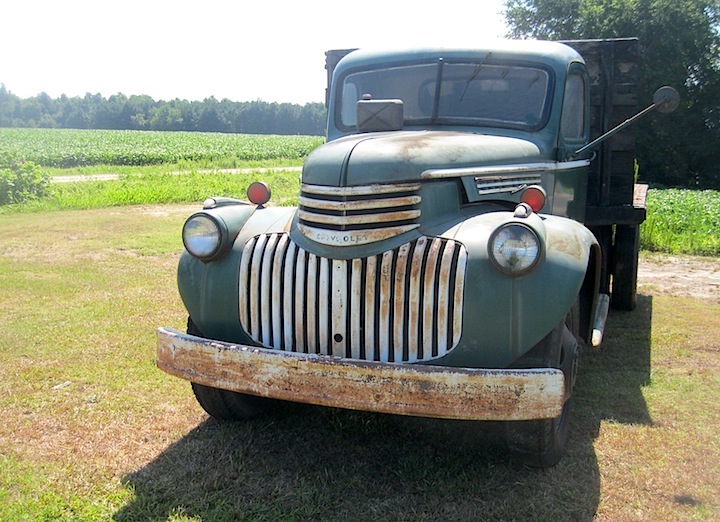
CHEVROLET (1941) — Chevrolet's new 1941 truck design was related to the passenger cars, but by no means identical and far removed from the very car-like 1941 Chevrolet Series AG sedan delivery and coupe "pickups." Bevelled grille bars were horizontal in the upper section, vertical below; headlamps sunk partly into the front fenders. All this added up to quite a streamlined Chevy, more modern looking than the 1941 Dodge and the 1941 Ford. This restorable example was found in eastern North Carolina. (Photos by Jim Meachen)
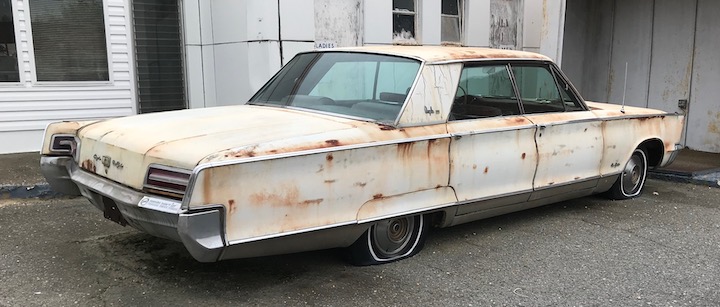
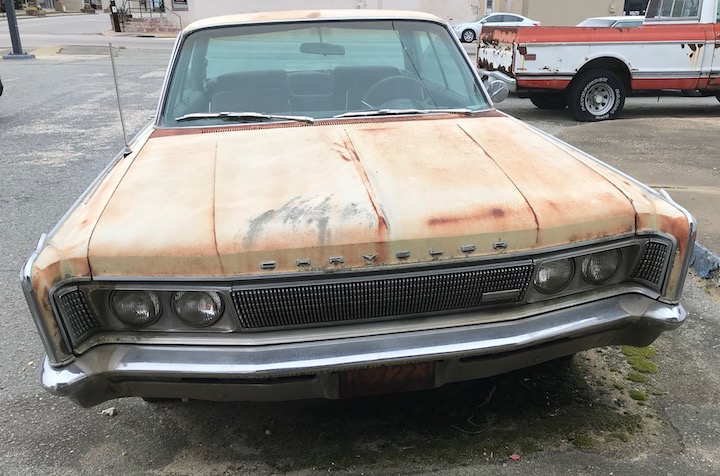
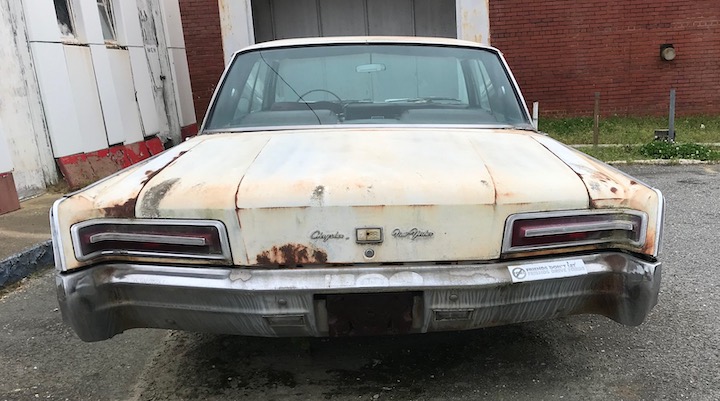
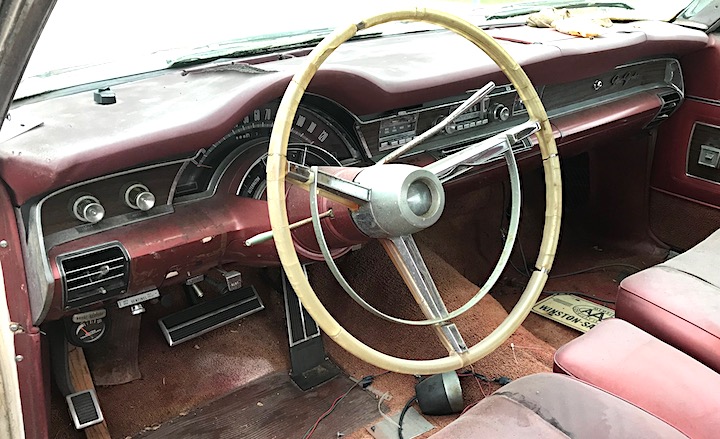
CHRYSLER (1966) — Chrysler produced a wide variety of models for 1966 with a little more than a quarter million sales ranking ninth on the production list just behind Rambler/AMC and about 70,000 units ahead of Lincoln. The most popular was the New Yorker as pictured here. The standard engine was a 340 horsepower 6.8-liter V-8. This 4-door hardtop example was found in eastern North Carolina. (Photos by Jim Meachen)
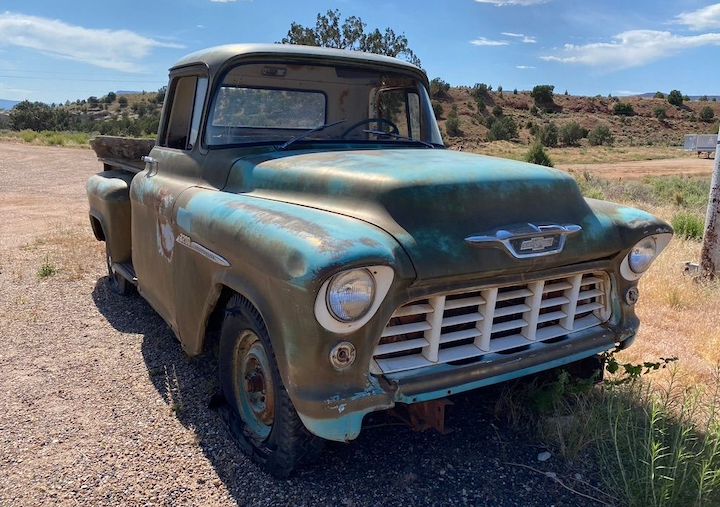
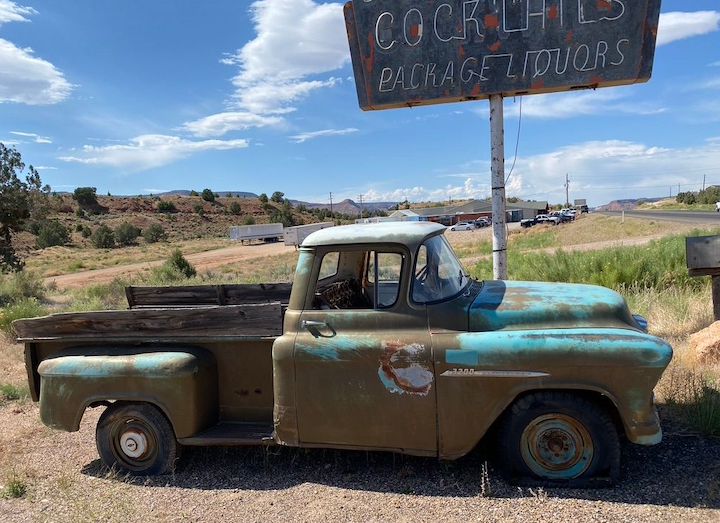
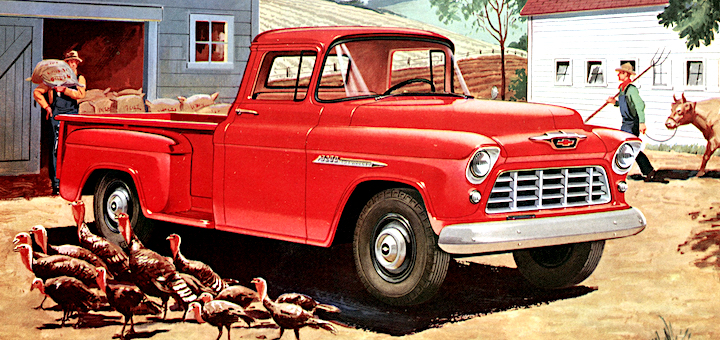
CHEVROLET (1955) — Chevrolet introduced an all-new pickup in 1955, known as the Task-Force pickup. It came with the truck industry's first wraparound windshield and running boards hidden behind the door. Also in 1955 Chevrolet started producing an overhead V-8 engine. This copy was found in retirement in Utah. (Photos by Jim Prueter)
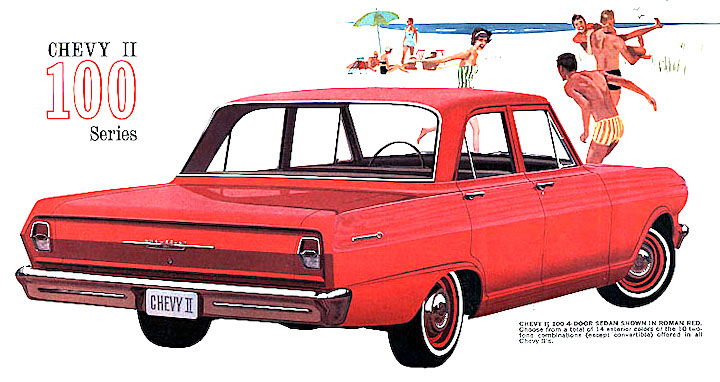
CHEVROLET (1962-63) — This 1962-63 Chevy II parked beside a South Carolina road is apparently being used as a parts car. The Chevrolet Chevy II/Nova is a small car manufactured by Chevrolet, and produced in five generations for the 1962 through 1979, and 1985 through 1988 model years. The Chevy II nameplate was dropped after 1968 in favor of Nova.. (Photos by Ralph Gable)
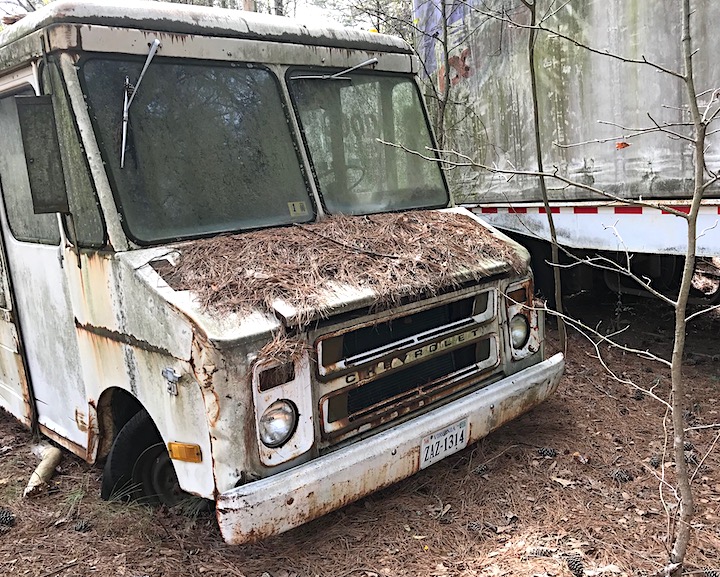
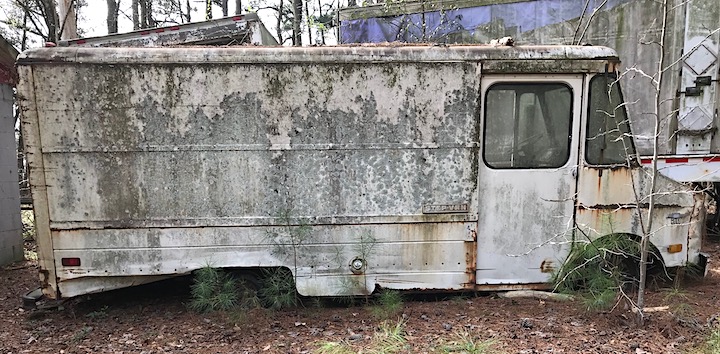
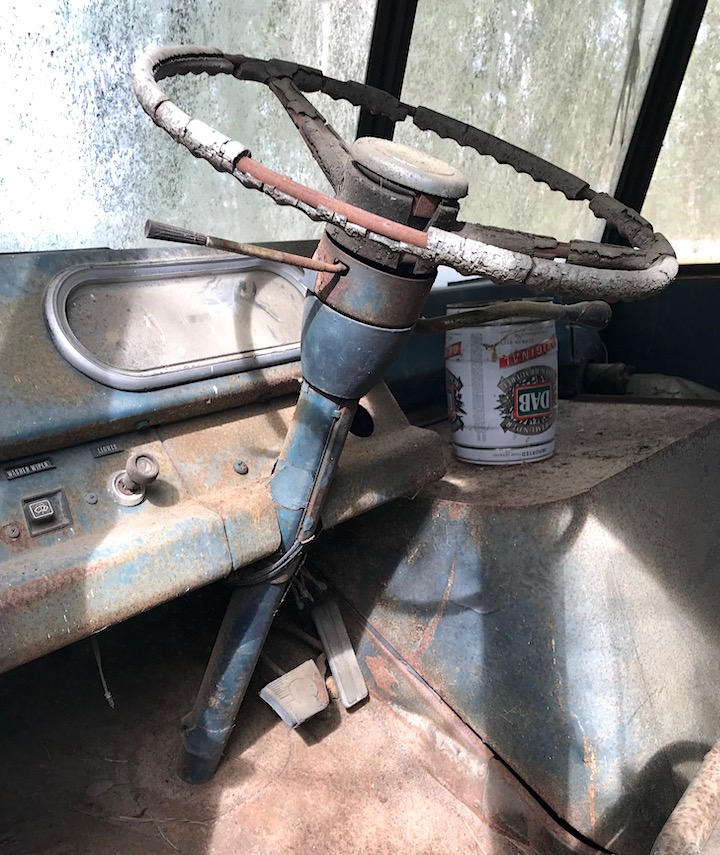
CHEVROLET (Circa 1968-mid '80s) — Over the years the Chevrolet Step Van has had many uses from delivering groceries to milk to packages to auto parts. This retired van was found in eastern North Carolina. It's hard to determine the year because there's been little styling changes over the years, but we think this van was probably built sometime between 1968 and and the mid '80s. (Photos by Jim Meachen)
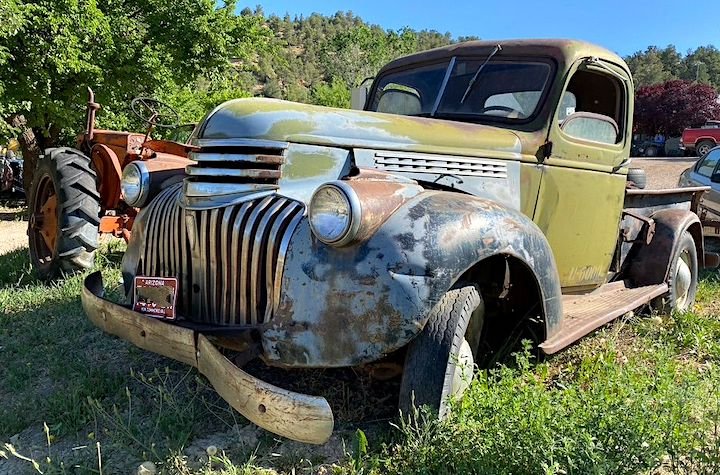
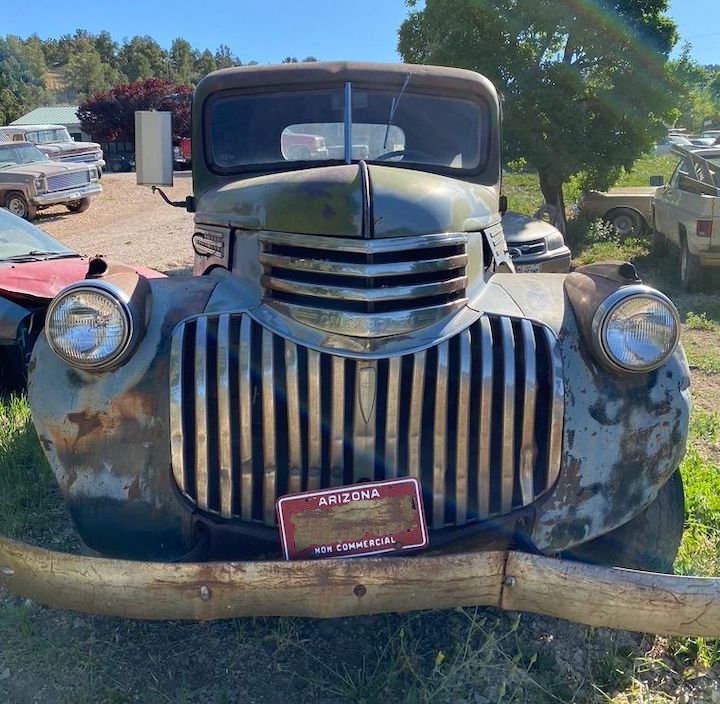
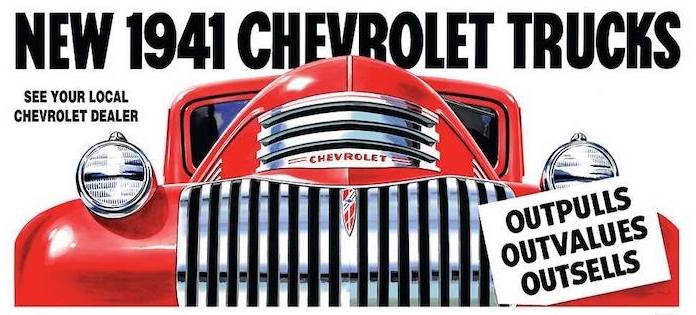
CHEVROLET (1946) — Chevrolet introduced the AK Series pickup in 1941 with a cutting-edge front-end design highlighted by bevelled grille bars with a horizontal upper section and vertical lower section. The new lineup came with two engine sizes — an inline 216.5 cubic inch six making 90 horsepower and an optional 235.5 cubic inch Load Master six making 93 horsepower and considerably more torque. Three transmissions and nine wheelbases were available. This example was found in Utah. (Photos by Jim Prueter)
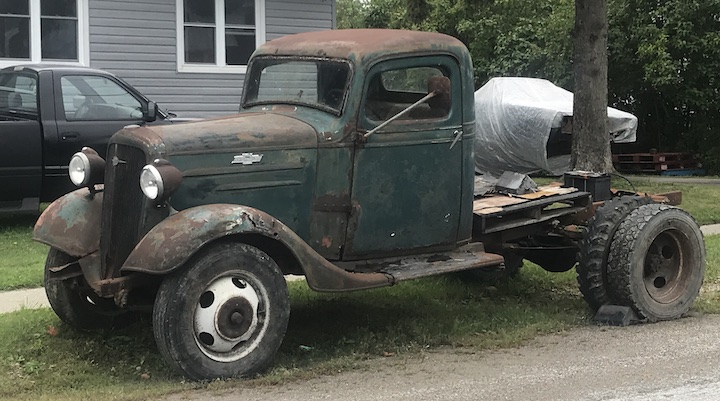
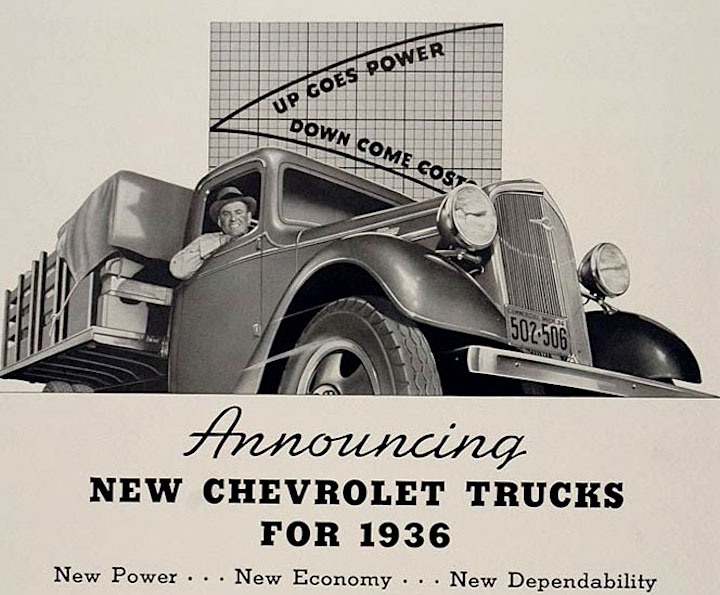
CHEVOLET (1936) — This 1936 Chevrolet truck cab was found parked on a city street with a rusted-out fender and running board, but otherwise in decent shape. Most Chevy trucks were propelled by a 193.9 cubic inch straight-six-cylinder engine throughout the 1930s. (Photo by John Harper)
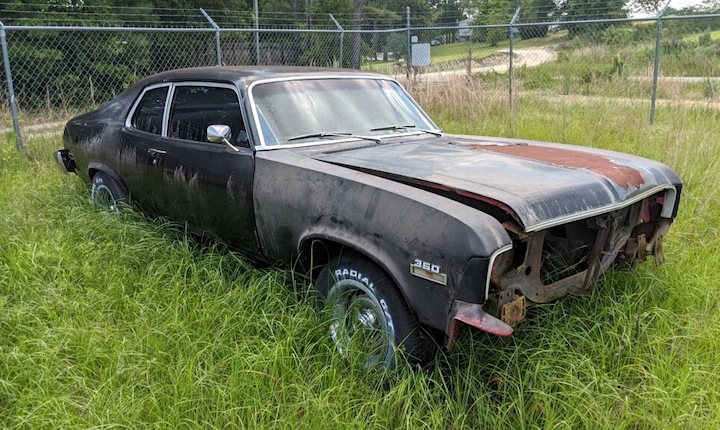
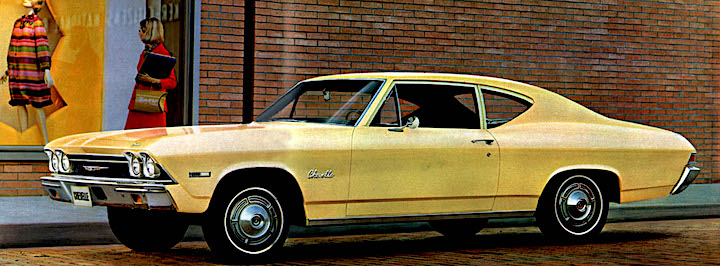
CHEVROLET (1968) — The 1968 Chevrolet Chevelle marked the first year of the second-generation of the mid-sized Chevelle, which was introduced in 1964. This particular Chevelle, as advertised on its fender, came with Chevrolet's 5.7-liter 350 cubic inch small block V-8 engine. The stripped-out Chevy was found in a field in eastern North Carolina. Chevelle became very popular in the mid-to-late '60s and Chevrolet billed it as "America's most popular mid-size car." (Photo by Nick Nunkovich)
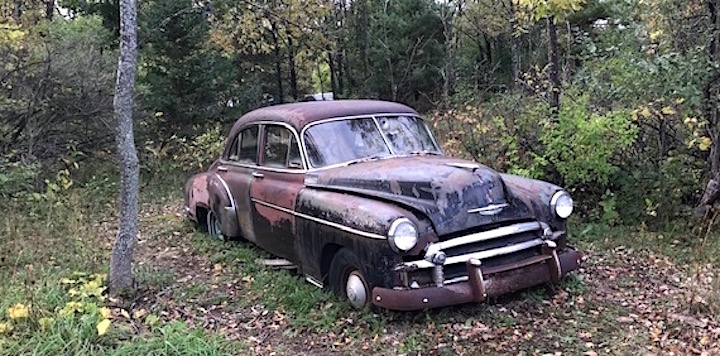
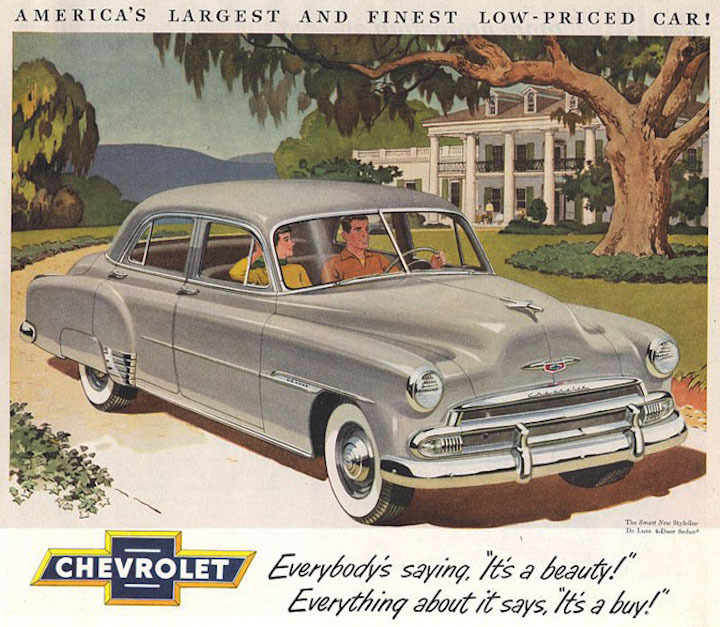
CHEVROLET (1951) — This 1951 Chevrolet was found in the woods in Door County, Wis., apparently parked by its owner after its driving life was over. Chevrolet had a banner sales year in 1951 with 1,229,986 cars and trucks sold. Chevy outsold Ford by more than 200,000 units. (Photo by Ed Meachen)
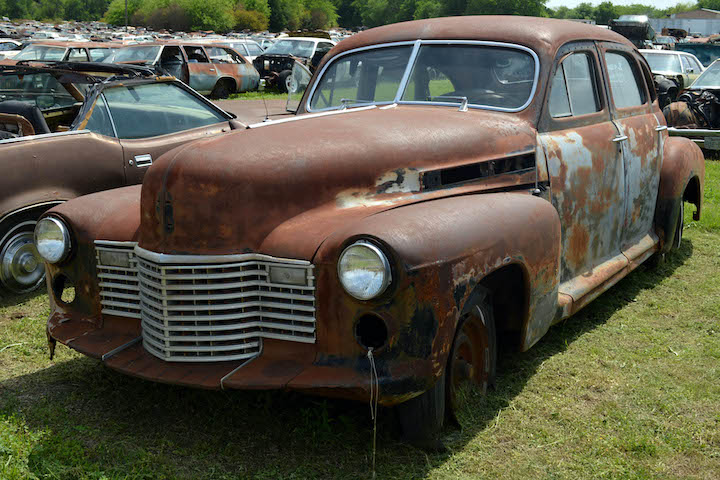
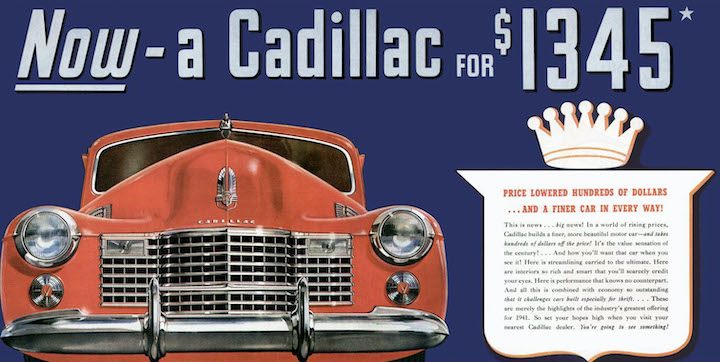
CADILLAC (1941) — Cadillac was enjoying a sales resurgence in 1941 before production was halted because of World War II. For the first time in many years all cars built by the company shared the same basic engine and drivetrain in 1941, and 1941 also saw the introduction of the optional Hydra-Matic, the first mass-produced fully automatic transmission, offered the previous year on the Oldsmobile. This 1941 Cadillac was found in Texas. (Photo by Peter Hubbard)
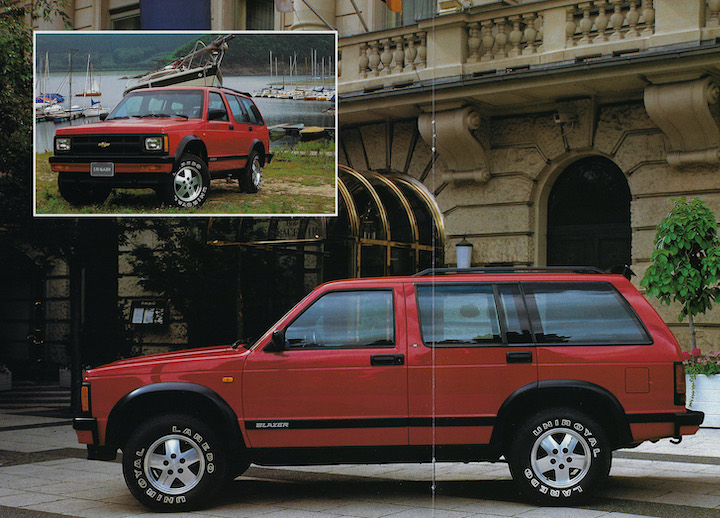
CHEVROLET (Circa early '90s) — The remains of this early 1990s Chevy Blazer S-10 two-door apparently served as a parts car and has been reduced to a skeleton ready for the scrapyard. The Blazer S-10 came with two versions of the 4.3-liter V-6, the base engine making 170 horsepower and an high-output engine making 200 horsepower, neither of which has survived in this wreckage. (Photos by Jim Meachen)
ADVANCE-DESIGN CHEVY — The so-called Advance-Design was Chevrolet's first all-new pickup built following World War II. It was introduced on June 28, 1947, and remained until March 25, 1955, with various changes along the way. This copy, converted to a flatbed, lives by the side of the road in South Carolina. (Photos by Ralph Gable)
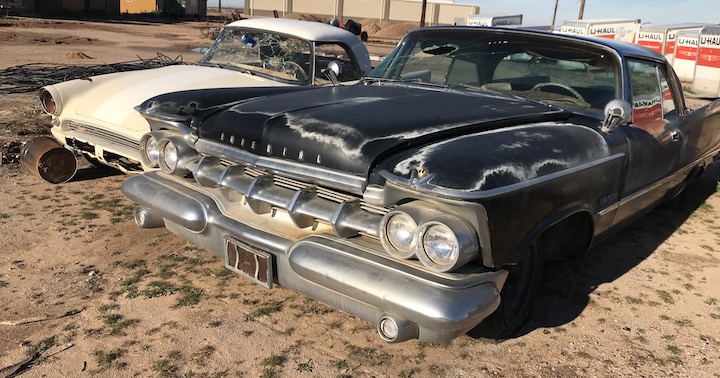
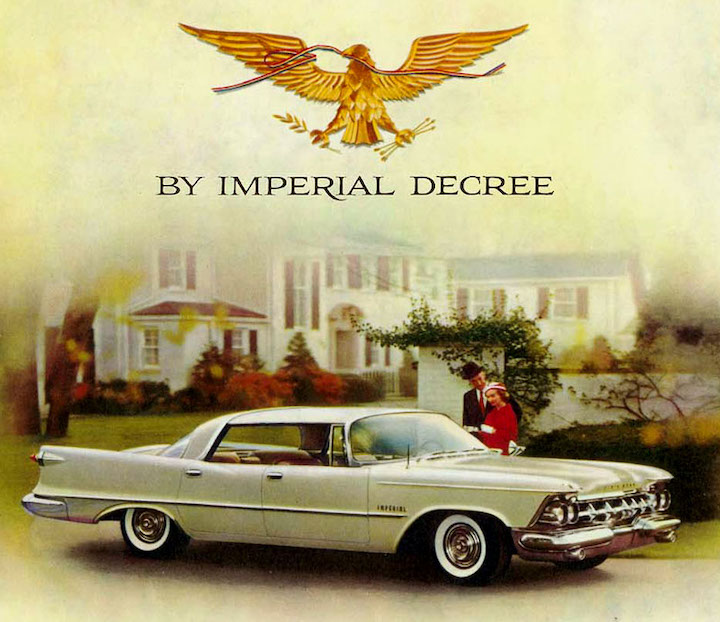
CHRYSLER/IMPERIAL (1959) — This 1959 Imperial dwarfs a 1960-era Sunbeam in an Arizona salvage yard. Chrysler marketed the Imperial as a separate luxury marque in 1955. It was built through 1975. The '59 Imperial came in four body styles and with the choice of three V-8 engines mated to a three-speed automatic transmission. The Imperial brand sold 17,269 vehicles in 1959. (Photo by Jim Prueter)
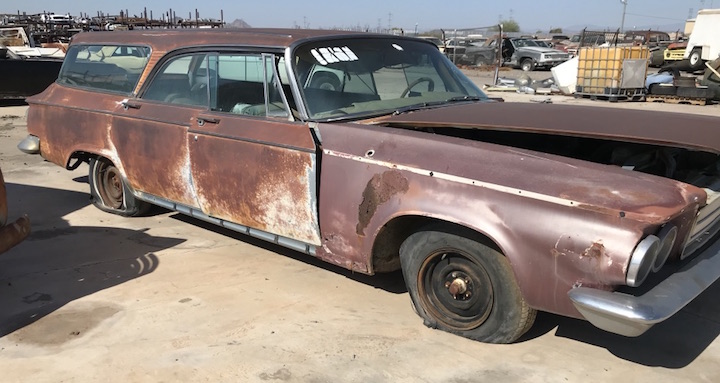
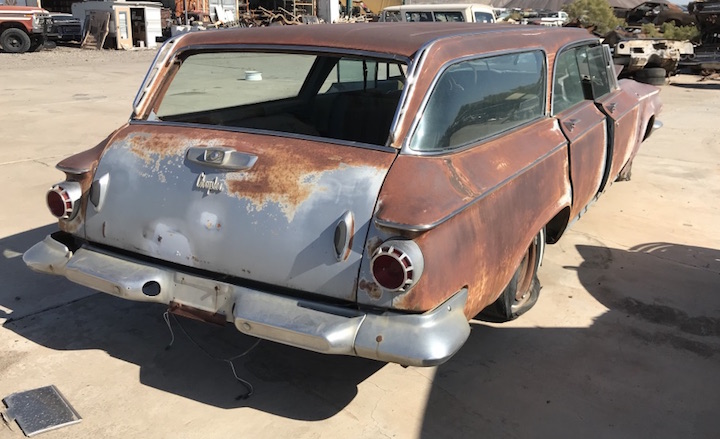
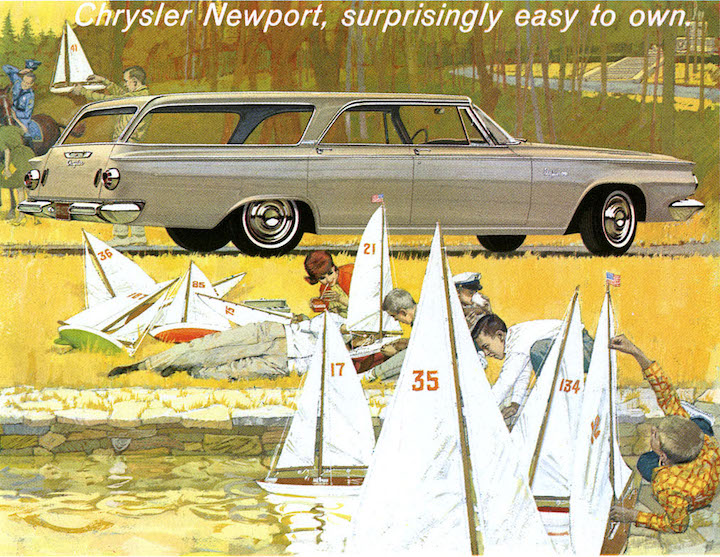
CHRYSLER (1963) — The 1963 Chrysler station wagon is a huge vehicle by today's standards stretching out nearly 220 inches, only four inches shorter than the 2020 Chevrolet Suburban. It is propelled by a 340-horsepower V8 mated to a three-speed automatic and could break 8 seconds from 0-to-60. This used up example was found in an Arizona salvage yard. (Photos by Jim Prueter)
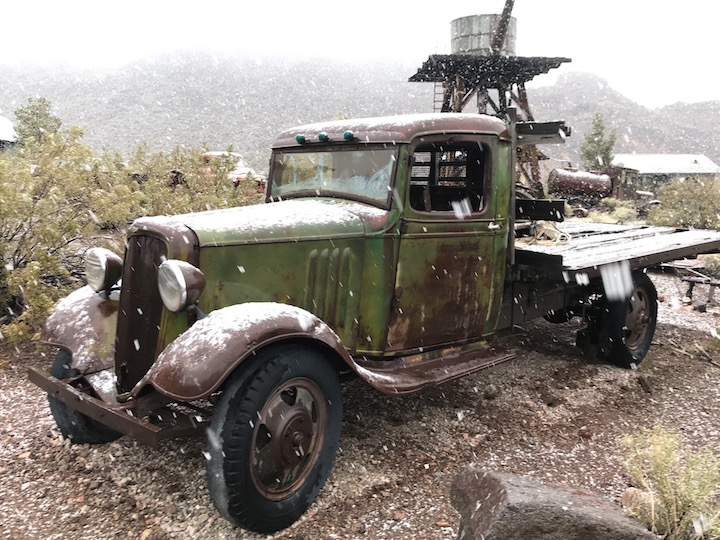
CHEVROLET (1935) — This 1935 Chevrolet work truck was discovered in Nevada. At the heart of 1930s era trucks was a Chevy inline-six-cylinder engine, which earned names like “Cast Iron Wonder” and “Stovebolt” for its rugged design. First produced in late 1928, the new engine had a modern overhead-valve design. (Photo by Jim Prueter)
CHEVROLET (1959) — It's possible to find more than just Harley-Davidson motorcycles at some Harley dealerships. Take the Lindon, Utah, store for example. Outside on display was a used up 1959 Chevrolet station wagon complete with boat on top, presumably ready for a summer vacation. Chevrolet sold 1,462,140 cars in 1959 outselling Ford by a scant 10,000 units. (Photos by Jim Meachen)
CHEVROLET (1969) — This Chevrolet C50 farm truck languishes in a field in eastern North Carolina, perhaps awaiting a new owner to put it back into duty. This truck was part part of the second generation of C-series trucks, introduced in 1960. (Photos by Jim Meachen)
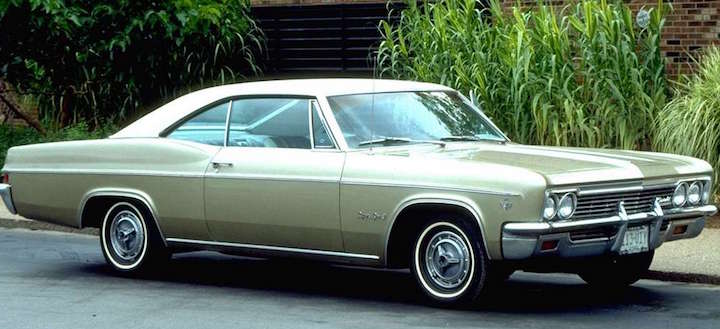
CHEVROLET (1965-66) — This 1965-1966 Chevrolet Impala has been picked clean of its engine and other parts, its driving life long over. Redesigned in 1965, the Impala set an all-time industry annual sales record of more than one million units in the United States. The 1965 had a new body that featured curved, frameless side glass (for pillar-less models), sharper angled windshield with newly reshaped vent windows, and redesigned full-coil suspension. (Photo by Jim Meachen)
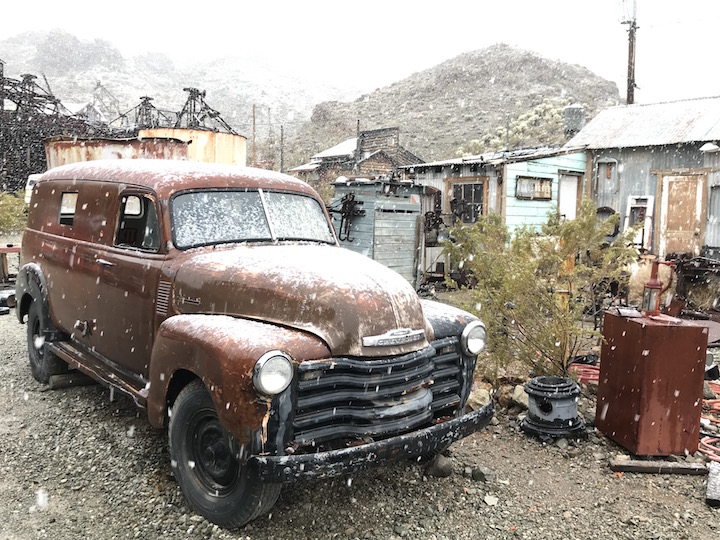
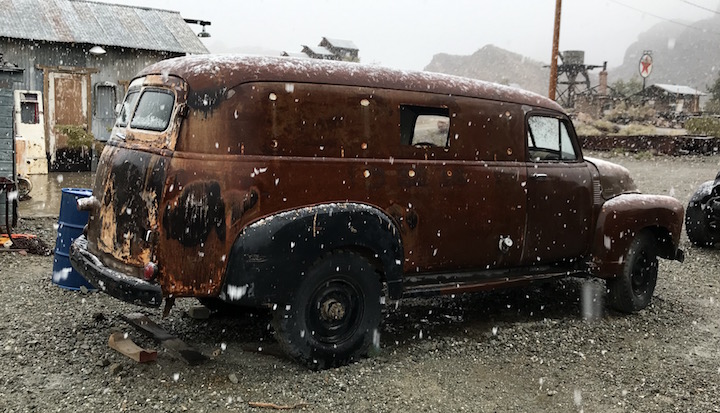
CHEVROLET (1951-53) — Chevrolet made very few exterior changes to its panel van between 1947 and 1953 after completing reinventing the van — tagging it Advance-Design — following the end of World War II. Starting in 1951, trucks and vans got door vent windows, which would make this Chevy, photographed by Jim Prueter, a 1951-1953 model. Chevrolet pickups and vans is this era were number one in sales in the U.S.
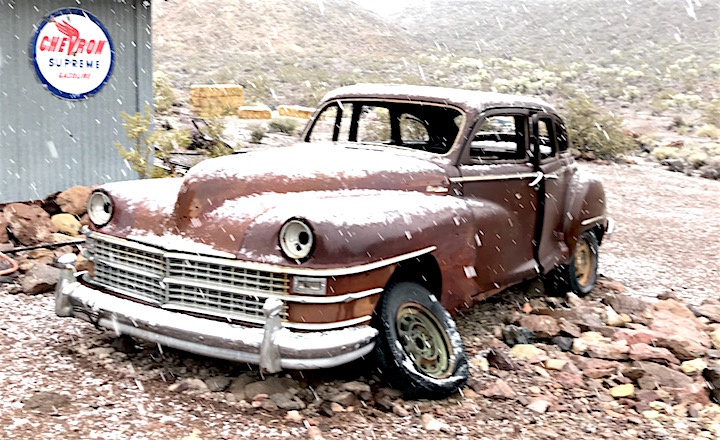
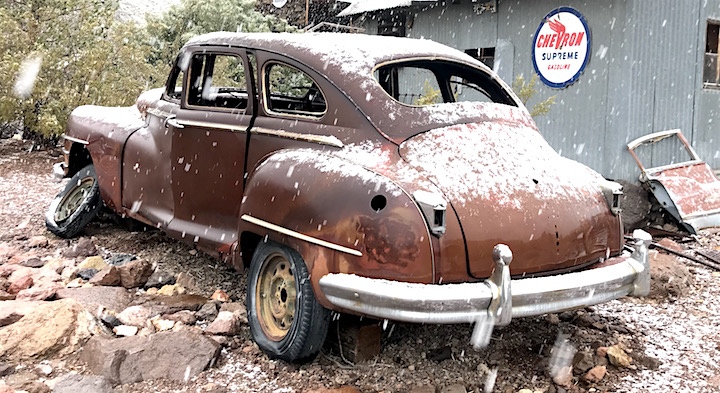
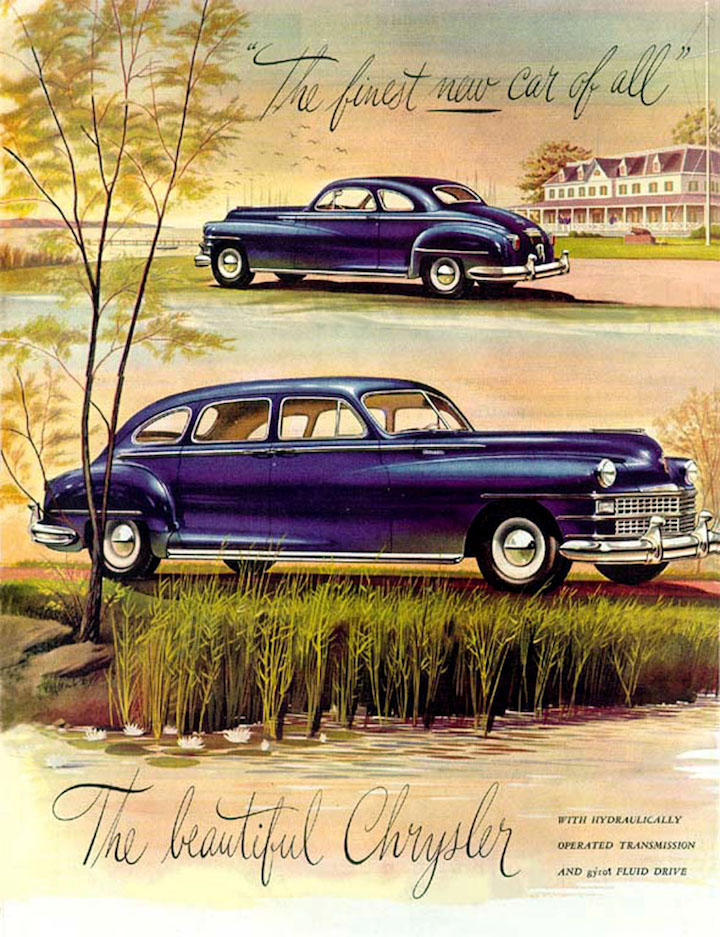
Chrysler came in several models for 1946-48 including the Windsor and New Yorker powered by a 250 cubic inch inline 6 making 114 horsepower mated to a 4-speed manual transmission. Chrysler sold 83,310, 119,260 and 130,110 respectively from 1946 through 1948. The post-war Chrysler was a full-sized car measuring 208.25 inches in length with a wheelbase of 121.5 inches. This circa 1946 to 1948 Chrysler was found in Nevada. (Photos by Jim Prueter)
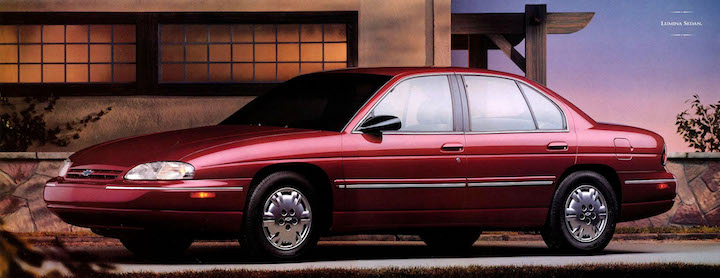
CHEVROLET (1995-2001) — The mid-sized Chevrolet Lumina was manufactured from 1989 through 2001 in two generations as Chevrolet sought to consolidate its mid-sized nameplates under a single product range. The Lumina replaced the Chevrolet Celebrity and the Monte Carlo. It was offered as a four-door sedan and as a two-door coupe. This second-generation Lumina (1995-2001) was found languishing in a farm field in North Carolina. Over the years the Lumina came with four different V-6 engines and a four-speed automatic. (Photos by Jim Meachen)
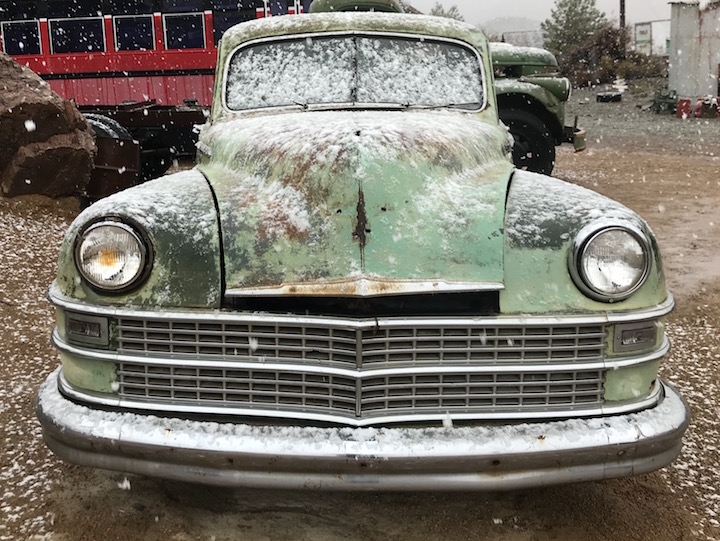
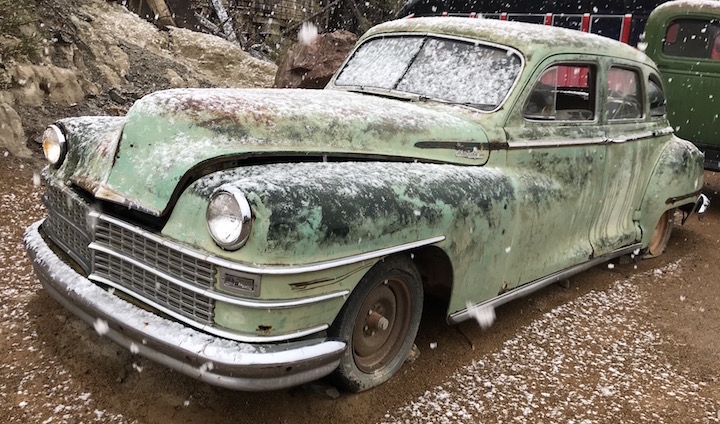
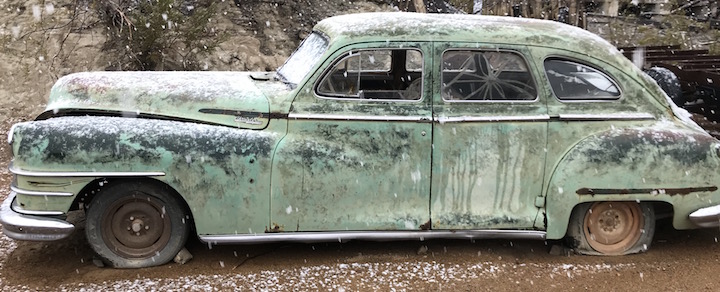
CHRYSLER (circa 1946-1948) — Chrysler came out swinging after World War II with a relatively conservative design that appealed to the car-buying public. Chrysler used the same basic design — with some tweaks here and there — from 1946 through 1950 before a complete overhaul in 1951. In those five years Chrysler sold 636,197 copies. This circa 1946-48 Chrysler was found on a snowy day in Nevada. (Photos by Jim Prueter)
CHRYSLER (1993) — This 1993 Chrysler LeBaron convertible was found abandoned in eastern North Carolina, its useful life probably at an end. The1993 LeBaron got a slight restyle with the hidden headlamps of the 1987-92 models deleted in favor of less aerodynamic headlamps. The convertible was 184.8 inches in length with a 100.5-inch wheelbase, equating to a large compact car in today's sizes. Two turbocharged versions of Chrysler's 4-cylinder engine — a 2.2-liter and a 2.5-liter — were available along with a 3.0-liter Mitsubishi V-6 making 141 horsepower. (Photos by Jim Meachen)
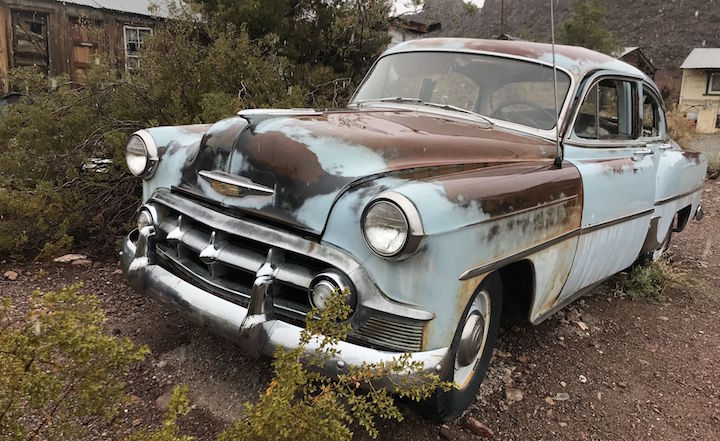
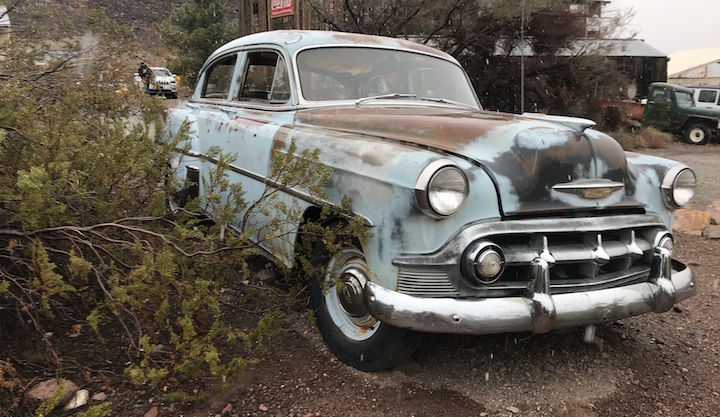
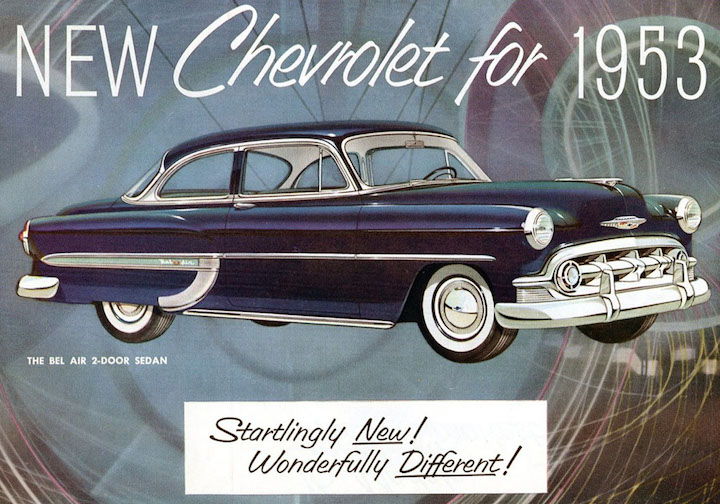
CHEVROLET (1953) — Chevrolet was completely redesigned for 1953 coming in three trim levels — base One-Fifty, mid-level Ten-Ten and top Bel Air. The standard engine was a 216 cubic-inch, 3.5-liter inline six cylinder making 92 horsepower. The redesigned Chevy was a big hit based on its annual sales of 1.34 million. This well preserved copy was found in Nevada. (Photos byJim Prueter)
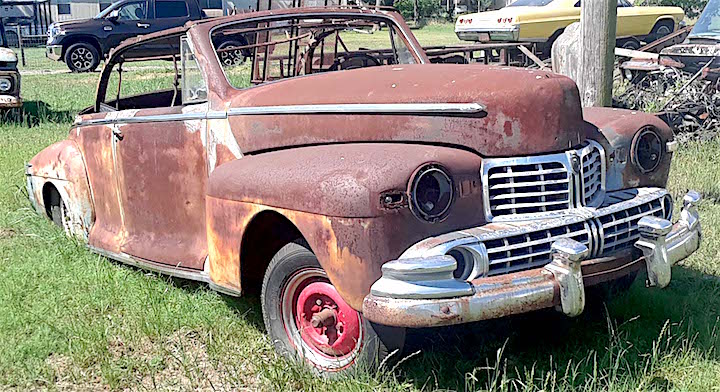
CADILLAC (1947) — It was not until 1948 that Cadillac came out with an all-new post-war design including the first use of tailfins. The 1947 convertible captured here as an abandoned car carried on with the pre-war design. Cadillac sold only 61,926 cars in 1948, but still led luxury brands Packard and Lincoln in sales. This abandoned Caddy was found in a Texas salvage yard. (Photo by Peter Hubbard)
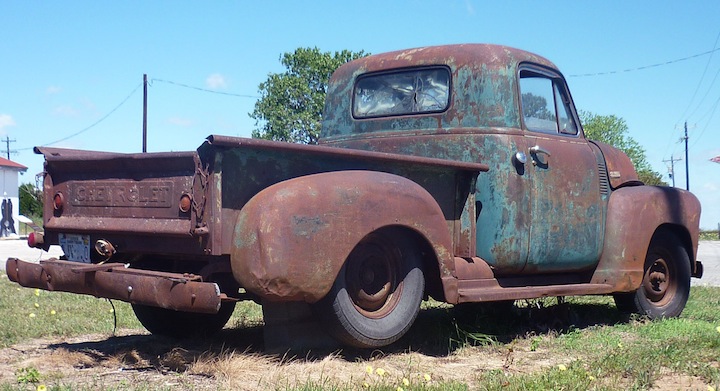
CHEVROLET (Late '40s) This late 1940s Chevrolet "Advanced Design" pickup with great patina was found in Texas.It might be a good long-term restoration project. (Photo by Peter Hubbard)
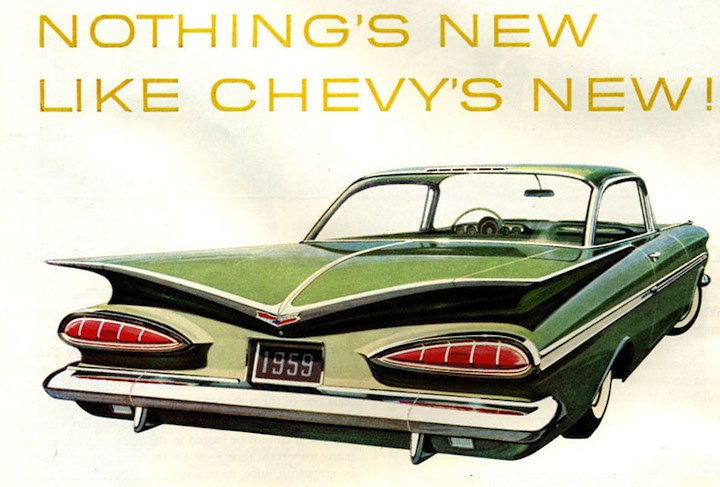
CHEVROLET (1959) — For the second time in as many years, Chevrolet came up with a totally new car in 1959. From the front and rear the 1959 Chevrolet resembled nothing else on the road. The headlights were placed as low as the law would permit and the most visual new change was the flat, wing shaped tailfins. This 1959 was found in a field in Blanco, Texas. (Photo by Jim Prueter)
CHEVROLET (1955) — This used-up abandoned 1955 Chevrolet truck, which appears to be outfitted with a makeshift camper, was spotted along Route 66 in Tucumcari, N.M. Perhaps its last stop was for some Mexican food at the Ranch House Cafe. For 1955 Chevrolet offered an impressive total of 75 "Task-Force" models on 15 different wheelbases designed for everything from light delivery to over-the-road hauling. (Photo by Jim Meachen)
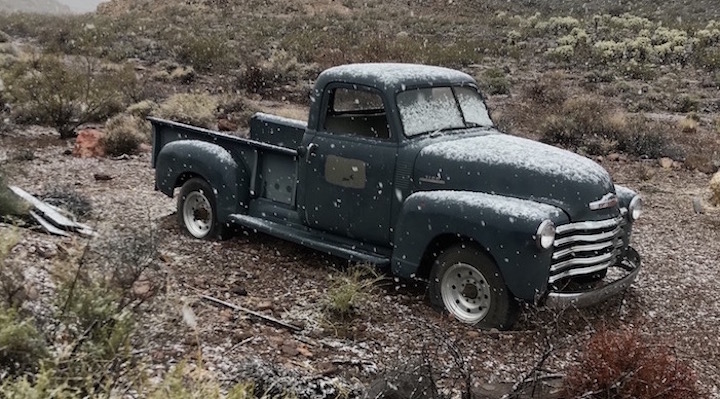
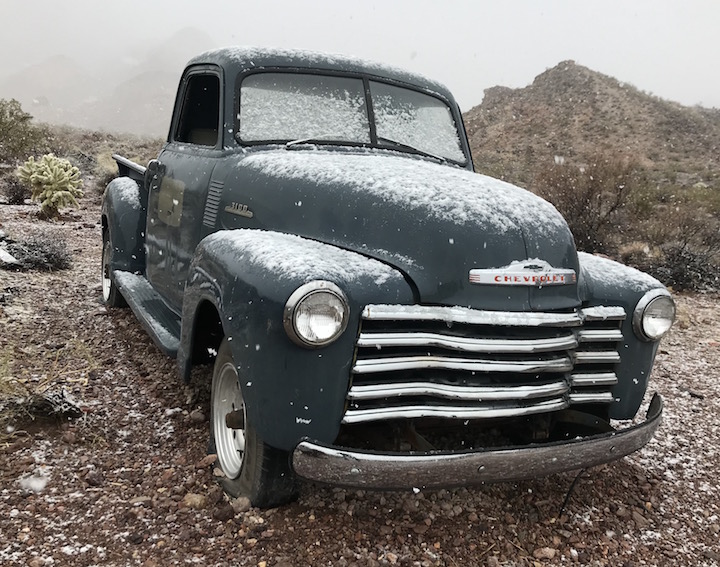
CHEVROLET (circa 1947-1953) — The "Advance Design" Chevrolet pickup trucks entered the scene in June1947, and exterior styling remained virtually the same through 1953. The first major change was with the grille treatment in 1954. This post-World War II Chevy pickup was found with a dusting of snow in late-winter Nevada. (Photos by Jim Prueter)
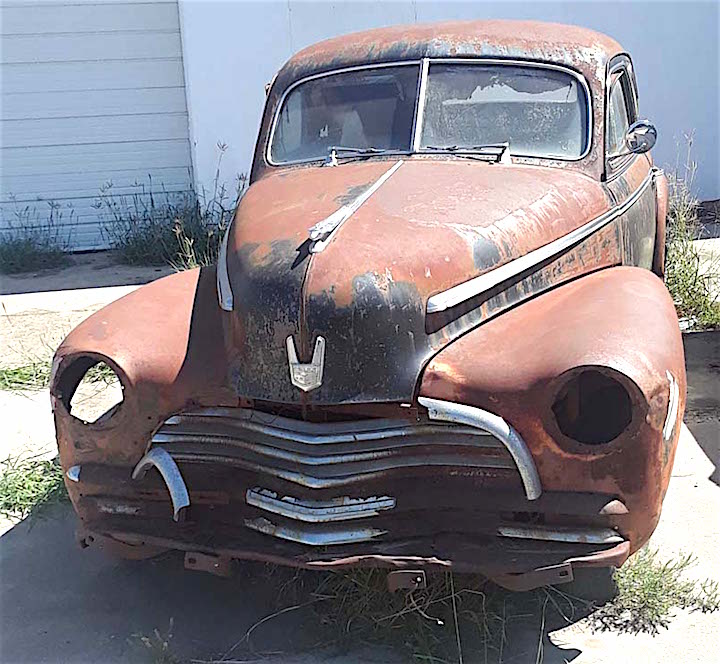
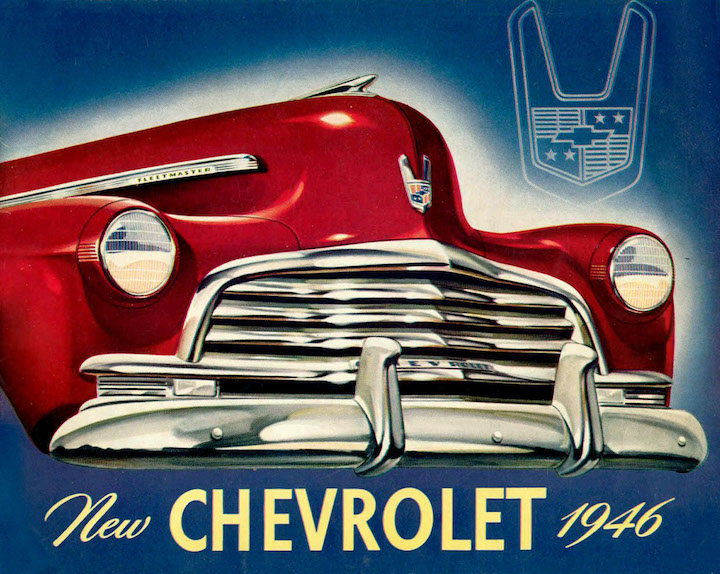
CHEVROLET (1946) — Chevrolet was the number two automaker behind Ford in 1946, the first full year of sales following World War II. Chevrolet sold 398,028 cars, about 70,000 fewer than Ford. It would take Chevrolet a couple years to ramp up to the one million units it sold prior to the war in 1941. This example of a '46 Chevrolet was found in an abandoned condition in Texas. (Photo by Peter Hubbard)
CHEVROLET (post WWII) — This post-World War II Chevrolet wrecker watches the passing parade on old Route 66 in Carterville, Mo. First available in June 1947, the "Advanced Design" trucks were sold with various minor changes over the years until March 1955,. (Photos by Jim Meachen)
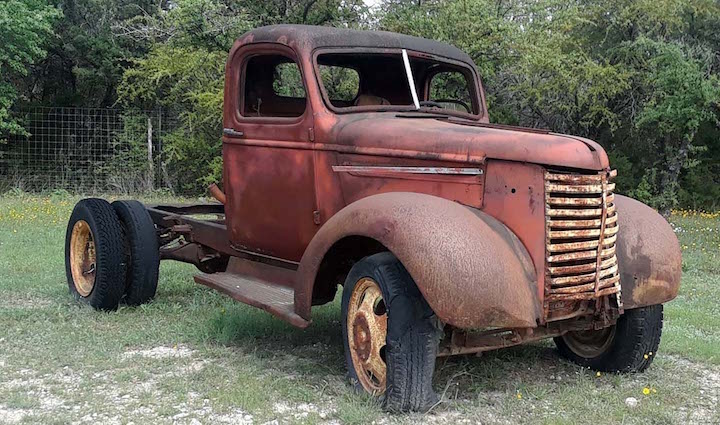
CHEVROLET (1939) — This 1939 Chevrolet work truck was found resting proudly in retirement on the side of a road in the hill country of Texas stripped of its lights and bumper. 1939 was one of the last model years Chevy trucks and medium-duty vehicles shared an appearance with Chevrolet passenger coupes and sedans. (Photo by Peter Hubbard)
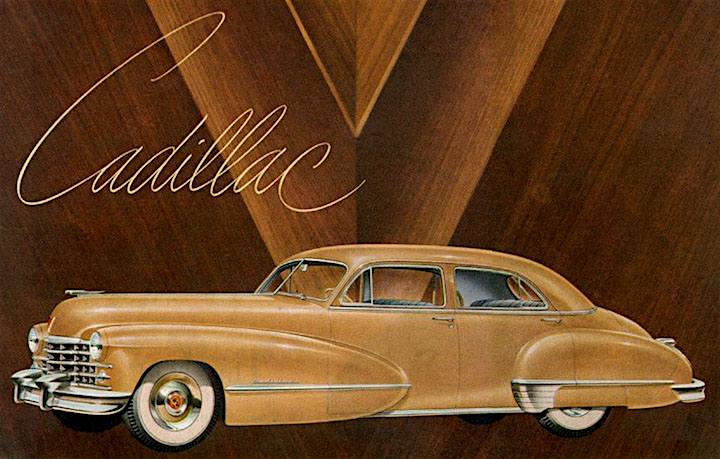
CADILLAC (1946 or 47) — Cadillac stopped its World War II tank building on Aug. 24, 1945, quickly changed over to cars, and rolled off the first 1946 Cadillac sedan on Oct. 7, 1945. The 1946-47 Cadillacs were basically a continuation of the 1942 models. Production ended shortly after the Peal Harbor attack on Dec. 7, 1941, before being resumed four years later. This 1946-47 sedan was found in a New Mexico salvage yard. The advertising above is for a 1947 model. (Photo by Becky Antioco)
CHEVROLET (circa 1993-1997) — The fourth generation Chevrolet Camaro (1993-2002) remained unchanged from 1993 through 1997 with exterior styling changes coming in 1998. The standard engine from 1993-95 was a 3.4-liter V-6. A 3.8-liter V-6 was introduced for the 1995 model year, and a small block V-8 was standard in the Z28 trim level. The Camaro came with a four-speed automatic or a five-speed manual transmission. This copy of a circa 1993-1997 Camaro was found near White Lake, N.C. (Photo by Jim Meachen)
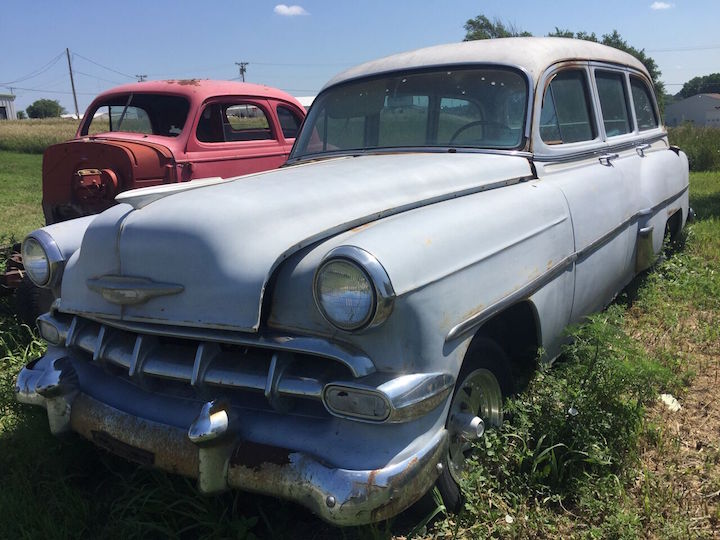
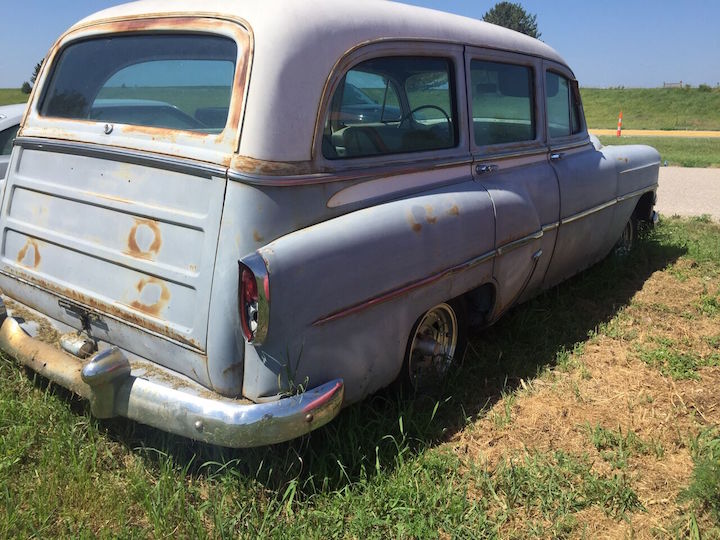
This 1954 Chevrolet 4-door station wagon was discovered in New Mexico. 1954 was the last model year on the platform introduced in 1950 before big changes that were to come in 1955. Available engines were a 3.5-liter (215 cubic inch) inline 6 making 92 horsepower and a 3.9-liter (235 cubic inch) inline 6 making 106 horsepower. Transmission choices were a 3-speed manual or a 2-speed powerglide automatic. Of the 1,150,816 Chevrolets produced in 1954, 56,735 or about 5 percent were wagons. (Photos by Jim Prueter)
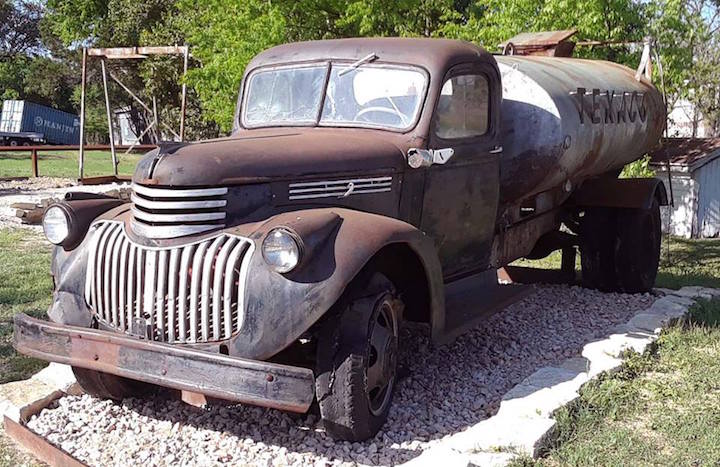
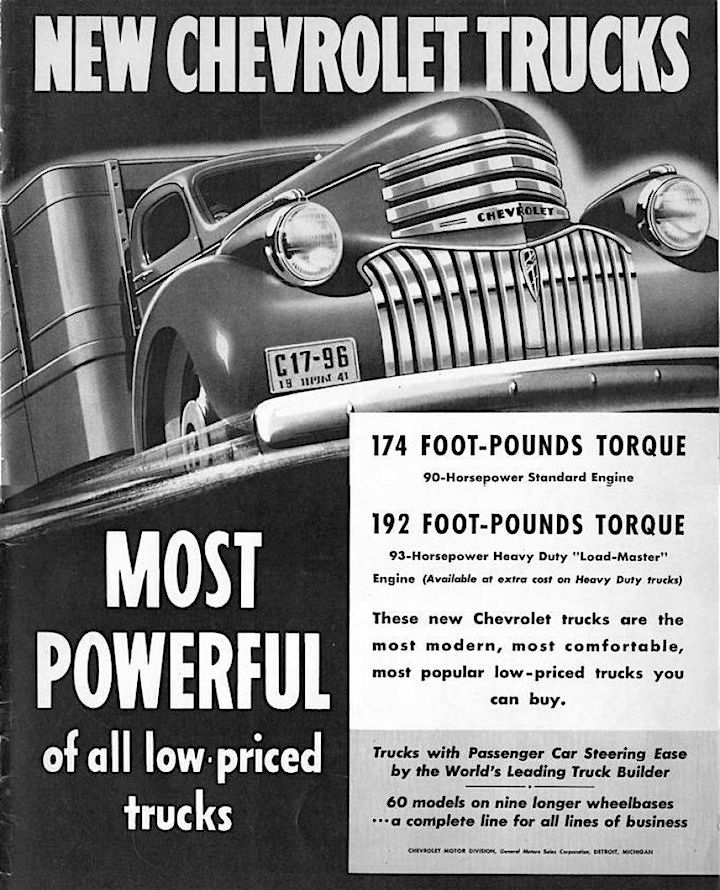
CHEVROLET (1941) — This 1941 Chevrolet AK Series truck hauled Texaco gas in Texas during the 1940s. Chevrolet introduced the new and rather unique truck design in 1941. It was replaced by the Advance Design truck in 1947, introduced as the company's first new truck after WWII. The AK had a "modern front end design" with horizontal bevelled grille bars in the upper section, vertical bars below, and headlamps sunk partly into the front fenders. Peter Hubbard found the truck in Liano, Texas for his Junkyard Dog collection . (Photo by Peter Hubbard)
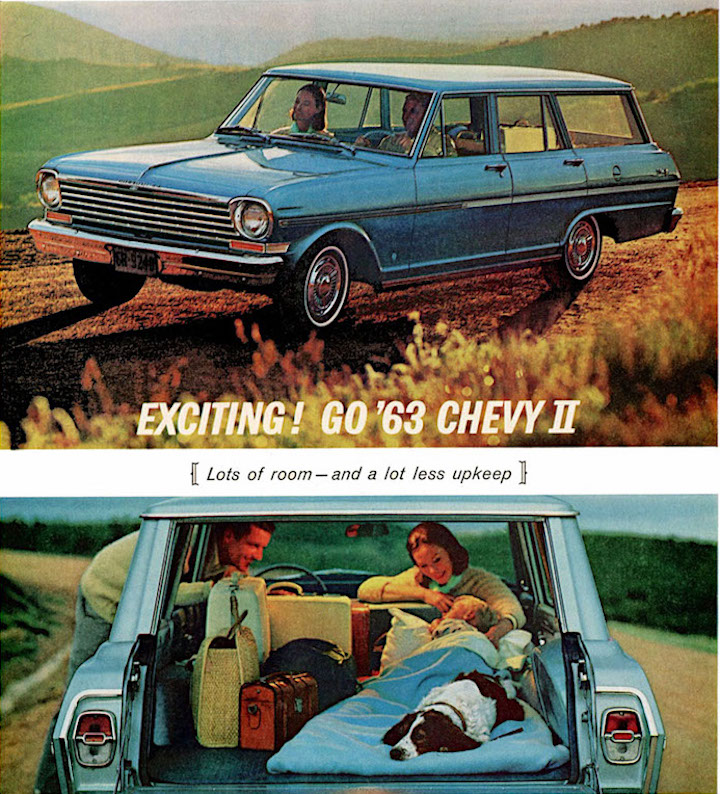
CHEVROLET (circa 1962-65) — This circa 1962-65 Chevy II Nova wagon is obviously no longer in service as a business vehicle. It was found in retirement along U.S. 301 in eastern North Carolina. After the rear-engine Chevrolet Corvair was outsold by the conventional Ford Falcon in 1960, Chevrolet began work on a more conventional compact car that would eventually become the Chevy II. In its first generation, five engine options were offered — a 4-cylinder, two inline 6 cylinders, and two V-8s. Transmission offerings included either a 3-speed or 4-speed manual, and a two-speed automatic. (Photos by Jim Meachen)
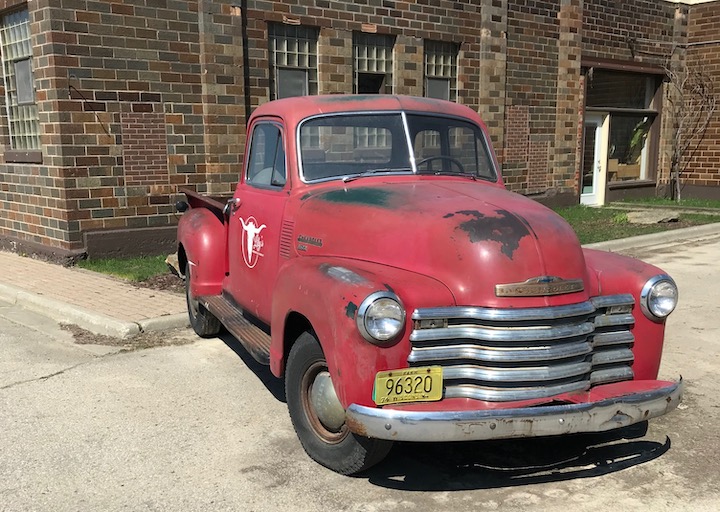
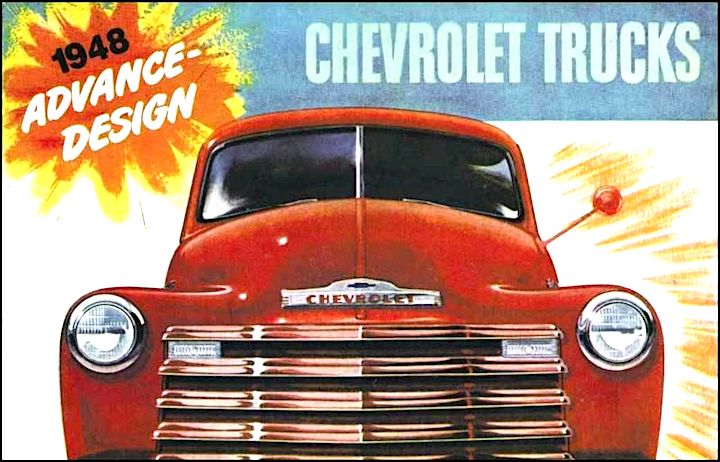
CHEEVROLET (1947-1953) — This Chevrolet "Advance Design" pickup was seen waiting for a driver in Paoli, Wis., a village near Madison. Chevrolet's first new post-WWII pickup was built mostly unchanged from 1947 through 1953. The Wisconsin license plate indicates the pickup was used for duty as a farm truck. (Photo by Ed Meachen)
CHEVROLET CORVAIR (second generation) — This second-generation (1965-1969) Chevrolet Corvair convertible was found sans a top in retirement off Route 66 in New Mexico. The rear engine Corvair was built from 1960-1969. In the first year of the second generation, Corvair sales hit 247,092, but steadily dropped off through the last year of production in 1969 when only 6,000 cars were built. (Photos by Jim Meachen)
A rusty hulk is all that remains of this 1966 Chevrolet in eastern North Carolina. Its small block V-8 is gone, perhaps removed to give new life to another car. 1966 was a good year for Chevrolet with 2.2 million in sales. (Photo by Ralph Gable)
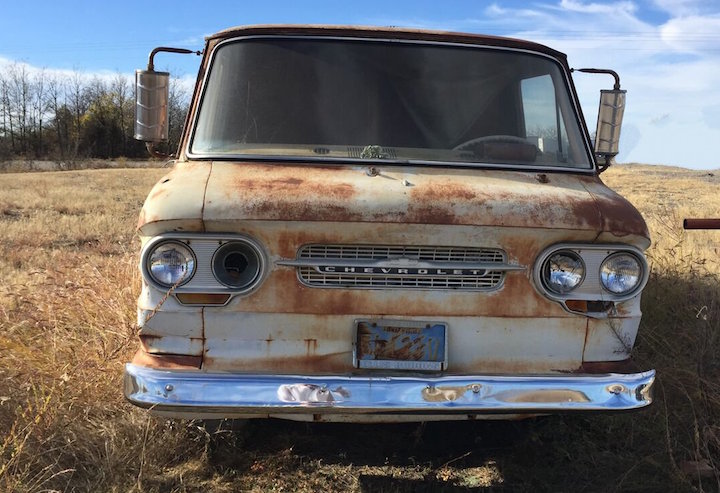
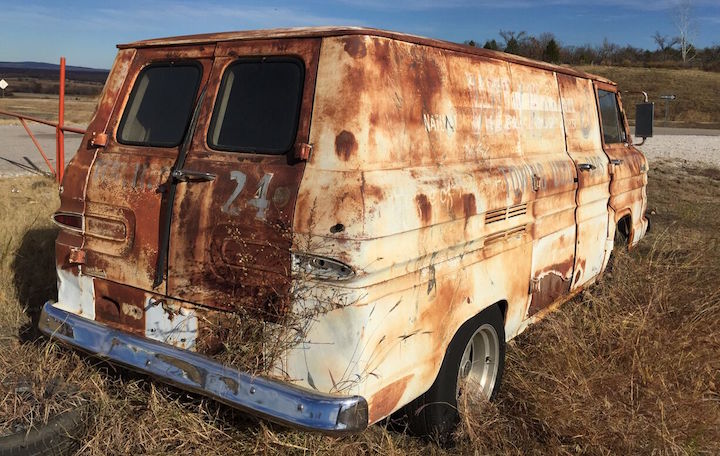
CHEVROLET (Early 1960s) — Chevrolet introduced the rear-engine compact Corvair in 1960 to great fanfare. It took Chevy only one model year to add more utility to the Corvair lineup with panel and passenger vans. The panel van was called the Corvan and the passenger model, the Greenbrier. Both versions sold in good numbers. This example of an early '60s Corvan was found rusting away in Salisaw, Okla. (Photos by Jim Prueter)

CHEVROLET (1958) — Two 1958 Chevrolet sedans sit in the snow in a Cortez, Col., salvage yard. Photographer Peter Hubbard waded through the white stuff to get pictures of abandoned and decaying cars at the Colorado site. The 1958 Chevrolet styling exchanged the 1957 bumper and grille combination for a somewhat more conventional assembly. The new cars also got quad headlights. 1958 was the 50th anniversary of the brand. (Photo by Peter Hubbard)
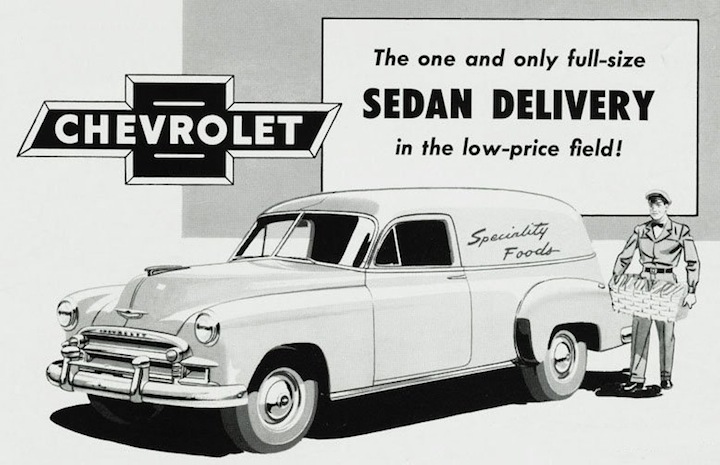
CHEVROLET (1951) — This dissected 1951 Chevy panel van was found in a North Carolina salvage yard. As part of Chevrolet's light-commercial fleet, Chevy produced a car-based sedan delivery with its new iteration beginning in 1950. It was a derivative of the steel-bodied station wagon, but with only two doors and no side windows. It was an immediate hit the first year it was introduced with orders topping 23,000 in 1950. (Photos by John Harper)
CHEVROLET (early '60s) — The Chevrolet Corvair was the only mass market car with an air-cooled rear engine when it was introduced in 1960. This early'60s model was found rusting away along old Route 66 in Arizona. (Photo by Ted Biederman)
CHEVROLET (late '40s) — This lpost-WWII Chevrolet pickup from the late 1940s watches traffic by the side of a South Carolina road in an abandoned state of disrepair. Chevrolet began manufacturing its so-called "Advance Design" pickup truck in 1947. (Photos by Ralph Gable)
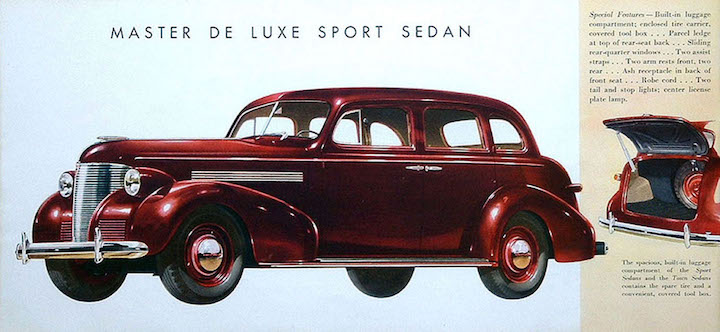
CHEVROLET (1939) — This neglected 1939 Chevrolet was found in Perry, Iowa, in what appears to be restorable condition. Chevrolet had a good pre-war sales year in 1939 of 577,278 units. (Photos by Jim Prueter)
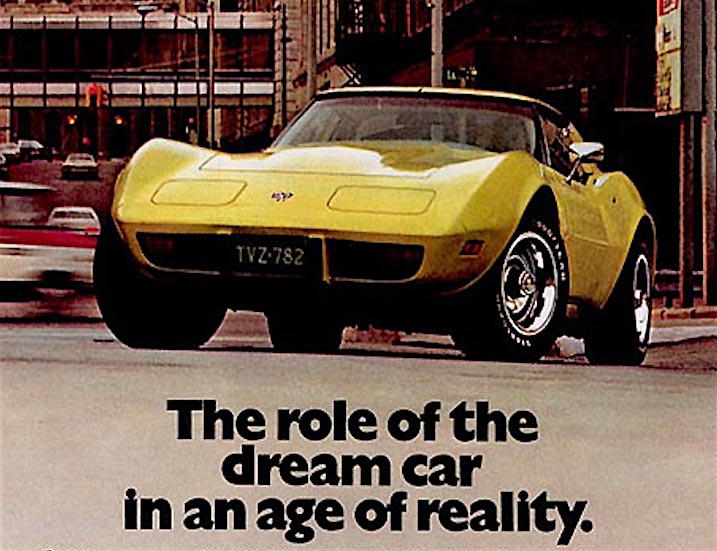
CHEVROLET (circa 1975-1979) — Government-mandated 5 mph crash bumpers were added to the Chevrolet Corvette in the mid-70s. This circa 1975-79 Vette, in need of a new windshield and a thorough restoration, sports those front bumpers. The Corvette was found off U.S. 301 in eastern North Carolina. The 1979 Corvette topped 50,000 units sold for the first time in its history. (Photos by Jim Meachen)
CHEVROLET (circa 1947-1953) — The "Advance Design" Chevrolet trucks entered the scene in June1947, and exterior styling remained virtually the same through 1953. The first major change was with the grille treatment in 1954. This copy of the time period was found in relatively good condition in retirement behind a garage in southeastern North Dakota. (Photos by Jim Meachen)
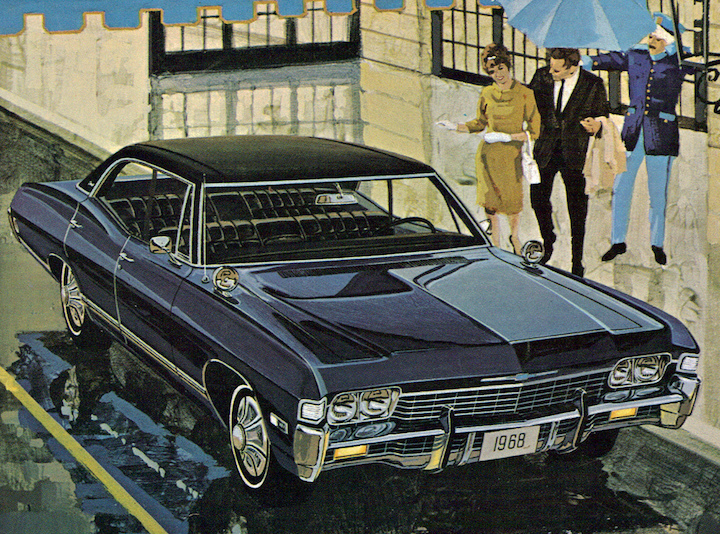
CHEVROLET (1968) — The full-sized Chevrolet Caprice was produced in 1965 as a luxury trim package for the Impala four-door hardtop. Chevrolet expanded the Caprice lineup in 1966 offering a full line of models. It was produced through 1996. This example of a 1968 Caprice was found in North Carolina. (Photos by Ralph Gable)
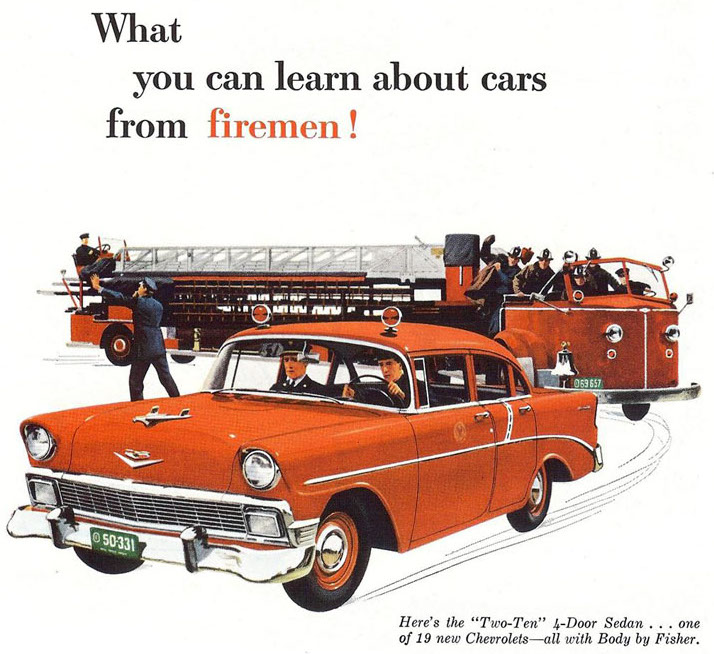
CHEVROLET (1956) — Chevrolet built the astounding number of 624,489 sedans for the 1956 model year. This is one of the survivors from more than 60 years ago found behind a garage in North Carolina. Prices ranged from $1,869 for a base One-Fifty to $2,230 for a top line Bel Air four-door hardtop. (Photos by Ralph Gable)
CHEVROLET (circa 1947-1950) — Someone left this post-war (Circa 1947-1950) Chevrolet pickup permanently parked by the side of the road in the Maggie Valley area of western North Carolina. Chevrolet came out with its new "Advance Design" pickups in June 1947, beating Ford to the punch with the first all-new truck following World War II. (Photo by Nancy Howell)
CHEVROLET (early '60s) This very interesting looking Chevrolet tow truck was discovered in Mayer, Ariz., by Jim Prueter. We seldom come up empty handed when doing research to identify vehicles, but this one has us stumped. It looks a lot like an early '60s Corvair truck, but the front end does not match up with the Corvair. Only certainty — it's from early '60s and it probably hauled a few broken down cars in its day. (Photos by Jim Prueter)
CHEVROLET (1939) This 1939 Chevrolet tow truck was found living in abandoned retirement as an advertising sign for a body shop in Starke, Fla. The 1939 was one of the last model years Chevy trucks and medium-duty vehicles shared an appearance with Chevrolet passenger coupes and sedans. (Photos by Ralph Gable)
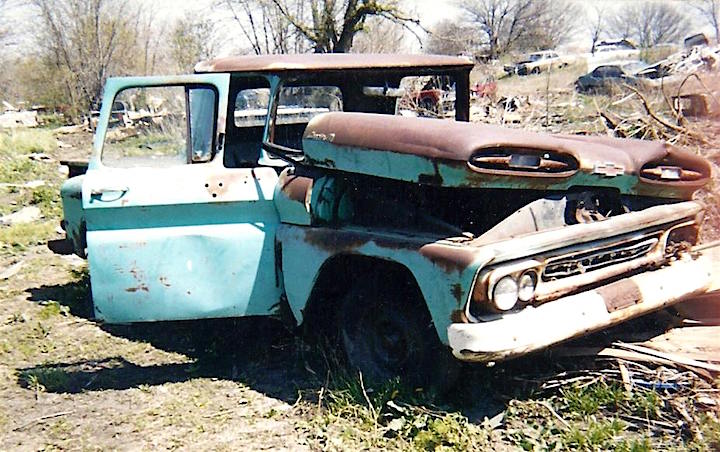
CHEVROLET (1960 C/K) — Chevrolet's 1960-61 pickups wore a distinctive front end design with two large ovals enclosing the parking lights high atop the hood. The 1960 truck wore a new C/K designation — the C indicated two-wheel drive and the K indicated four-wheel drive. Chevy used that name until 1999 when it was changed to Silverado. The first generation of the C/K truck ran from 1960 through 1966 with a new drop-center ladder frame allowing the cab to sit lower. This 1960 pickup was discovered in an Illinois salvage yard by Peter Hubbard.
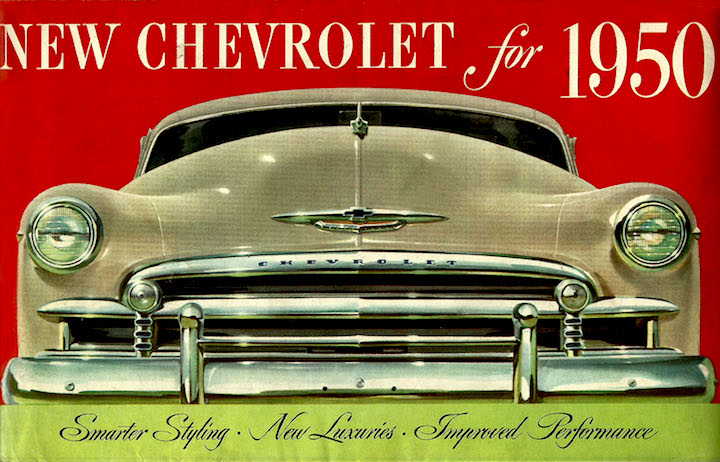
CHEVROLET (1950) — The addition of the Powerglide automatic transmission gave Chevrolet an edge on Ford in 1950. It was a $159 option. A slightly larger version of the long-running "stovebolt" six-cylinder engine came with the new transmission to make up for power loss from the automatic shifter. This 1950 Chevy was found in Rolla, Mo., along Route 66. (Photos by Jim Meachen)
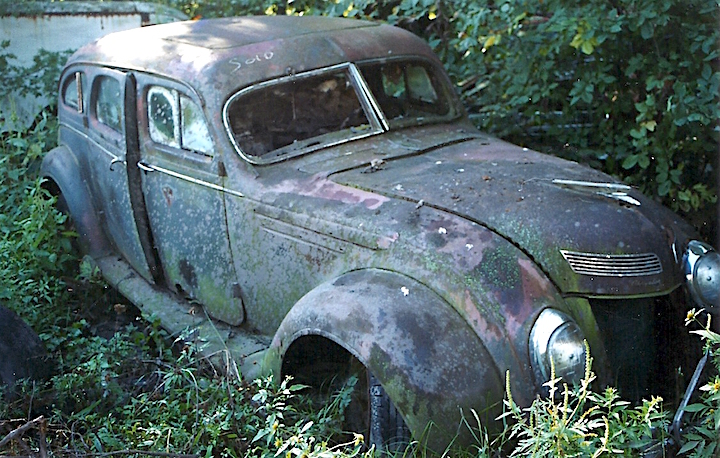
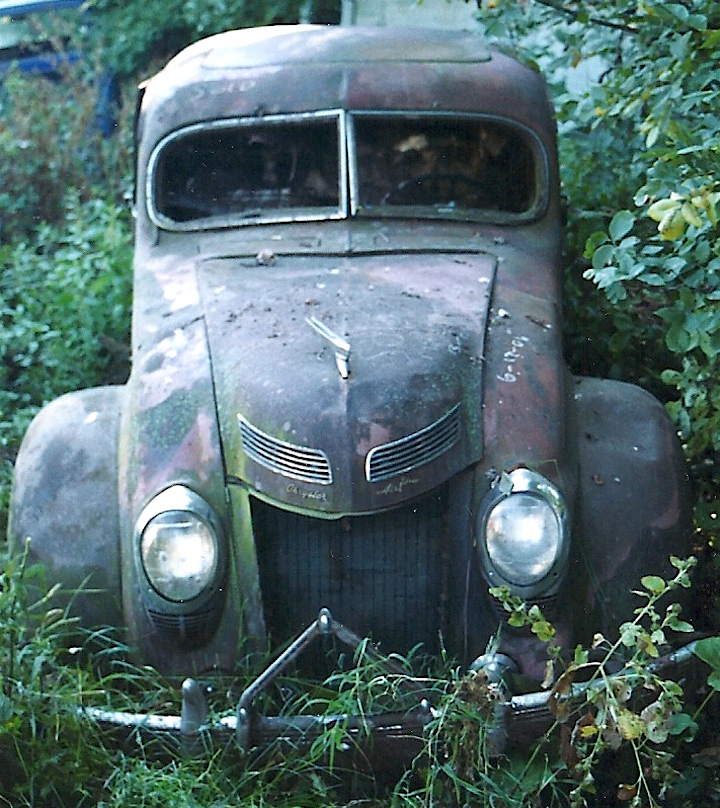
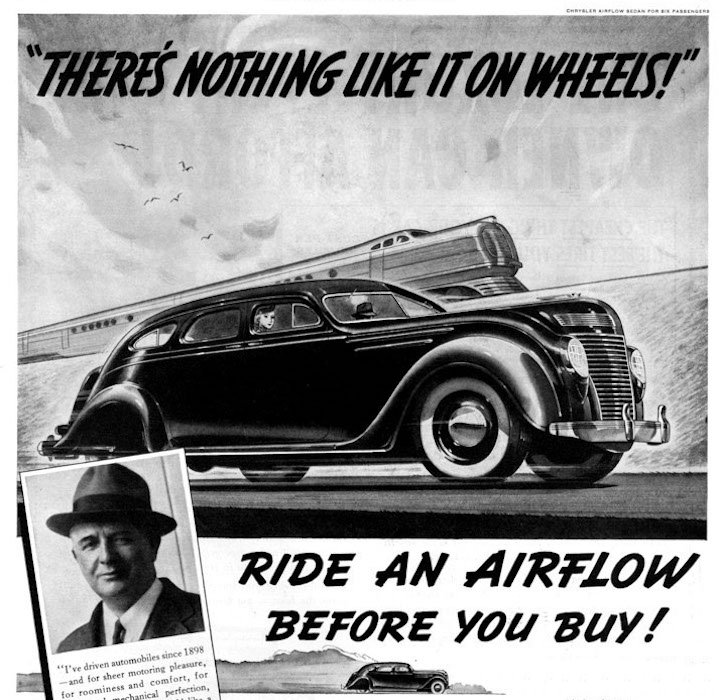
CHRYSLER (1937) — The 1934-37 Chrysler Airflow large sedan was ahead of its time with a streamlined, aerodynamic design. But the sleek-looking mid-30s Airflow simply did not catch on with the public and its short four-year run ended with less than 25,000 total sales. Because of its relative rarity it's hard to find one in the wild, but Peter Hubbard spotted this 1937 model in an Illinois salvage yard several years ago. It could be purchased in five trim levels/sizes starting at $1,245. The ad above is for the 1937 model. (Photos by Peter Hubbard)
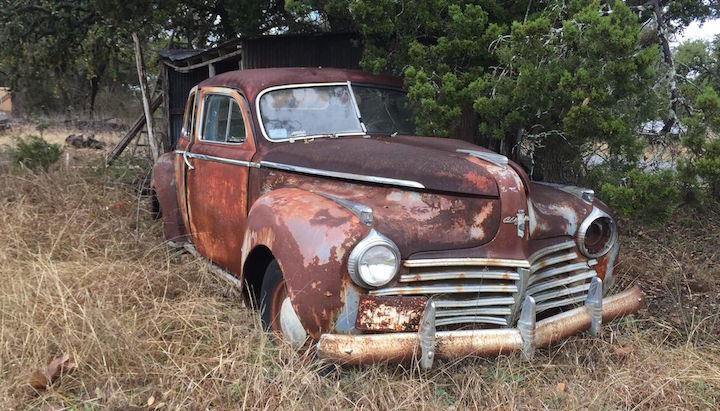
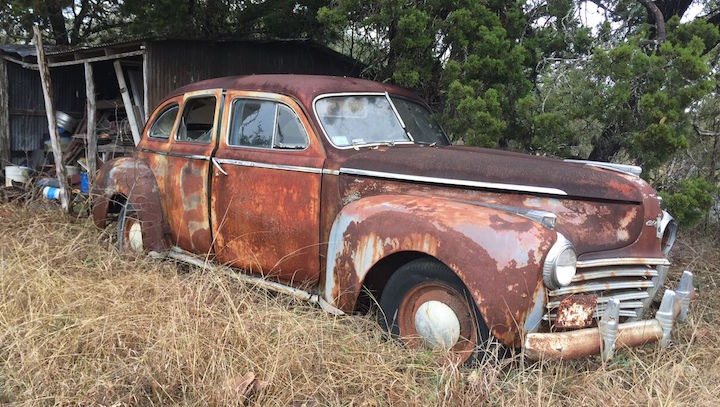
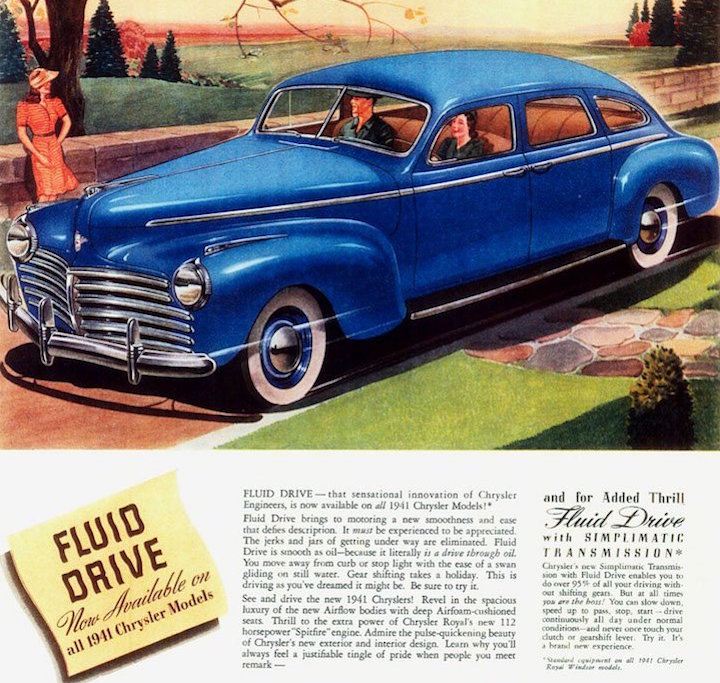
CHRYSLER (1941) — This 1941 Chrysler Town Sedan was found rusting away in a back yard near Blanco, Texas. Chrysler Corp. products were great sellers prior to the war as evidenced by the fact the Chrysler Corp. owned a whopping 24 percent market share, five percentage points more than Ford Motor Company. In 1941, Chrysler models could be purchased for the first time with a semi-automatic transmission that delivered a Lo-Hi shift. Above, a 1941 advertisement touting Fluid Drive. (Photos by Jim Prueter)
CHEVROLET (1936) — Photographer Charles Skaggs found what looks like the remains of a circa 1936 Chevrolet work truck near Lee's Ferry, Ariz. Chevrolet advertising opined that it had made three major improvements for 1936: increased power, reduced operating costs to a "record low," and "modernized its truck design and construction in every important part and feature."
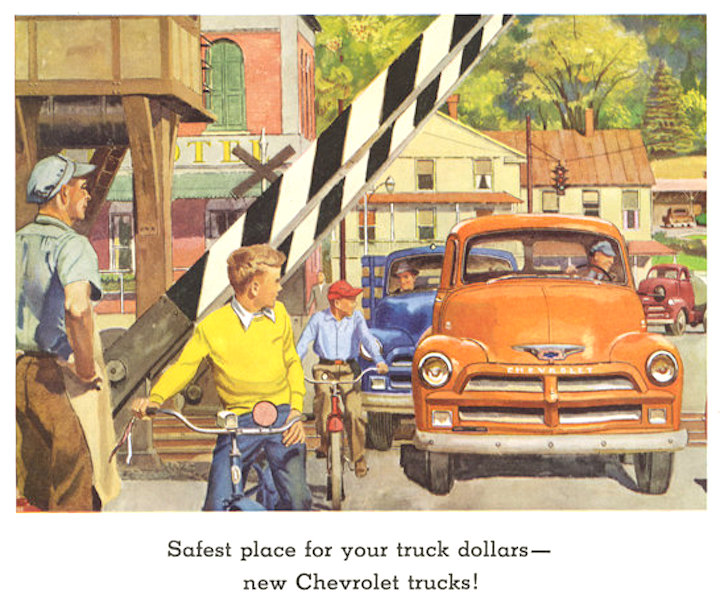
CHEVROLET (1954) — In early 1947, Chevrolet introduced its Advance Design trucks, the first completely redesigned GM vehicles to appear after World War II. Owners of earlier pickup models had asked for a roomier, more comfortable cab with improved visibility and a wider pickup box. They got it all. The Advance Design was built through 1954 before Chevrolet completely overhauled the lineup. The first, and only, major Advanced Design styling and engineering changes occurred with the 1954 models. These models featured a one-piece windshield, an all-new grille and new parking lights. This 1954 model was discovered in Mt. Carmel Junction, Utah. (Photos by Jim Prueter)
CHEVROLET (1971) — The second-generation Chevrolet C/K pickup was built from 1967-1972. The 1971 model was given several styling updates including a new "egg crate" grille design. This 1971 C/K found in North Carolina appears to be a receptacle for junk . One of the updates for '71 was the inclusion for the first time of an AM/FM radio. (Photos by Jim Meachen)
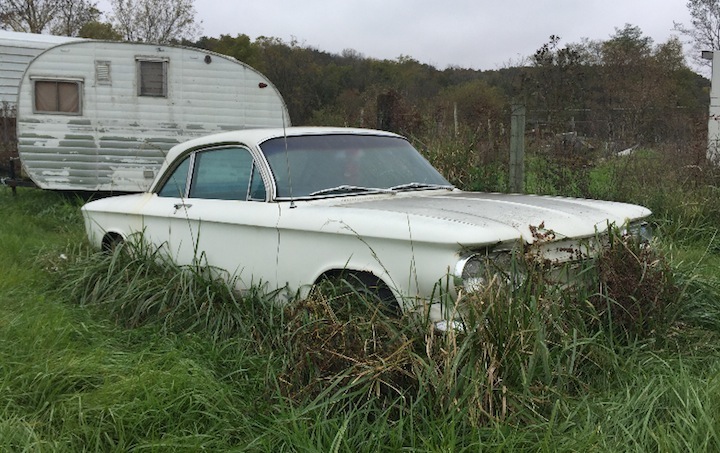
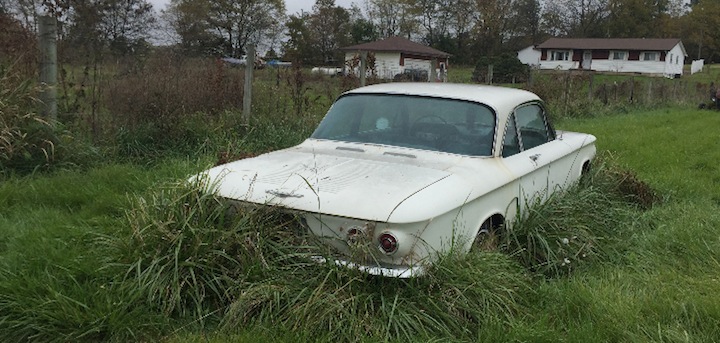
CHEVROLET (1961) — Jim Prueter discovered this 1961 Chevy Corvair two-door coupe ready to hook up with the same period travel trailer in Winterset, Iowa. The small air-cooled rear-engine Corvair was a hit in its first six years of existence selling about 200,000 copies a year.
CHEVROLET (circa 1930) — This circa 1930 Chevrolet truck has survived its "beast of burden" lifestyle in Utah — at least for now. The first Chevrolet trucks went on sale in 1918, the same year that the Chevrolet Motor Company became part of GM, called the Model 490 Light Delivery. (Photos by Jim Prueter)
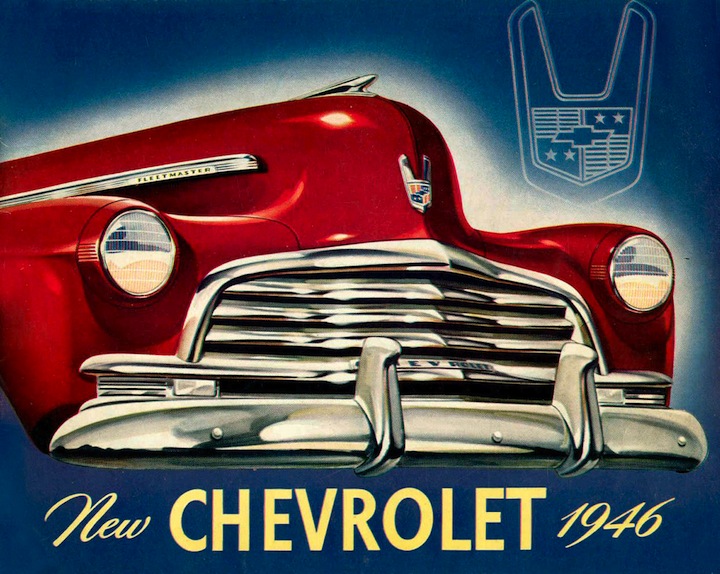
CHEVROLET (1946) — This 1946 Chevrolet sits in a salvage yard, perhaps waiting for a new owner. The '46 Chevrolet was basically a carryover from the 1942 model after production of new cars ceased during the World War II years. All 1946 models relied on a 6-cylinder, 90 horsepower engine carried over from the pre-war years. (Photo by Ralph Gable)
CHEVROLET (1964) — The Chevrolet Impala was introduced for the 1958 model year as top of the line Bel Air hardtops and convertibles. The third generation 1962-1964 featured new "C" pillar styling for all models except the 4-door hardtop. This style proved extremely popular, and contributed to the desirability of the 1962–1964 Impalas as collectibles. These two 1964 Impala SS models found in eastern North Carolina look as if they are ready for restoration. (Photos by Jim Meachen)
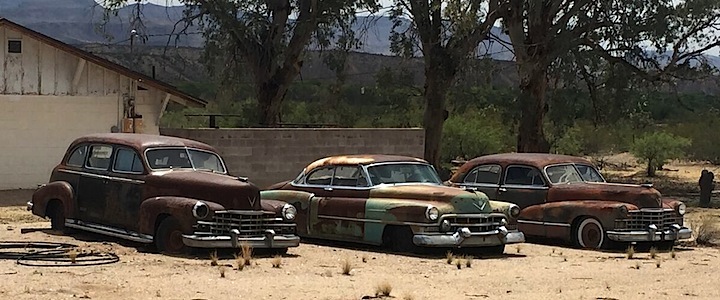
CADILLAC — A 1951/52 Cadillac is flanked by post-war 1946/47 models living in retirement in the southwestern U.S. These cars were the luxury class of North America after World War II. Post-war Cadillacs introduced many of the styling features that came to be synonymous with the late 1940s and 1950s American automobiles, incorporating many of the ideas of General Motors styling chief Harley J. Earl. (Photo by Jim Prueter)
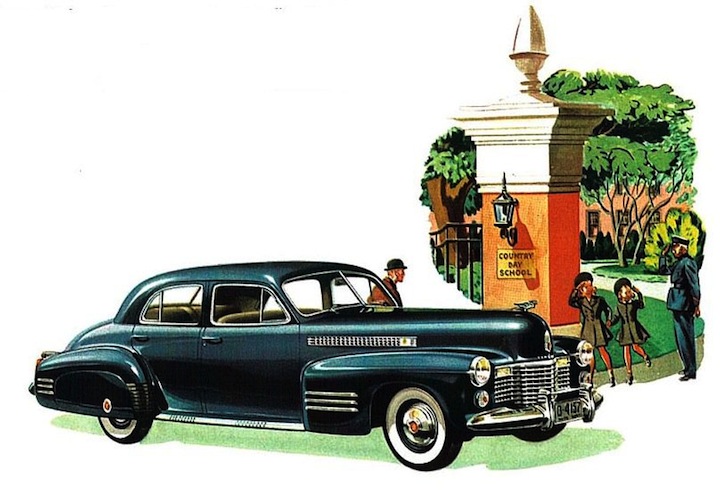
CADILLAC (1941) — This 1941 Cadillac was found in South Carolina in what looks like restorable condition. In 1941 Cadillac introduced the optional Hydra-Matic, the first mass-produced fully automatic transmission, offered the previous year on the Oldsmobile. Notice the Flying Lady Goddess ornament that graced the hood of the '41 model. Above, a magazine advertisement for the 1941 Series 62 Cadillac. (Photo by Ralph Gable)
CHEVROLET (circa 1950) — This 1950s era Chevrolet pickup was spotted in South Carolina perhaps awaiting a good home and a new life. The so-called Advanced Design trucks were the best selling pickups after World War II. (Photos by Ralph Gable)
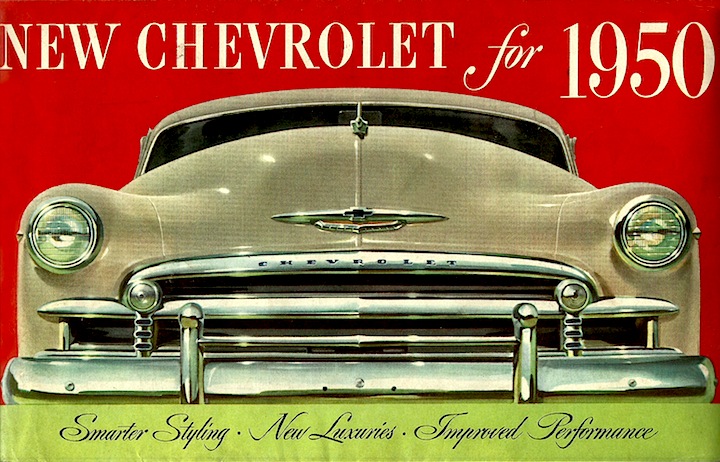
CHEVROLET (1950) — In 1949, Chevrolet presented its first "all new" model since the end of World War II. A lower, sleeker profile, with the lines of the front fenders smoothly blending into the doors to be countered by the rear fenders that continued to "bulge" out of the sides of the car. This slightly updated 1950 Chevrolet sedan was found at the Wagon Wheel Motel in Cuba, Mo. Depending on model, the 1950 sedan sold for $1,450 for the Styleline Special to $1,529 for the Fleetline DeLuxe. (Photos by Jim Meachen)
CHEVROLET (1954) — This 1954 Chevrolet panel truck was spotted in Mexican Hat, Utah, its service as a laundry company delivery vehicle long past. But with a good cleaning and perhaps a little service, it looks as it could spring back into action. (Photo by Jim Prueter)
CHRYSLER LeBAREN (1990) The Chrysler LeBaron became a coupe and convertible from 1987-1995 built on a derivative of the K-car platform. The mid-sized car lost its boxy look from the previous generation with a more aerodynamic design that included covered headlights. Available engines included a base 2.2-liter or a 2.5-liter four-cylinder. A Mitsubishi 3.0-liter V6 was added in 1990. This example was found in a deteriorating condition in North Carolina. (Photos by Ralph Gable)
CHEVROLET (mid 60s) — This mid-60s C10 Chevrolet pickup was discovered rusting away in a small eastern North Carolina town. The 1960 model year introduced the third generation pickup that went through the 1966 model year. The base engine introduced in 1963 was a 3.8-liter140-horsepower inline 6. An optional 165-horsepower 4.8-liter six was available. Chevrolet did away with the curved windshield in 1963, making it easier to differentiate the 1964 through 1966 models. (Photos by Jim Meachen)
CHEVROLET (1956) — This 1956 Chevrolet needs some love to get it out of the neglected and abandoned category. It was spotted in eastern North Carolina behind a body shop garage. (Photos by Ralph Gable)
CHEVROLET (1960) The 1960 Chevrolet Corvair was a revolutionary new design from General Motors, the only mass-produced American car to feature a rear-mounted air-cooled engine. The Corvair was produced from 1960 through 1969 and included a two-door coupe, convertible, four-door sedan and four-door station wagon. This forsaken copy was discovered living among trash and debris in a junk yard. (Photos by Ralph Gable)
CHEVROLET (1937) — This 1937 Chevrolet one-and-a-half ton work truck was spotted serving as yard art near Santa Fe, N.M. In 1937, Chevrolet introduced new trucks with streamlined styling that many still consider the best designs of the era. (Photo by Jim Meachen)
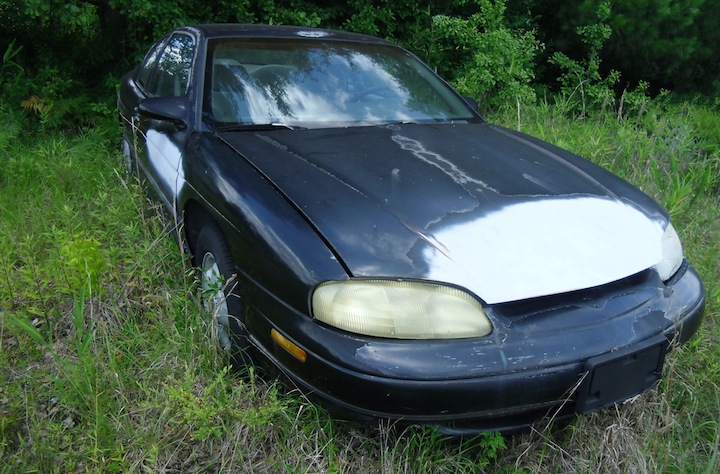
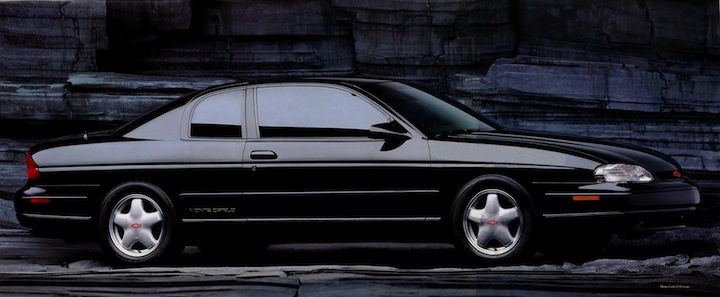
CHEVROLET (Circa 1995) — A two-tone — we are sure the white portion isn't factory spec — fifth-generation Chevrolet Monte Carlo was discovered in a grove of trees in North Carolina. For the 1995 model year, the mid-sized Chevy Lumina was split into two models with the sedan continuing as the Lumina and the coupe reviving the Monte Carlo nameplate. The fifth generation was built through the 1999 model year. Above, an advertisement for the 1995 Monte Carlo. (Photo by Ralph Gable)
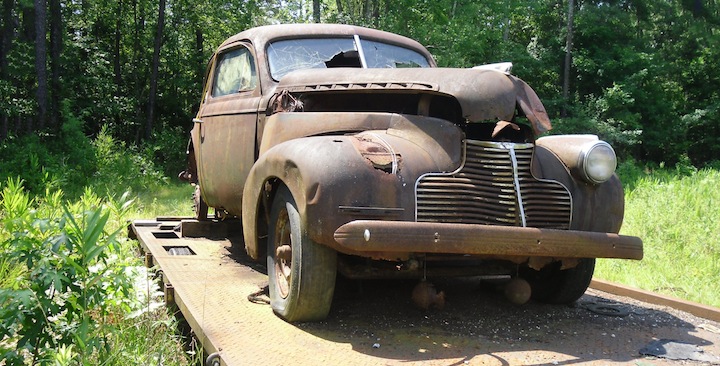
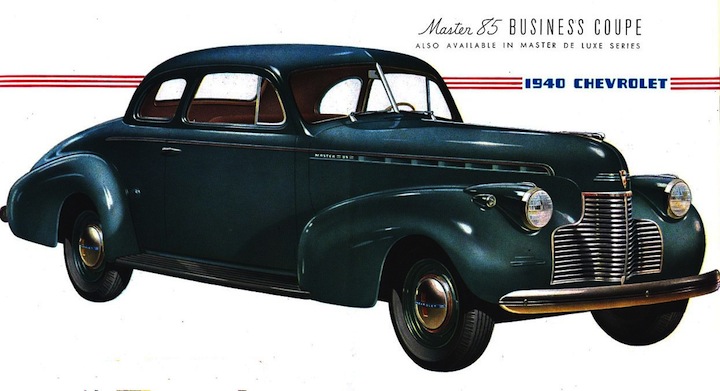
CHEVROLET (1940) — A 1940 Chevrolet coupe has been abandoned on a flatbed in eastern North Carolina, perhaps ready for shipment to a junkyard. Chevrolet was restyled for the '40 model year and the changes resonated with the public with 760,000 produced — 38 percent more than 1939 — in three "series" starting at $659 and ranging up to $934 for the top end Special DeLuxe. (Photos by Ralph Gable)
CHEVROLET (1966) — This 1966 Chevrolet Impala has been the object of cannibalization with its engine bay completely gutted. The Impala was redesigned in 1965 and set an annual sales record of more than one million in the U.S. There were some minor styling modifications for 1966 including new horizontal taillights, which replaced two sets of three round lights. (Photos by Ralph Gable)
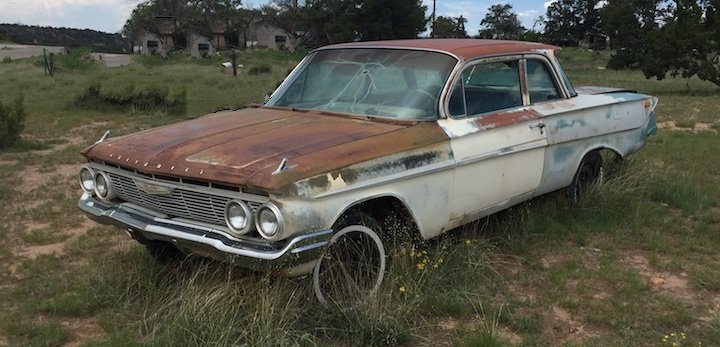
CHEVROLET (1961) — Jim Prueter found this rather attractive but decaying 1961 Chevrolet Biscayne in a New Mexico field. The Biscayne, built from 1958 through 1972, was the least expensive model in the Chevrolet full-size range. Although the Biscayne was generally a no-frills car, it could be purchased with a big-block V-8. (Photos by Jim Prueter)
CHEVROLET (1967) — This very collectable 1967 Chevrolet Impala SS convertible was discovered rusting away in a salvage yard. There were 76,055 Impala SS models built in 1967 and came with one of several versions of Chevrolet's V-8 engines from a 4.1-liter to the monster 454 cubic inch 7.4 liter. (Photo by Ralph Gable)
CHEVROLET (1959) — This 1959 Chevrolet Apache pickup was spotted in a wooded junkyard of old, worn out vehicles. It is one of the Task Force line of pickups built from 1955 through 1959 for Chevrolet and GMC. Chevrolet introduced its innovative small block 265 cubic-inch V-8 in the Task Force series. The new modern styling as well as the innovative V-8 made Chevrolet the best selling truck brand for the second half of the 1950s. (Photo by John Harper)
CHEVROLET (1953) — A beaten and battered 1953 Chevrolet was found peering out of heavy overgrowth in Wilson County, North Carolina. The Chevy got a new design for '53 including the debut of a one-piece windshield. Total car production that year was 398,028. Prices started at $1,524 for a business coupe and topped out at $2,273 for a Townsman eight-passenger wagon. (Photo by Jim Meachen)
CHEVROLET (1950) — This 1950 Chevrolet was discovered in rather good condition living in a field in New Mexico. In 1950 the Chevrolet two-door Styleline Special started at $1,390 and came with an inline six-cylinder engine making 92 horsepower. (Photo by Jim Prueter)
CHEVROLET (1961) This 1961 Chevrolet Impala bears the inscription "Jim Rathman Chevrolet" with the number 11. Rathman was a well-known race car driver and the winner of the 1960 Indy 500. A native of Florida, Rathman opened a Chevrolet dealership with his winnings. This rare Chevy was spotted in Stark, Fla. The Chevy was restyled for 1961 with a trimmer, more flowing design. (Photo By Ralph Gable)
CHRYSLER (1946-1948) — The Chrysler Windsor was a full-sized sedan built by the Chrysler Corporation in the U.S. from 1939 through 1961. The 1942 Windsor under went a refreshening after the war for the 1946 through 1948 model years. It came with a four-speed manual transmission and a 114-horsepower inline 6-cylinder engine. This example of the 1946-48 models seems to be in restorable condition getting some protection from the elements inside a shed. (Photos by Jim Meachen)
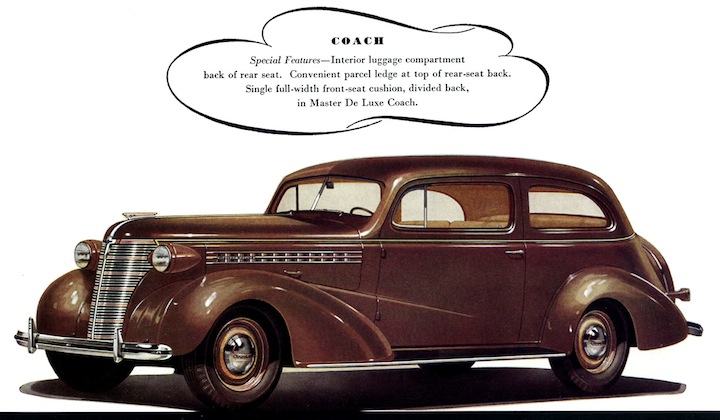
CHEVROLET (1938) — This relatively well preserved 1938 Chevrolet two-door sedan, minus a rear window and sporting a smashed-up grille, was discovered in Ellendale, N.D. The Chevrolet was redesigned for the 1937 model year, so styling changes were few for 1938, but did include a reworking of the grille. The volume-leader in 1938 was the Master DeLuxe Town Sedan, which sold for $750. (Photos by Jim Meachen)
CHEVROLET (1959) — The most interesting aspect of the 1959 Chevrolet was its "bat wing" fins, which took the popular late-50s tail fin design in a slightly new direction. This copy is slowly rusting away in a western North Carolina yard. (Photos by Ralph Gable)
CHEVROLET (1949-50) — This 1949-50 Chevrolet work truck has been stored away, it's useful life long ended. This style Chevy came with several straight six engine configurations in three-quarter ton format and commanded new-vehicle prices ranging from $1,060 to $1,435. The Chevrolet truck was restyled in 1947, the first all-new truck since before World War II. (Photos by Ralph Gable)
CHEVROLET (1957) — This 1957 Chevrolet station wagon has been stripped of its manhood (i.e. engine) and has been left to rust into oblivion behind an auto repair shop. The '57 Chevy is one of the most sought-after classic cars. It was available in two-and four-door sedan formats, two- and four-door hardtop, convertible, station wagon and delivery vehicle. It came with a choice of an inline 6 and two V-8 engines making 140, 162 and 185 horsepower respectively. More than 1.5 million copes were sold. (Photo by Ralph Gable)
CHEVROLET — This shell of a 60s-something Chevrolet Corvette was spotted in a grove of trees outside San Diego. Perhaps someone had plans for it that never materialized. And we figure it might still be resurrected into a useful commodity. (Photo by Jim Meachen)
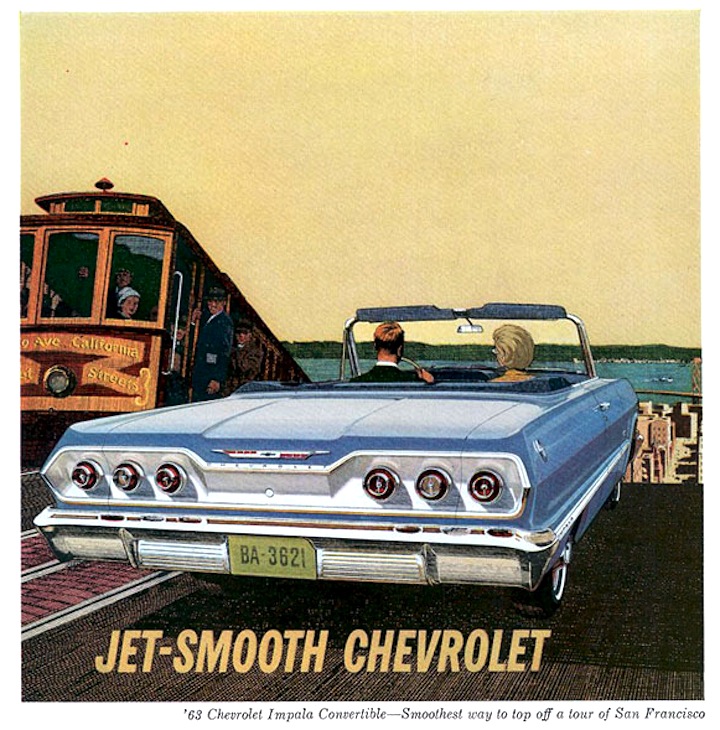
CHEVROLET (1963) — This 1963 Chevrolet Impala looks in restorable condition as it deteriorates in a North Carolina yard. Chevrolet's advertising catch phrase for 1963 was "Jet Smooth," perhaps because the popular full-sized Chevy was restyled with a new grille, bumpers, hood, sculptured side panels, and rear deck contours. The Impala was Chevy's top-of-the-line with the most popular engine choices the small-block 283-and-327-cubic-inch (4.6 and 5.4 L) V8s. (Photo by Jim Meachen)
CHEVROLET (1968) — The Chevy II/Nova compact car was first built from 1962 through 1979. The Nova was the top model in the Chevy II lineup through 1968 when the Chevy II nameplate was dropped in favor of Nova. This 1968 model rests in retirement in the weeds of an abandoned farmyard in eastern North Carolina. The Chevy II was popular in 1968 with 201,000 sold with a price range of $2,222 to $2,419. (Photos by Jim Meachen)
CHEVROLET (1969) — The Chevrolet Suburban has the distinction of being the longest continuous nameplate in the world. The first model hit the market in 1934 as a 1935 model. This fixer-upper is a seventh-generation1969 model and the last generation of the three-door Suburbans. A second door was added to the passenger side with the first eighth-generation Suburban in 1973. (Photos by Jim Meachen)
CHEVROLET (1969) — Even the For Sale sign appears abandoned on what's left of this late '60s Chevrolet C/K pickup. Two inline 6-cylinder engines and a variety of V-8 engines were available in the late '60s. Manual transmission were of three or four gears and automatics were of either two-speed or three-speed configurations. (Photo by Ralph Gable)
CHEVROLET (1973/74) — This 1973/74 Chevrolet Nova was found in a state of retirement in a North Carolina weed field. The Nova was built from 1962 through 1979 and again in a different format from 1985 through 1988. It went through four generations before ending production in 1979. Four engines were available in 1973 including two 350-cubic-inch V-8s, one of which was under the hood of the pictured model. A two-barrel carburetor version made 145 horsepower and 255 foot-pounds of torque. A bigger four-barrel carburetor version pumped out 175 horsepower and 260 foot-pounds of torque. The car proved popular in the '70s with 369,509 copies sold in 1973 and 390,536 in 1974, the peak year of its 18-year production run. (Photos by Jim Meachen)
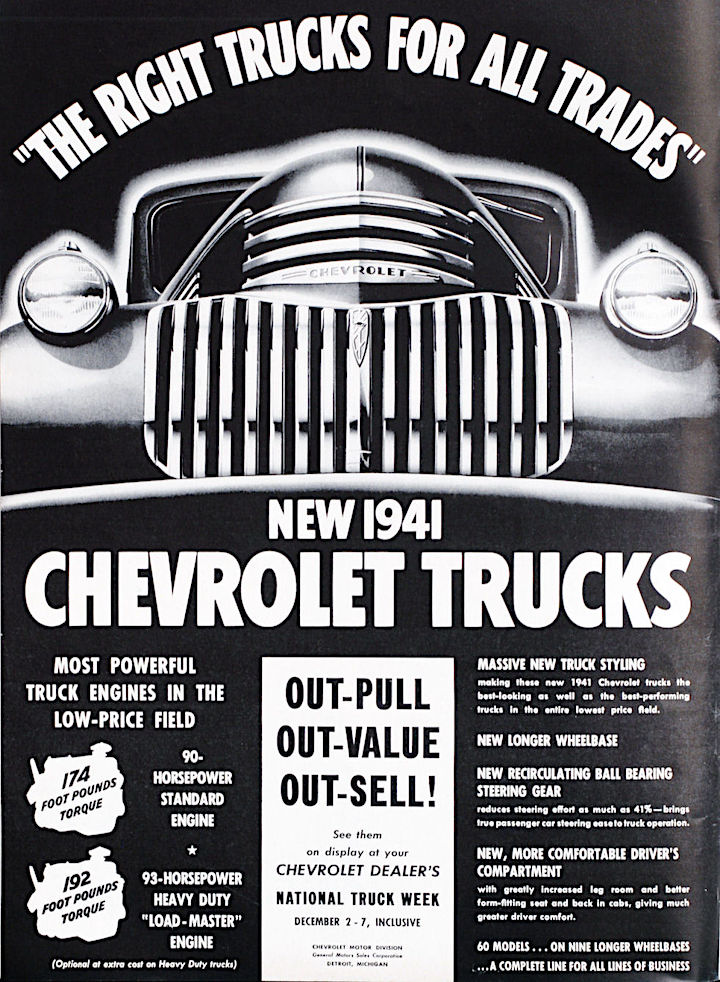
CHEVROLET (1941) — This 1941 Chevrolet truck looks quite classy as yard art near Portland, Ore. This style truck — nicknamed "Art Deco" — entered the marketplace as a '41 model and was built until the start of World War II in December 1941, and then resumed production without changes for 1946. Chevrolet introduced an all-new design for the 1947 model year. (Photos by Jim Meachen)
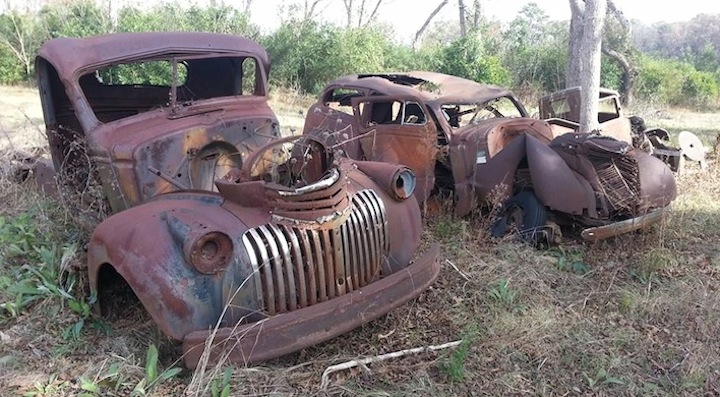
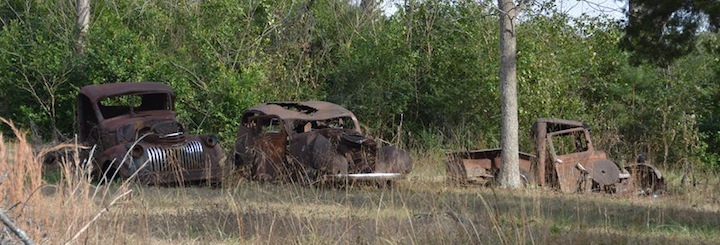
CHEVROLET (1941) This Georiga "yard art" was spotted near Albany, Ga., by automotive writer and photographer Jeffrey Ross. On the left is a 1941 Chevrolet pickup, dramatically restyled for 1941 with combination horizontal and vertical grille bars. One new feature of the Chevrolet pickups was a crank-open windshield for ventilation. We are not sure of the car brand, but it was from the late '30s. (Photos by Jeffrey Ross)
CHEVROLET (1949 or 1950) — Chevrolet restyled its pickup truck in 1947, the first all-new truck since before World War II. The truck was an immediate success and remained relatively unchanged until 1954 when it got its first front-end restyling. Styling cues tell us this truck is either a 1949 or 1950 model. Over one million Chevy pickups were built from 1947 to 1955, which is one reason they are easy to spot rusting away behind a barn or garage. (Photos by Ralph Gable)
CHEVROLET (1939) — This 1939 Chevrolet rests in the Wisconsin snow minus its headlights. The 1939 Chevrolet was a continuation of a new generation that hit the showrooms as a 1937 model. Styling changes for '39 included a revised grille treatment. Prices started at $628 for the Master 85 coupe and ranged up to $883 for a Master DeLuxe station wagon. Chevrolet sold 577,278 copies in 1939, down significantly from 1937 sales of 815,420, but more than the 1938 total of 465,156. (Photos by Jerry Brown)
CADILLAC — This circa 1990-1992 Cadillac Brougham, stretched into a limo, has apparently been permanently parked in a grassy field in eastern North Carolina, its service no longer needed — or wanted. We are sure New Year's Eve partiers and young and excited high school prom participants spent many happy hours inside. (Photos by Jim Meachen)
CHEVROLET (1955) — The 1955 Chevrolet was a turning point for the manufacturer, the first successful Chevrolet with a V8 engine. Though Chevrolet had produced another car with a V-8, the 1938, it had remained in production for only a year. The '55's looks, power and engineering made it a critical success. This copy lives in an overgrown field in eastern North Carolina. (Photo by Jim Meachen)
CHEVROLET (1963) — No wonder it's easy spot a 1963 Chevrolet still on the road, in a junkyard, or rusting away in a field. More than 1.3 million Chevrolet sedans, coupes and convertibles were sold in 1963, which dwarfs today's cars when the "best-selling" title usually goes to a model that can rack up 400,000 sales. These three 1963 Chevys were found near Havelock, N.C. The 1963 model lineup was Biscayne, Bel Air and Impala with prices ranging from $2,322 to $3,170. (Photos by Jim Meachen)
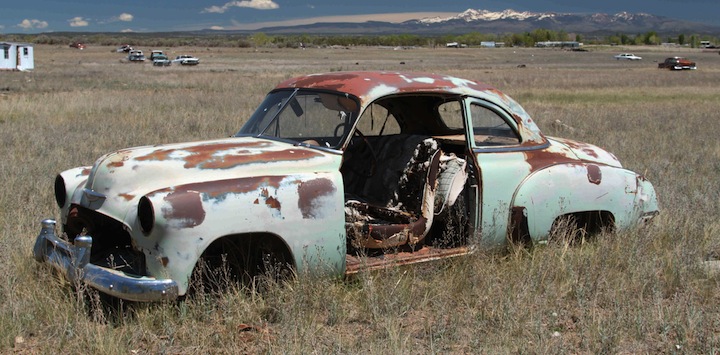
CHEVROLET — This early 1950s Chevrolet is decaying in a Colorado car graveyard. In 1950 the Chevrolet two-door Styleline Special started at $1,390. The upscale Bel Air hardtop moved the price up to $1,740. The two available inline six-cylinder engines came with 92 and 105 horsepower and with a three-speed manual or an optional two-speed Powerglide automatic. (Photo by Jerry Brown)
CHEVROLET (1964) — A new Chevrolet pickup body style was introduced in 1960 and was built through 1966. This 1964 example, complete with a couple of engines stored in the bed and resting in the tall grass in eastern North Carolina, is a stepside model. The pickup came with a base 3.8-liter 140-horsepower inline 6. An optional 165-horsepower 4.8-liter six was available. (Photos by Jim Meachen)
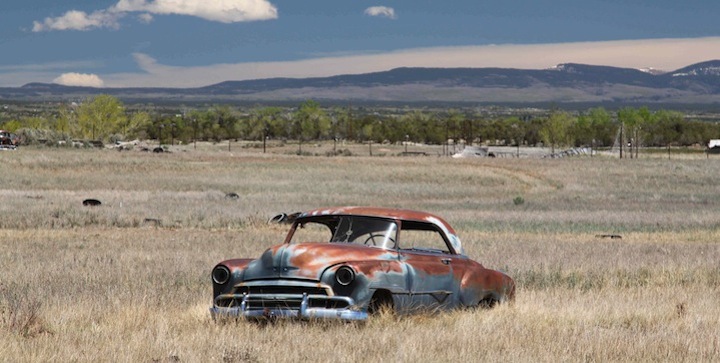
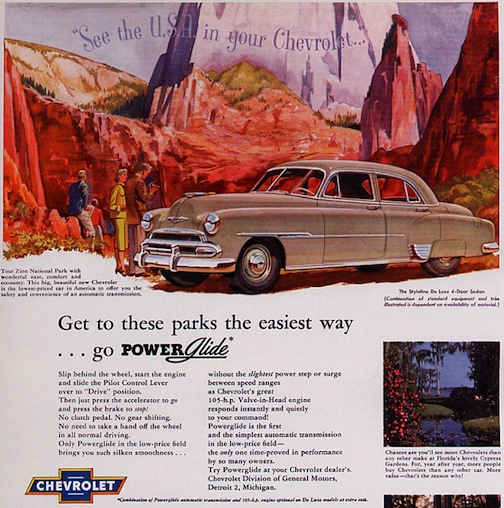
CHEVROLET (1951) — The magazine ad above tells people to "See the USA in your Chevrolet" and this 1951 Chevy's journey has apparently come to an end in Cortez, Colorado. (Photo by Jerry Brown)
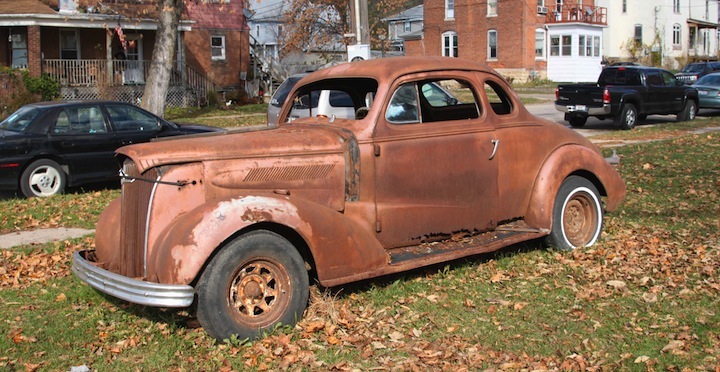
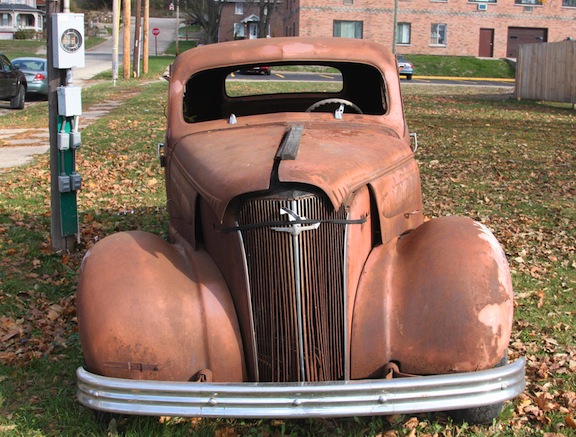
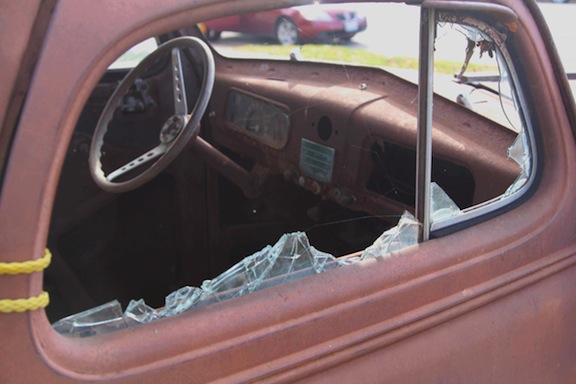
CHEVROLET (1937) — This Chevrolet Master Business Coupe was photographed rusting away in a residential section of Savanah, Ill. The business coupe during the '30s, '40s and '50s was a popular model for Chevrolet. (Photos by Jerry Brown)
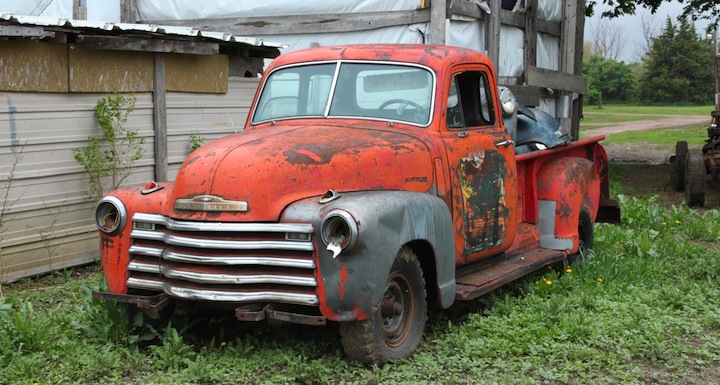
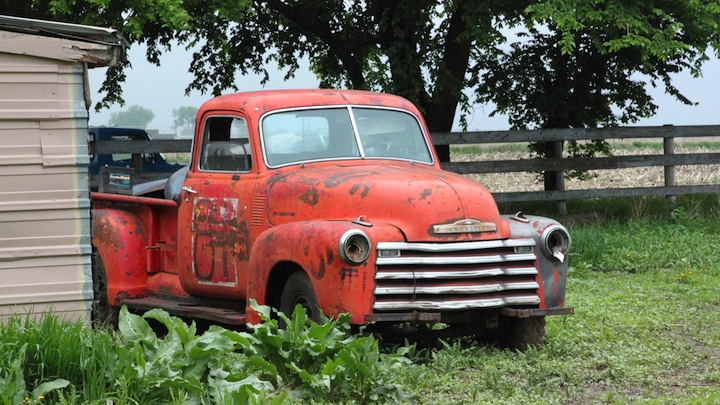
CHEVROLET — A deteriorating 1948-1953 era Chevrolet half-ton pickup was discovered in "retirement" beside a barn in South Dakota. Chevrolet's post-war restyled "Advance Design" truck was introduced in 1947 as a 1948 model and was little changed in appearance through 1953. (Photos by Jerry Brown)
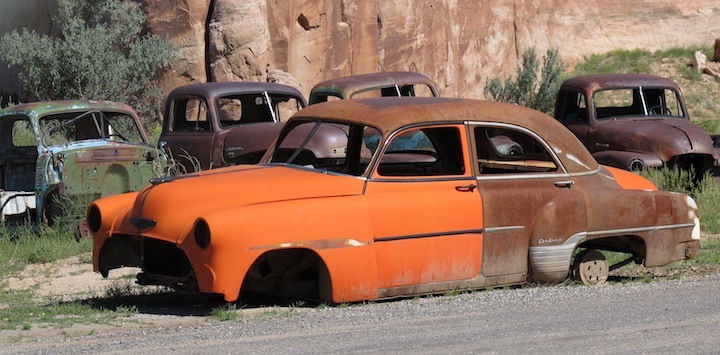
CHEVROLET (1950) — A 1950 Chevrolet, minus its wheels, rests in front of a lineup of equally rusting and stripped-down vehicles on Route 66 at the Arizona-New Mexico border. The 1950 Chevrolet was the most popular vehicle in America that year, with more than 1 million cars and trucks sold. 1950 was a record-setting year for auto sales as the industry was finally in full swing after civilian production had gone on hiatus during World War II. (Photo by B.J. Overbee)
CHEVROLET (1962, 1963) — These rusting Chevrolet trucks, a 1962 model on the left and a 1963 on the right, were found deteriorating in an eastern North Carolina field. The 1963 can be identified with its egg-crate grille appearance. Chevrolet was king of the hill in the early '60s with 483,119 pickups built in 1963, one-third of all the light-duty trucks produced in the U.S. that year. (Photo by Jim Meachen)
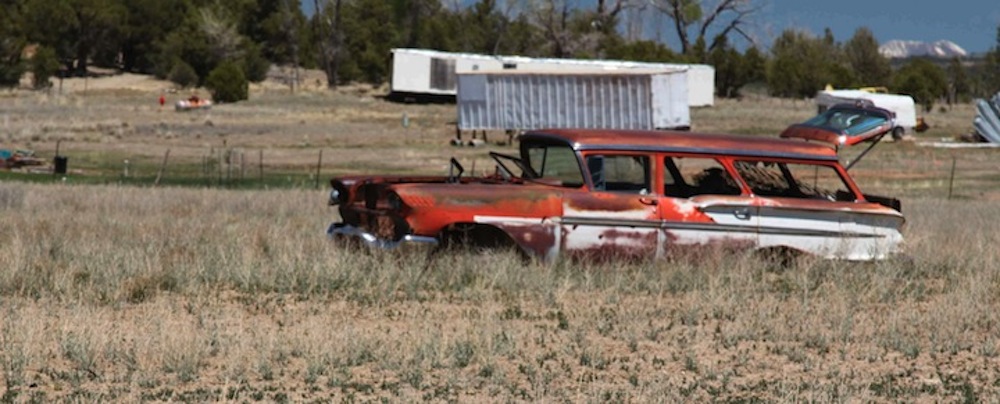
CHEVROLET (1958) — The preferred family hauler of the 50s and 60s? The station wagon. This 1958 Chevrolet, which has been put into "retirement," was one of the most popular wagons. (Photo by Jerry Brown)
CHEVROLET (Early '80s) — This used-up Chevrolet Monte Carlo is burdened with junk. (Photo by Jim Meachen)
CHEVROLET (1969) — This 1969 Chevrolet C/K pickup truck needs some tender, loving care. The second-generation C/K came in two inline 6-cylinder and three V-8 configurations for 1969, the top engine the 396-cubic-inch. It was in the late '60s that General Motors began to add comfort and convenience items to the vehicle line that before had been built just for work purposes. (Photos by Jim Meachen)
CHEVROLET (late '40s) — A late Chevrolet work truck decays in a field of other used up equipment. (Photo by Ralph Gable)
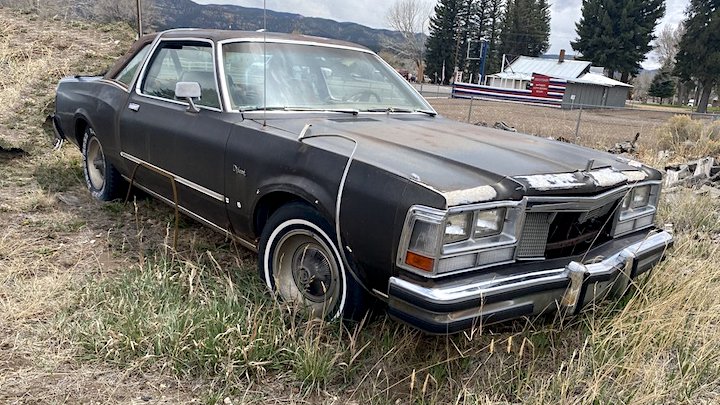
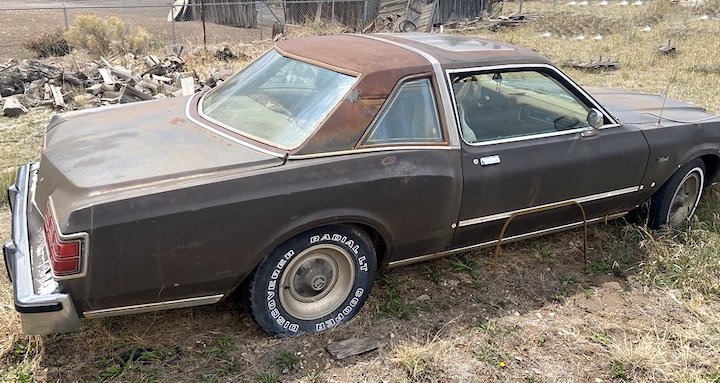
CHEVROLET (Circa late '70s) — This used up two=door coupe, which looks like a late-70s model Chevrolet Monte Carlo, was found deteriorating in Utah. We couldn't determine the exact make and year, but the Monte Carlo was one of several "personal luxury cars" built through the decade of the 1970s. Others included the Buick Riviera, Pontiac Grand Prix, and Chrysler Cordoba. Remember the Chrysler's "rich Corinthian leather" made famous in the Cordoba ads by actor Ricardo Montalban in 1974? (Photos by Jim Prueter)
CHEVROLET (1956) — This neglected 1956 Chevrolet was found behind a storage shed in western Virginia. "The Hot One is Even Hotter" was the advertising slogan that Chevrolet boasted for its 150, 210 and Bel Air series in 1956. With a new Super Turbo Fire V8, the 1956 promised a friskier, sweeter ride with safer passing. Five engines were available including a 140-horsepower inline six and four V-8 engines topping out at 225 horsepower. Chevrolet was the best selling car in the U.S. that year with 1,567,117 sales, topping Ford by 150,000 units. (Photo by Ralph Gable)
CHEVROLET (1966) — There may still be some life in this Chevrolet. (Photo by Jim Meachen)
CHEVROLET (circa 1990) — The usefulness of this Chevrolet S10 has long passed (Photo by Ralph Gable)
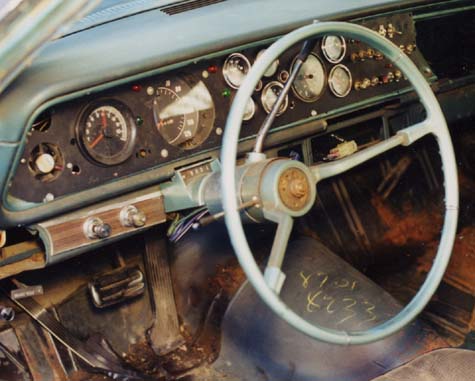
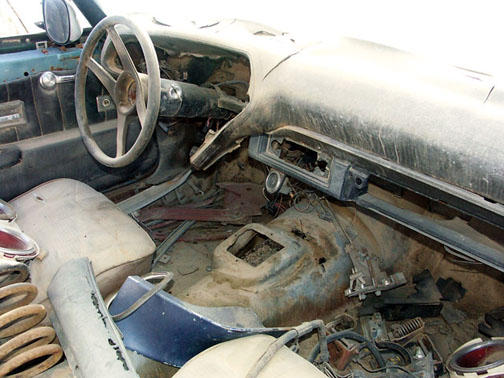
CHEVROLET — Dashboards of dead cars — A Chevy Impala, left, and a 1973 Chevy Camaro.
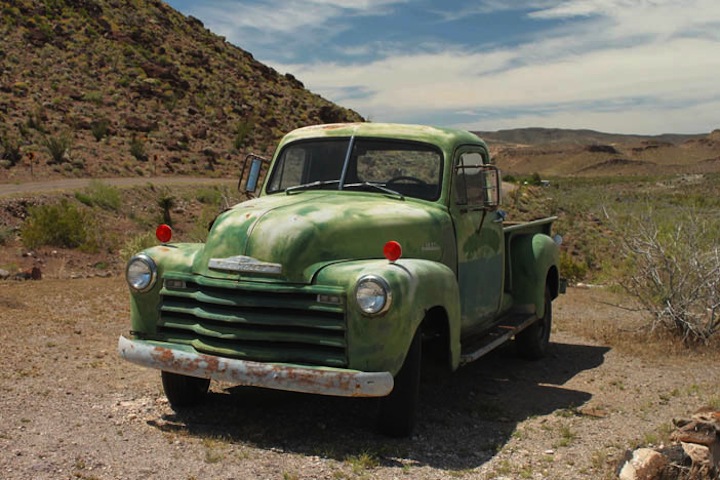
CHEVROLET — Can this 1950/1951 Chevrolet truck be considered abandoned? In very good shape, it was sitting off old Route 66 apparently abandoned, at least for the time being. (Photo by Jerry Brown)
CHEVROLET — We're guessing about a 1957 Chevrolet pickup, shot near the Texas Motor Speedway in Fort Worth. (Jim Meachen)
CHEVROLET (1960) — The Chevrolet Corvair, built from 1960 through 1969, was a unique car for its time. It was the only American-designed mass-produced passenger car to feature a rear-mounted air-cooled engine. This 1960 example of a Corvair coupe still looks restorable. The Corvair also came in three other body styles — a convertible, sedan, pickup, and station wagon. (Photo by Ralph Gable)

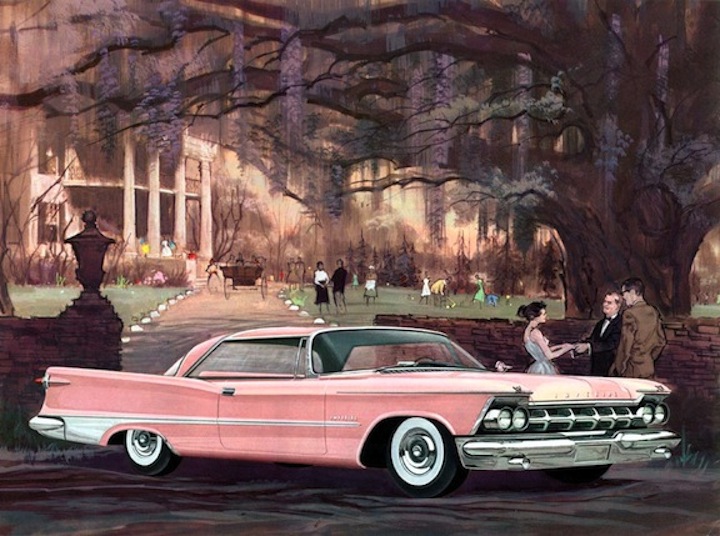
CHRYSLER IMPERIAL — One of the most luxurious cars of the late '50s was the Chrysler Imperial. Only the back two-thirds of one of those Imperials remains in a Colorado field. Above, the glorious Imperial, from a 1959 Chrysler brochure. (Photo by Jerry Brown)
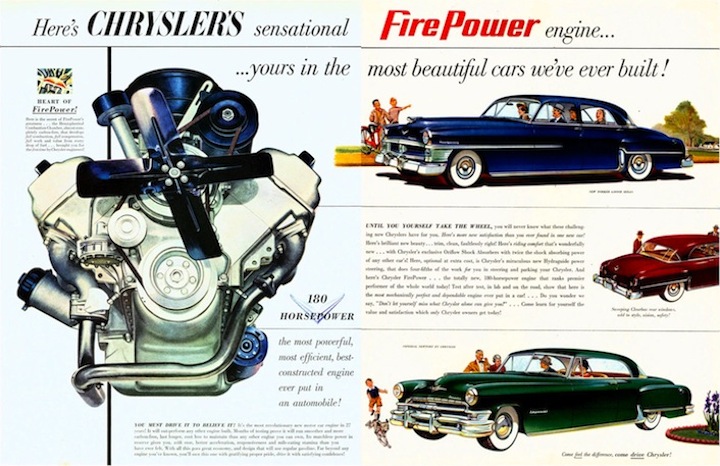
CHRYSLER (1951) — The 1951 Chrysler was the first to be powered by the Hemi V-8, although it was known as the Fire Power V-8 as depicted in the 1951 magazine advertisement above. The 331-cubic-inch engine made 181 horsepower. This abandoned Chrysler, still looking in good form, was found in eastern North Carolina. (Photos by Jim Meachen)
CHRYSLER (1967) This 1967 Chrysler Newport Custom was found near Winchester, Tenn. Chrysler revived the Newport name in 1961 to fill the price gap between Chrysler and Dodge that was created when DeSoto was discontinued. New to the Newport line for 1967 was a more luxurious Newport Custom series available in four-door pillared and hardtop sedans, along with the two-door hardtop. The Newport was available with a 270-horsepower V-8 or an optional 440-cubic-inch V-8 making 325 horsepower. (Photos by Jim Meachen)
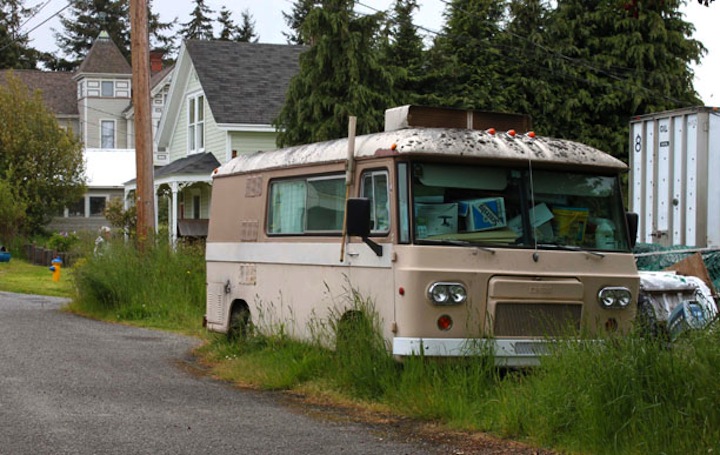
CLARK RV — A late '60s or early '70s Clark RV has probably seen its last duty as a travel vehicle and may spend the rest of its life as a modified storage room for business supplies in Washington state. (Photo by Jerry Brown)
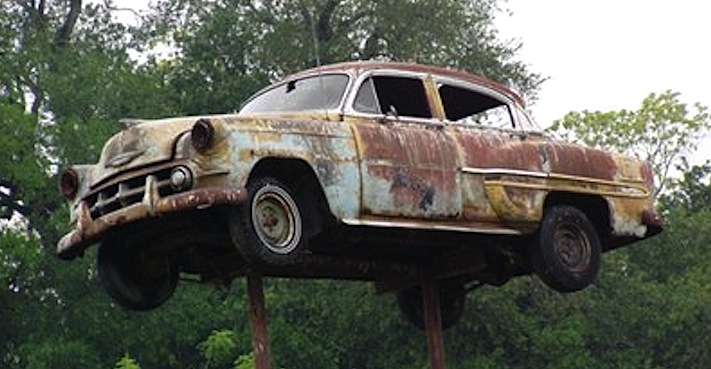
CHEVROLET (1953) — Can a 1953 Chevrolet be "abandoned" if it's on display in the trees? This Chevy rides high on two poles in eastern North Carolina. (Photo by Ralph Gable)
CHEVROLET (circa 1947-1950) — Chevrolet sold boatloads of pickup trucks in the years following World War II so it stands to reason that there are still a great number of late-1940s and early-1950s Chevy pickups littering the landscape in an abandoned state. This used-up example was found in South Carolina lacking a front bumper and much of its paint. (Photos by Ralph Gable)
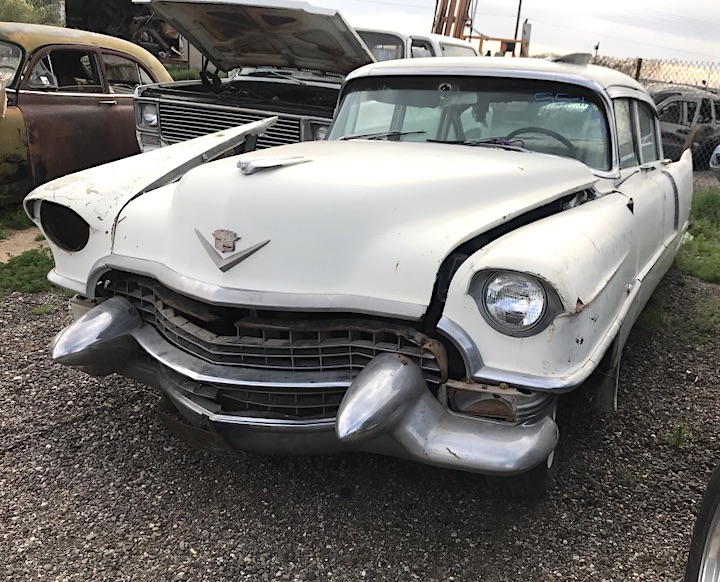
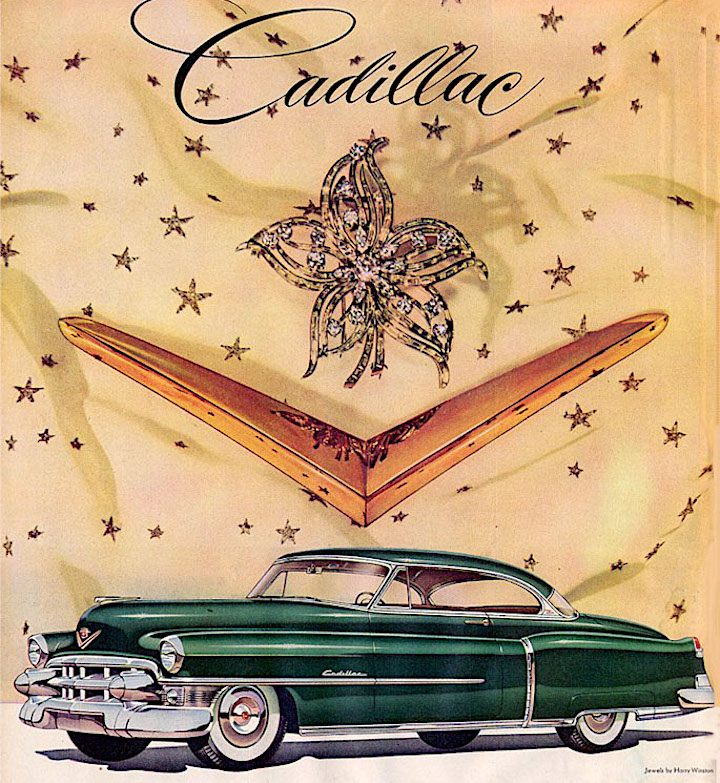
CADILLAC (circa 1951-1953) — This early 1950s Cadillac was found in retirement in a car graveyard in Arizona. In the decade of the '50s, Cadillac introduced numerous styling trends as well as new technology. In 1953, for instance, the "Autronic Eye" was introduced. This feature would automatically dim high-beam headlamps for the safety of oncoming motorists. Above, 1953 Cadillac advertisement. (Photo by Jim Prueter)
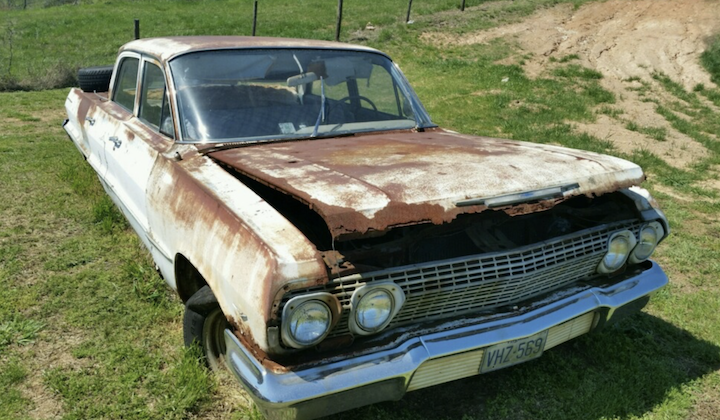
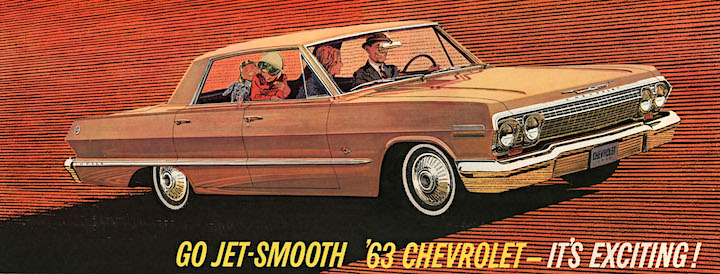
CHEVROLET (1963) — This 1963 Chevrolet was found in South Carolina. The base engine was a 135-horsepower 6-cylinder. It cost $110 more to upgrade to a 170-horsepower V-8. (Photo by Ralph Gable)
